He left in silence, with his sober and reserved style, the miracle man. His is a modern fairy tale cloaked in legend and corroborated by incredible, unimaginable successes. In one lifetime.
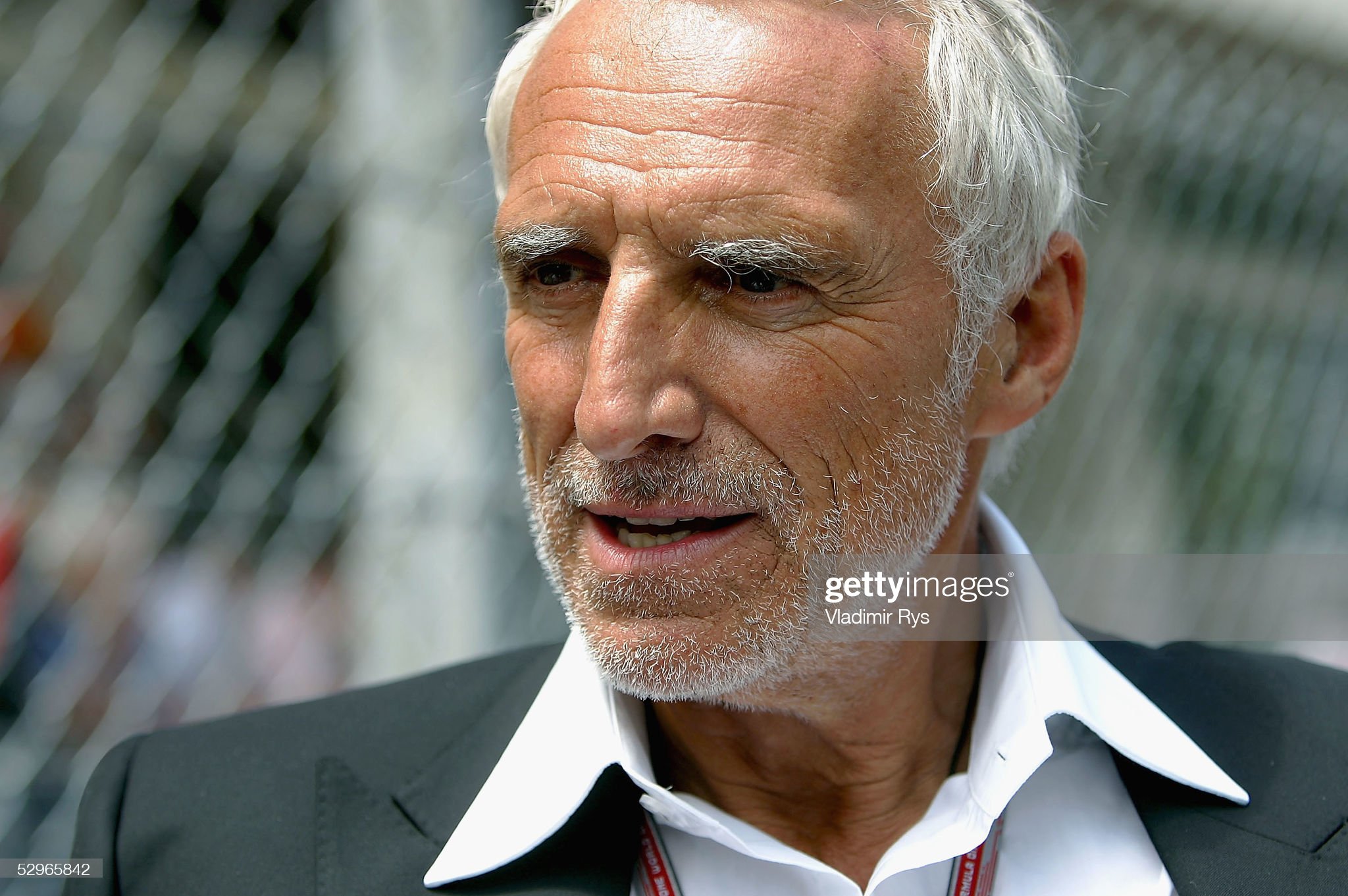
Dieter Mateschitz, head of the Red Bull energy drink company, looks on the start grid before the Monaco Formula One Grand Prix on May 22, 2005 in Monte Carlo, Monaco. Photo by Vladimir Rys / Bongarts / Getty Images.
And this film life is intertwined with extreme sports and Formula 1, which is their maximum expression.
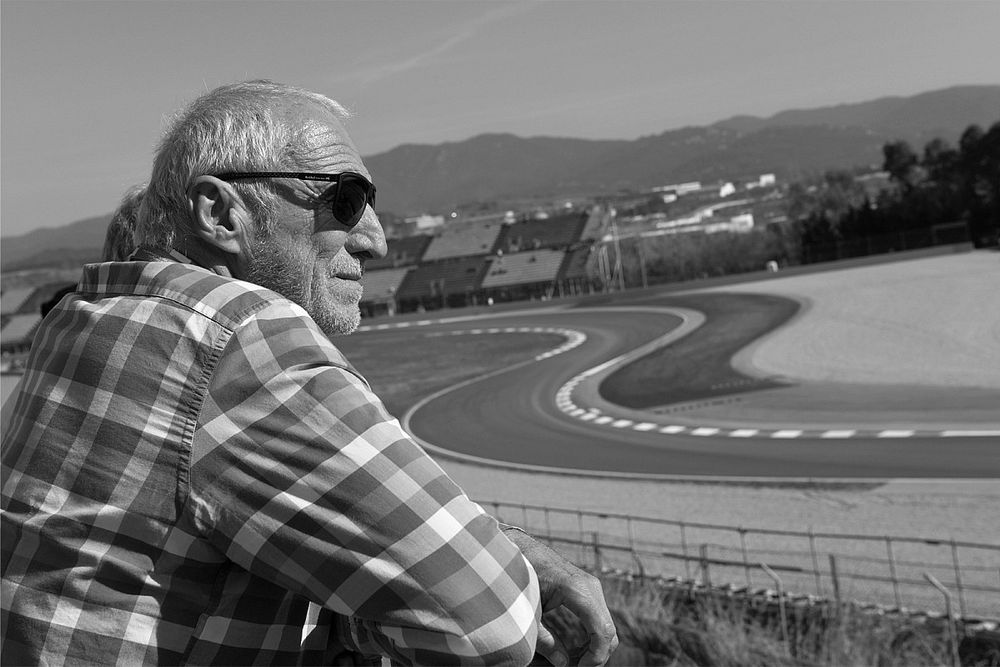
Mateschitz belongs to the category of exceptional men, that of Enzo Ferrari, with whom he has in common the fact that he has achieved very high goals while maintaining the simplicity of wise men and always putting deeds before words.
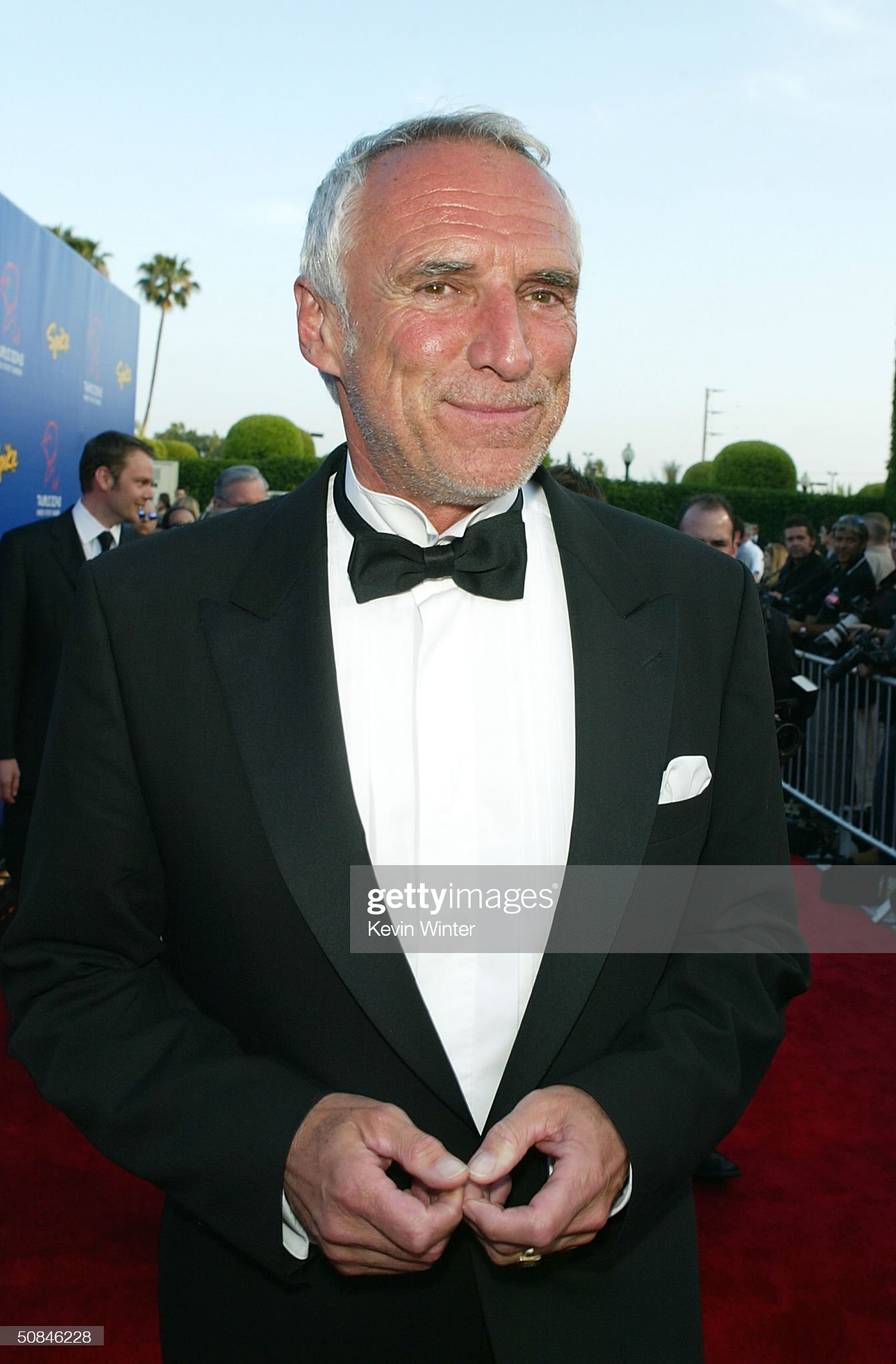
Dieter Mateschitz, head of the Red Bull energy drink company, attends the 4th Annual Taurus World Stunt Awards at Paramount Pictures on May 16, 2004 in Los Angeles, California. Photo by Kevin Winter / Getty Images.
He greets in the midst of success that may have given him a last smile. Danke Didi, you were a great opponent.
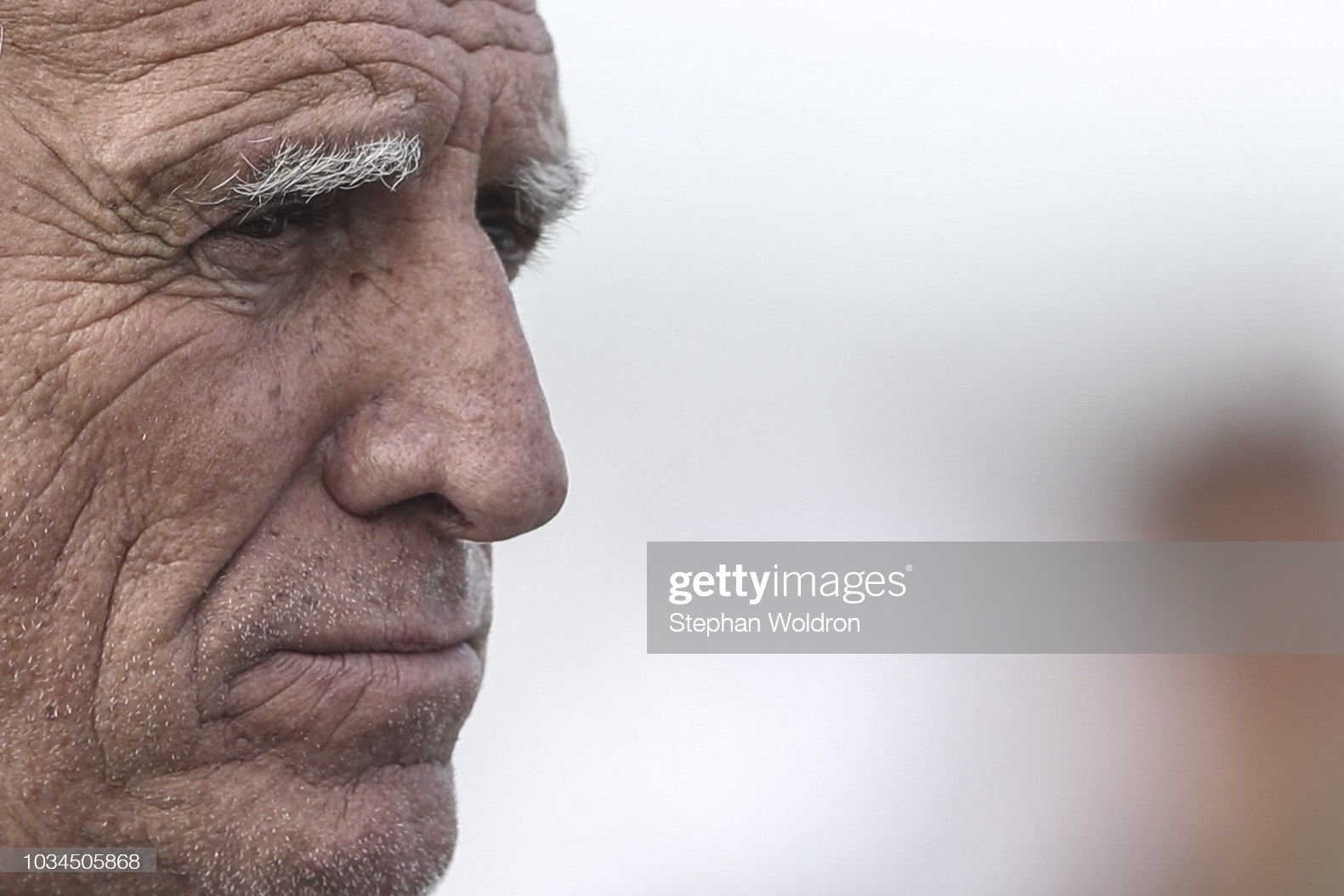
Dietrich Mateschitz during the Red Bull Air Race on September 16, 2018 in Wiener Neustadt, Austria. Photo by Stephan Woldron / Sepa.Media / Getty Images.
The true story of Dietrich Mateschitz. October 24, 2022. By Autosprint. Do you know the difference between a fairy tale and a life that looks like a fairy tale? The end. Only the ending changes. In the first case, the epilogue recites the classic and usual "and they lived happily ever after", in the second, much more realistic, it simply says "he went away peacefully". And this is how Dietrich Mateschitz passed away at the age of 78, struck by an incurable disease that had tormented him for some time, because he told himself his story to the very end, turning dreams into reality and impossible challenges into triumphs.
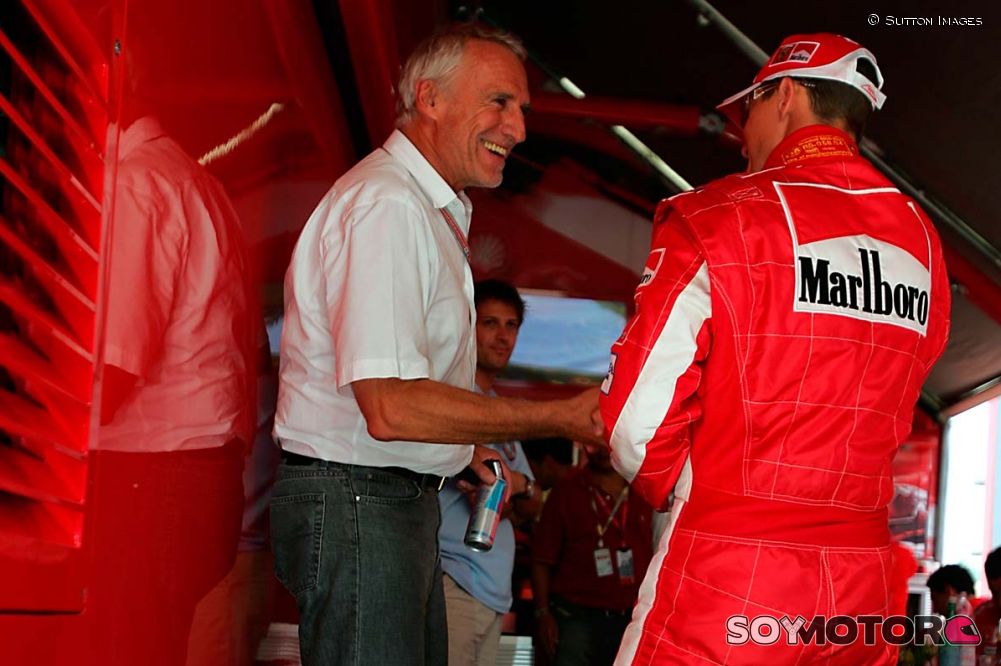
Dietrich Mateschitz with Michael Schumacher, Ferrari.
At all levels. Which ones? Two out of all. Do you know which are the most loved and iconic brands in the world? Well, easy: Coca-Cola and Ferrari, both red.
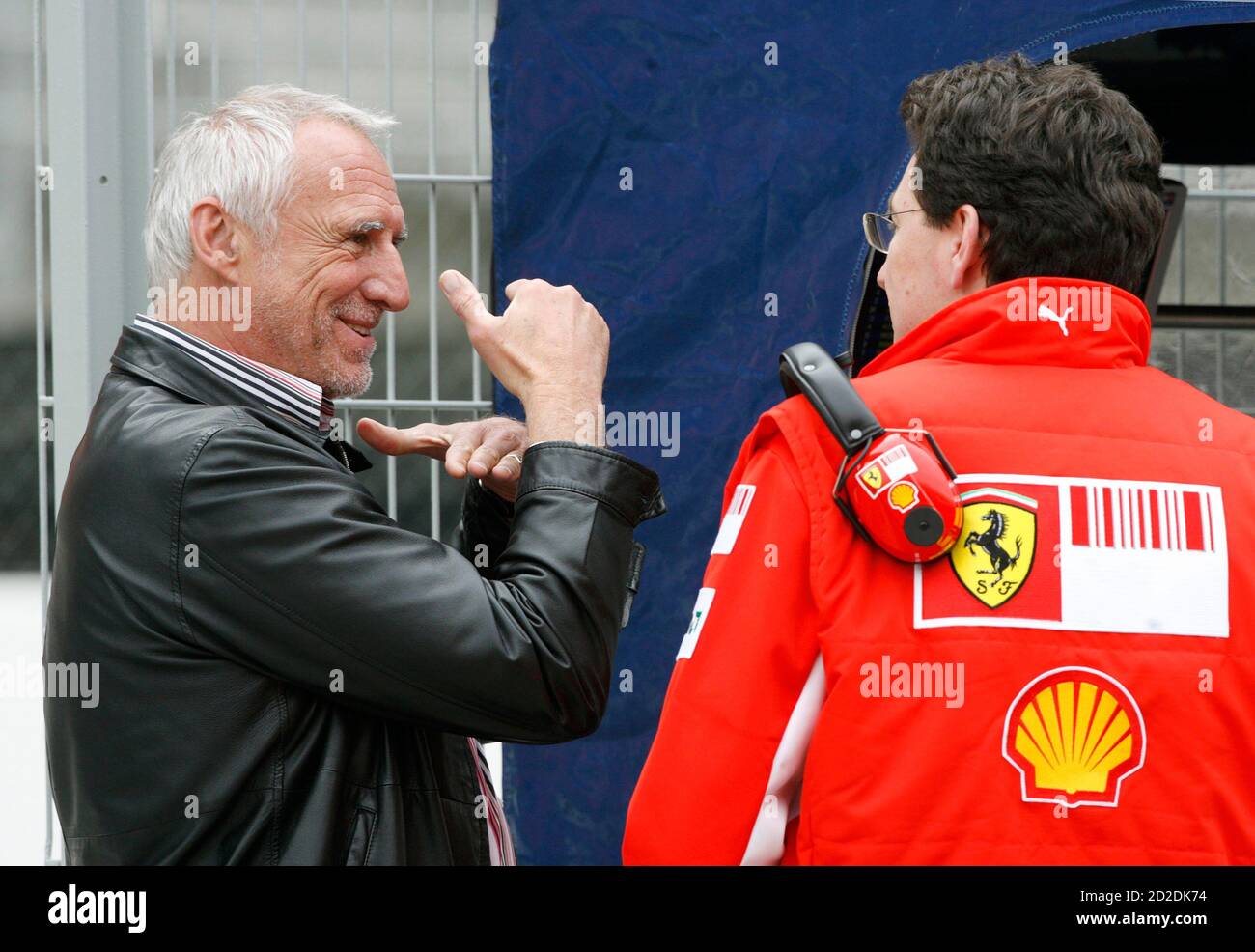
Red Bull owner Dietrich Mateschitz speaks to a Ferrari member on the pit lane during a training session in Montmelo’, near Barcelona, on February 14, 2007.
The former is drunk by all, the latter enjoyed by a few. Well, Dietrich Mateschitz managed to beat both by challenging them on the field, creating a drink and a single-seater out of nothing. Starting from scratch.

Dietrich Mateschitz wishing David Coulthard a good race at Shanghai in 2005. Photo by Rainer Schlegelmilch.
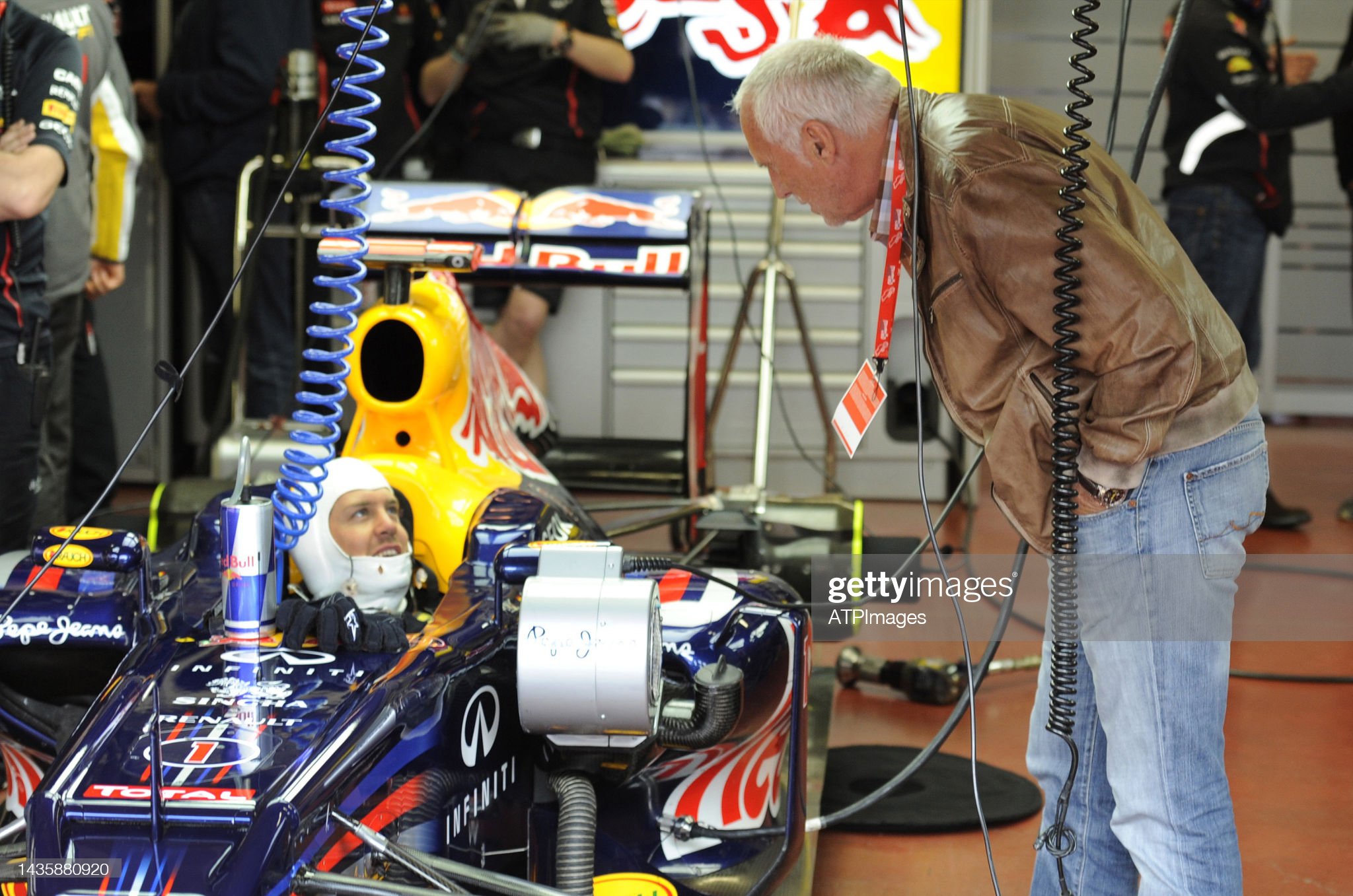
Dietrich Mateschitz, the co-founder of energy drink company Red Bull and owner of the Red Bull Formula One racing team, (right) visits the Tuscany circuit and his teams and meets Sebastian Vettel on May 03, 2012 in Mugello, Italy. Photo by Jerry Andre / Atp Images / Getty Images.
Feeling to have within himself a sea of things to give and to say, but in his own way. Avoiding chatters and fielding only facts. At this point we need to suspend disbelief and rely not only on the news but also a little on the legend, retracing together a path that will surely become a film sooner or later, rest assured, because in the screenplay it already is. At the end of the 70s Didi, as his friends call him, is a representative of high-level brands on a mission to the East.
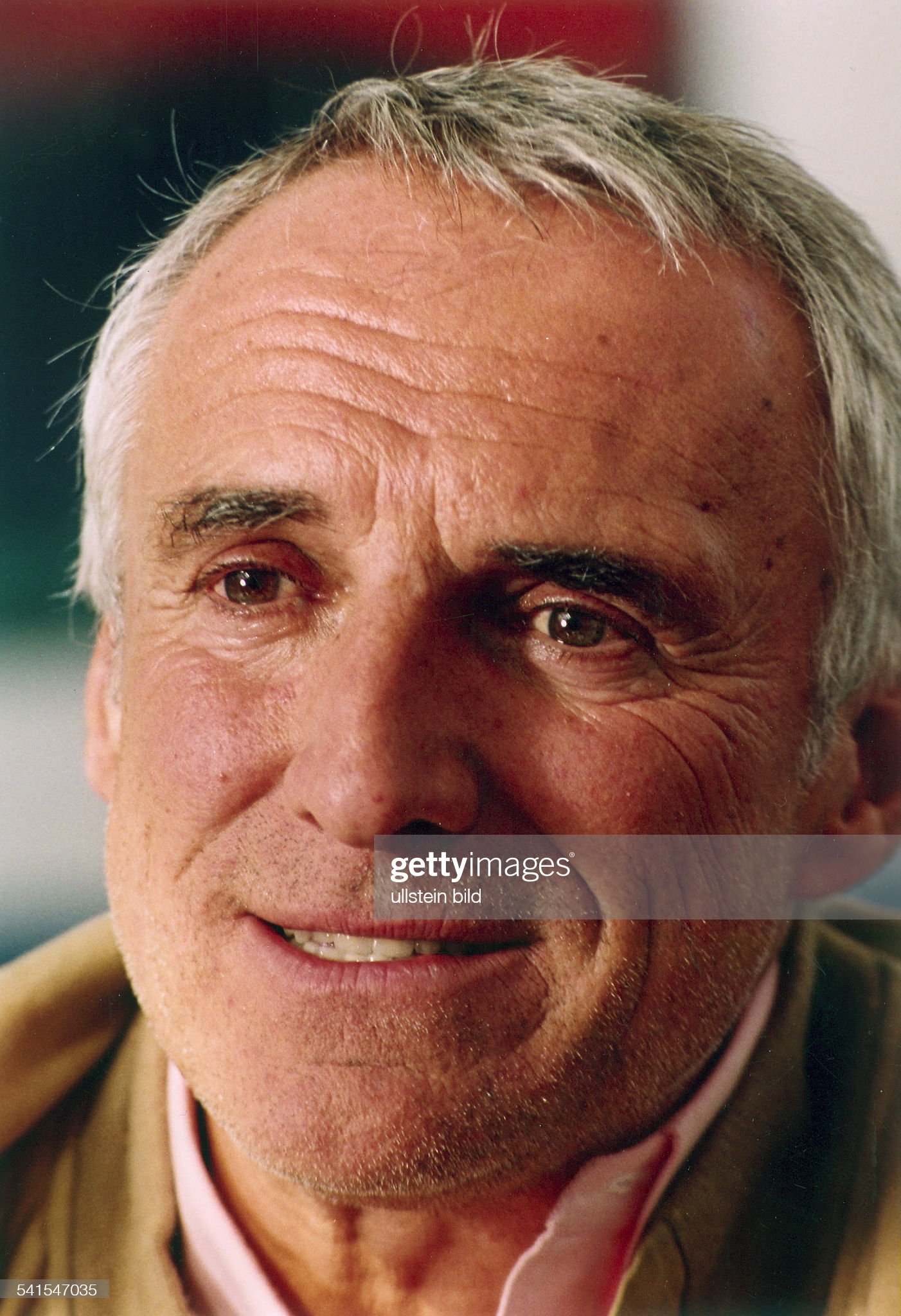
A portrait of Dietrich Mateschitz. Photos / Ullstein Bild via Getty Images.
Born in Austria in Sankt Marein im Mürztal on May 20, 1944 of Croatian parents, he boasts a degree in economics and commerce achieved in ten years, studying and working. In 1983 Didi, during a business trip to Thailand, was amazed by the story a taxi driver told him while he was taking him from the airport to the hotel. While the passenger Mateschitz complains of being very tired and dazed due to the jet lag, the man smiles at him and tells him a strange story: this one. Life in Thailand is not easy for a taxi driver, earnings are low and the commitment exhausting. To make ends meet you have to undergo work shifts of even twenty-four consecutive hours in the traffic of the unlivable cities. Mateschitz listens amazed: where is this going? The man soon gets to the point: "sir, I mean that to solve your jet lag problem you must use the same anti-overwork remedy as me: believe me, try Krating Daeng and everything will be fine". And what the hell is Krating Daeng going to be? - Didi wonders in amazement - and the answer comes from the usual extroverted taxi driver, soon confirmed by anyone involved in the matter. Krating Daeng is a curious local drink sold by pharmacies, mainly consumed by workers and drivers to combat the effects of fatigue at work. Mateschitz smiles. And remember it well, this smile. But his gaze does not smile accompanying the lips, no, it lights up electrified. His is an important, well-stocked diary and, by crossing two, three, four phone calls, he manages to get the address of the elusive Chaleo Yoovidhya, creator of the drink, to whom he asks for a meeting. A legendary meeting, perhaps the meaning of everything, the purpose of his life is not to bring big names to the East but perhaps to go the other way, placing an oriental product in Europe to defeat the foreseeable evil of the following millennium: the stress fatigue. The meeting with the phantomatic Chaleo Yoovidhya is successful. The deal can be done.
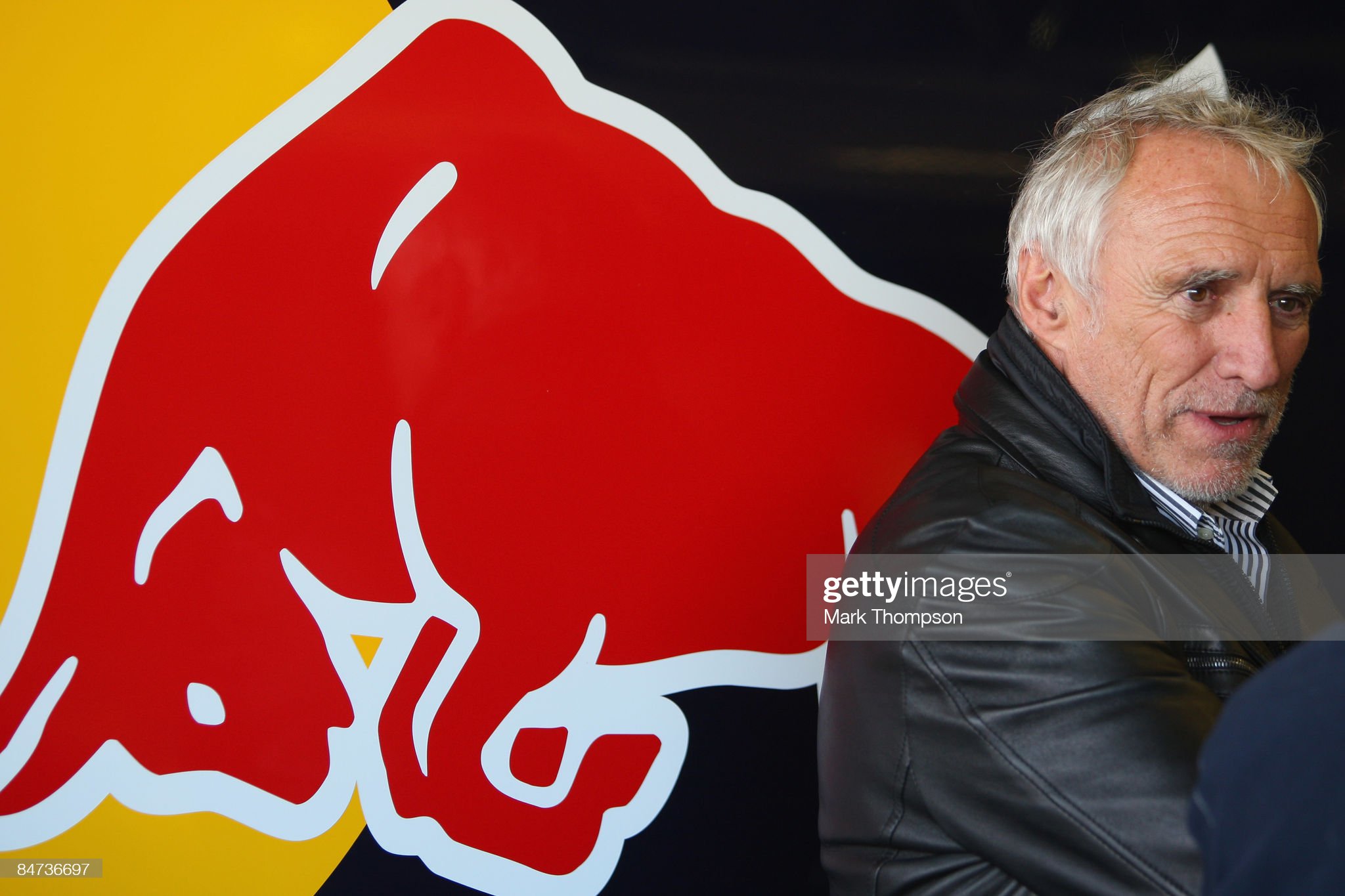
The owner of Red Bull Dieter Mateschitz in the pits during Formula 1 testing on February 11, 2009 in Jerez de la Frontera, Spain. Photo by Mark Thompson / Getty Images.
And the first thing the two decide is to commission an expensive and widespread market survey which asks an imaginary multitude of normal European buyers a rather silly but interesting question: if it were brought to your attention an energizing drink, what would you like it to be called? The many ordinary people who participate in the test have a range of names to choose from and the resultant gives a denomination as the favorite among the various proposals: ‘Red Bull’. Okay, if you’re happy, we’re happy.
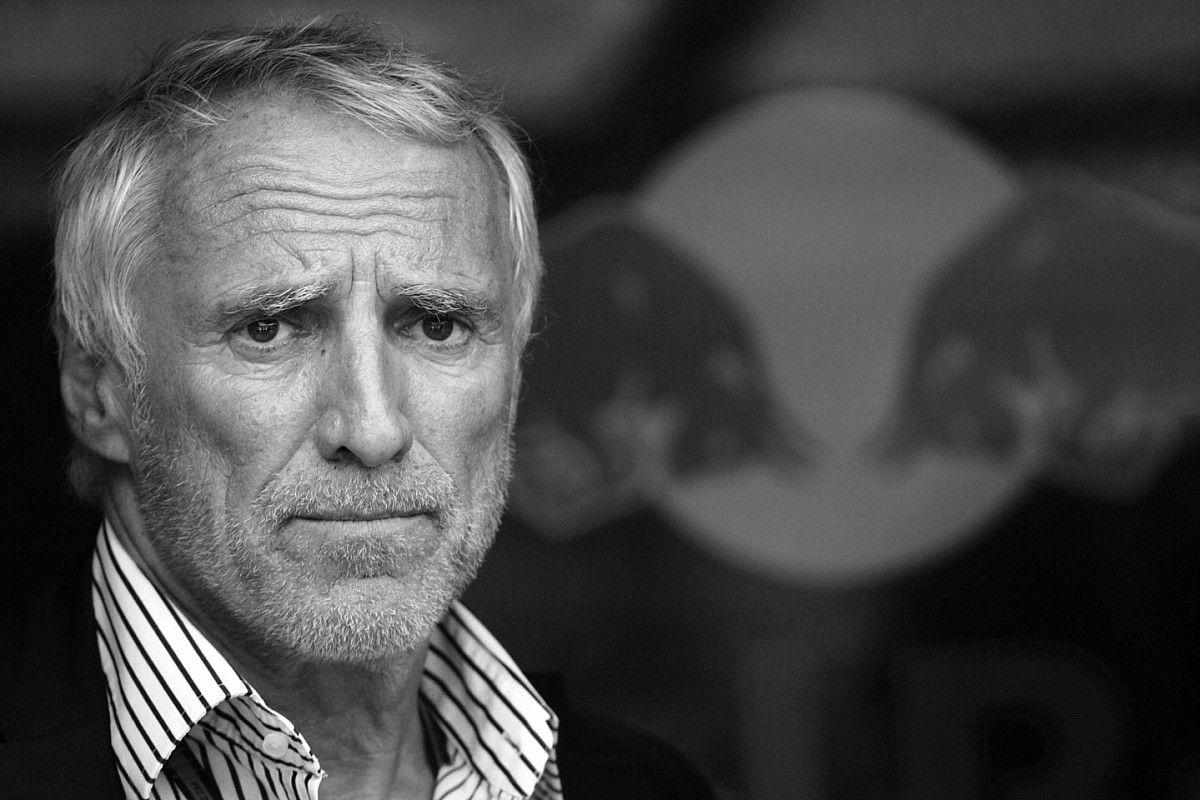
Dietrich Mateschitz.
Dietrich Mateschitz, creator of the Red Bull Empire, dies at 78. By Christopher F. Schuetze, ‘The New York Times’. October 24, 2022. The Austrian salesman turned a Thai energy drink into a marketing juggernaut that owned sports teams, media outlets and a winning Formula 1 crew.
Hanover, Germany. Dietrich Mateschitz, the Austrian businessman who turned a caffeinated Thai energy drink into the multibillion-dollar Red Bull empire, died on Saturday. He was 78.
His company, Red Bull, announced the death to employees in an email but did not say where he died or cite a cause. German and Austrian news reports said the cause was cancer. Red Bull did not immediately respond to a request for comment.
In the 1980s, Mr. Mateschitz, then a salesman for a company that made personal hygiene products and toothpaste, discovered the elixirs sold in Asian pharmacies as pick-me-ups for workers and truckers. He got in touch with the maker of one of them, Chaleo Yoovidhya, whose drink, Krathing Daeng, translates into English as “red bull.”
The two formed a partnership and, after three years of tinkering with the Thai recipe, Mr. Mateschitz introduced the Westernized version of the energy drink to his native Austria in 1987.
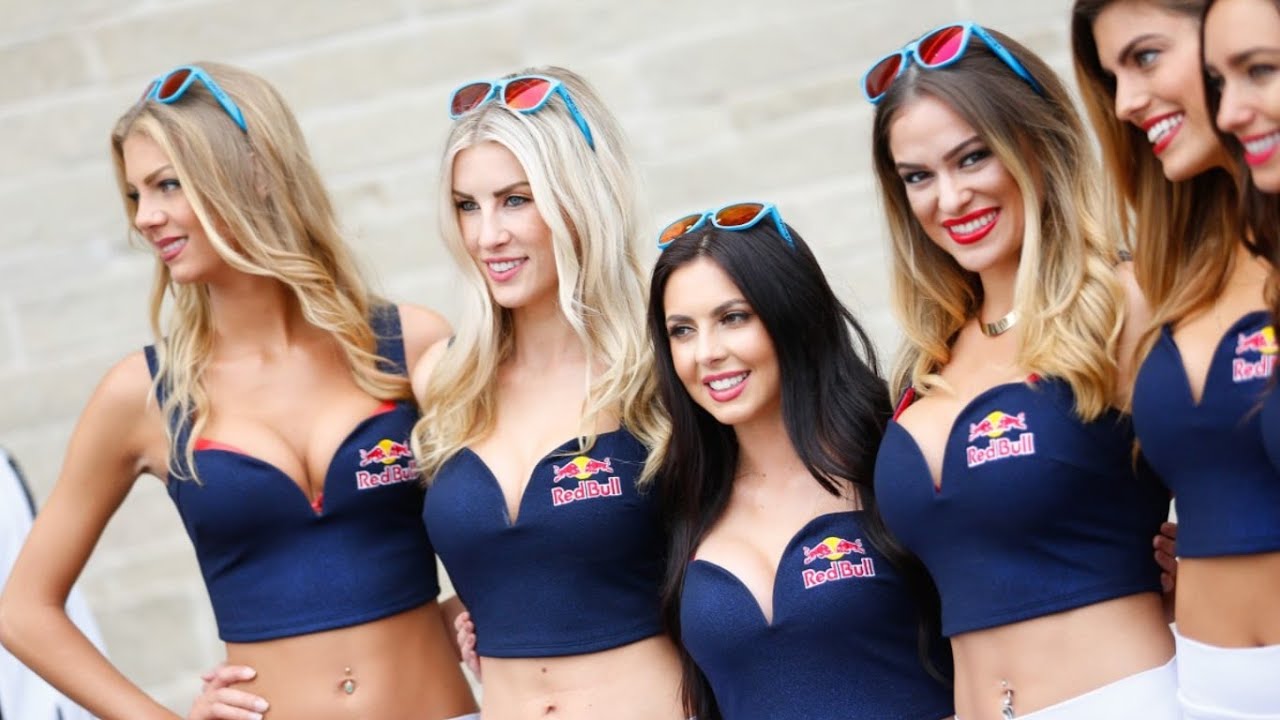
Despite concerns about the drink’s high sugar and caffeine content — it has occasionally been banned in various countries and some health officials have questioned the safety of taurine, an amino acid that is a key ingredient — the company took off and last year alone sold nearly 10 billion cans of Red Bull around the world, according to its website.
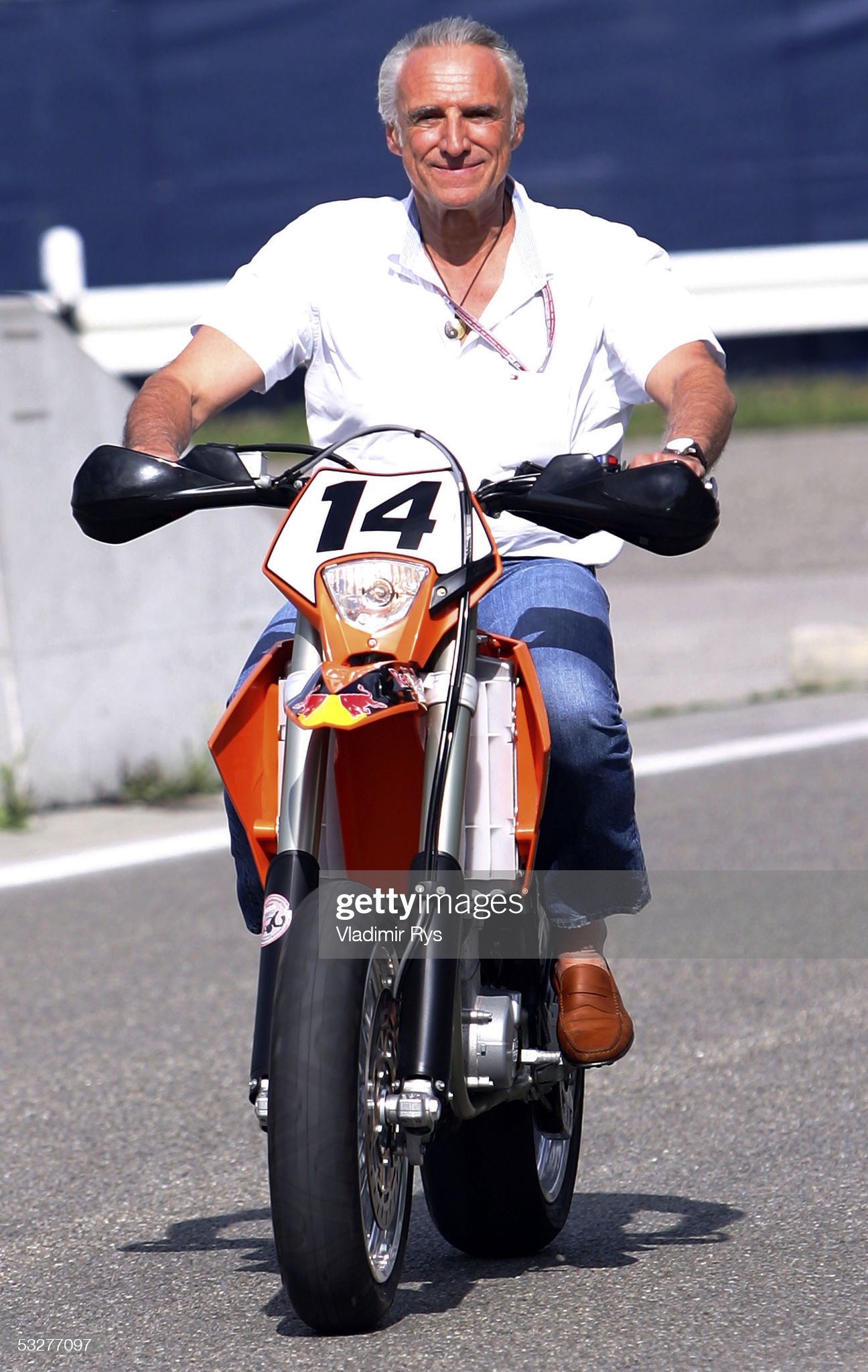
Dietrich Mateschitz drives a motorbike after the practice for the German F1 Grand Prix on July 23, 2005 in Hockenheim, Germany. Photo by Vladimir Rys / Bongarts / Getty Images.
Red Bull, the drink which spawned an army of competitors, quickly became a marketing juggernaut with major investments in sports and media companies. Mr. Mateschitz reportedly sank as much as 30 percent of his profits into public relations and marketing.
Through its prolific sponsorship of sports teams and athletes, both conventional and cutting-edge, he cultivated a daring and high-performance image for the drink. For Red Bull, ‘The New York Times’ wrote in 2006, “sports is marketing and marketing is sports — and the company won’t stop until the two things are one.”
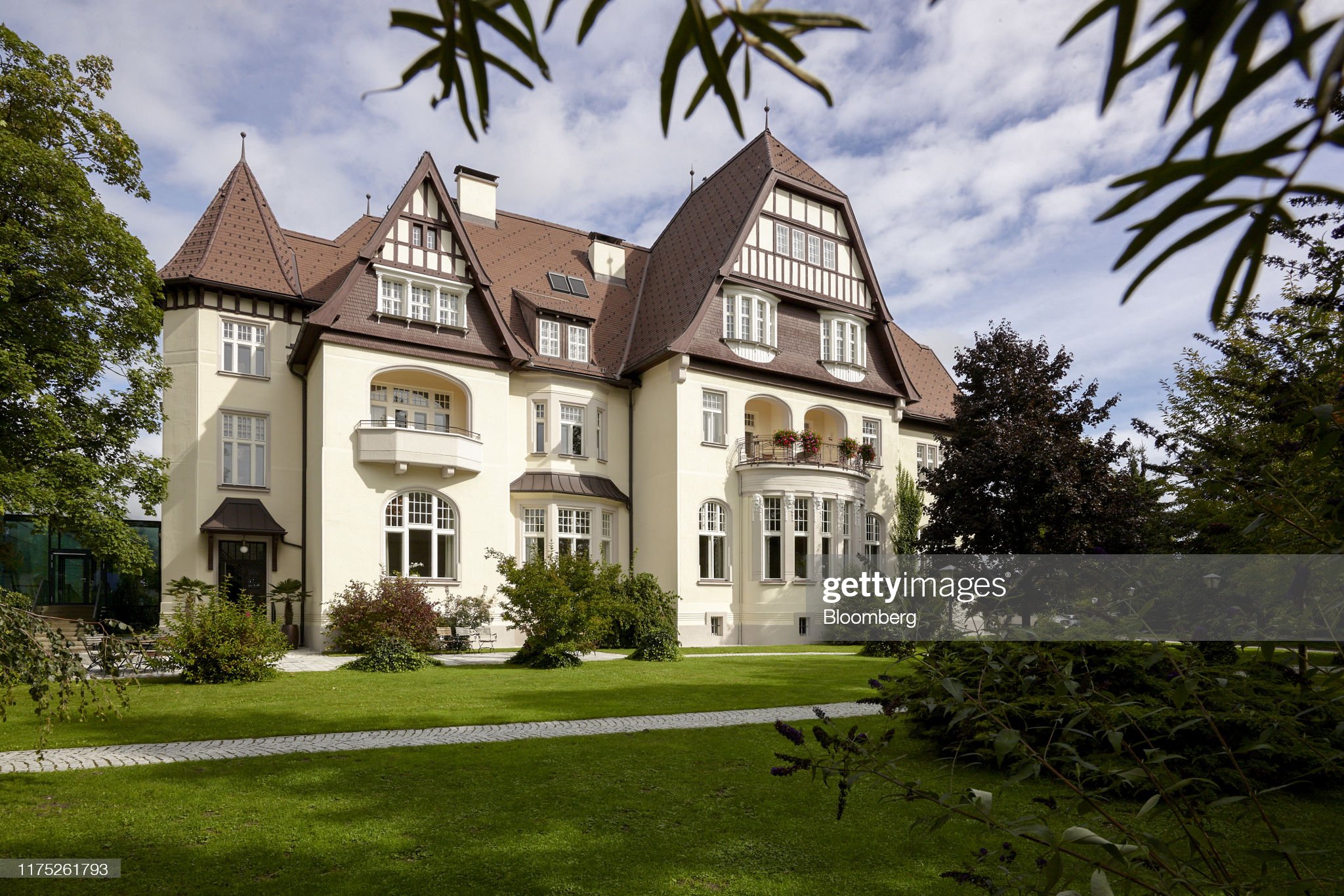
The Hotel Steirerschlossl stands in Zeltweg, Austria, on September 09, 2019. Discreetly, Red Bull billionaire Dietrich Mateschitz has been on a decade-long acquisition spree in the Austrian Alps, buying castles and villas from churches or aristocratic families that couldn’t afford their upkeep. Photographer: Christian Wind / Bloomberg via Getty Images.
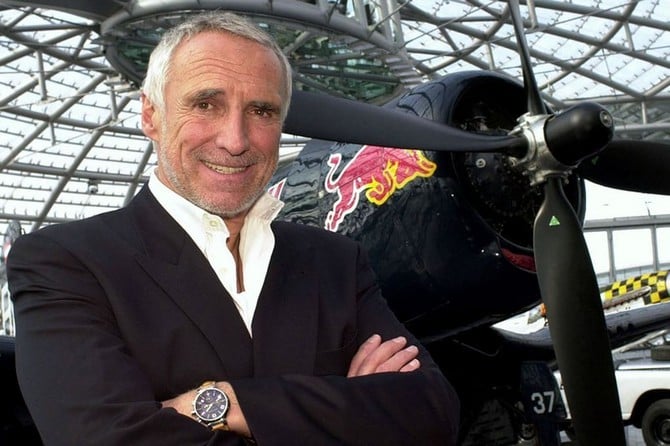
Dietrich Mateschitz.
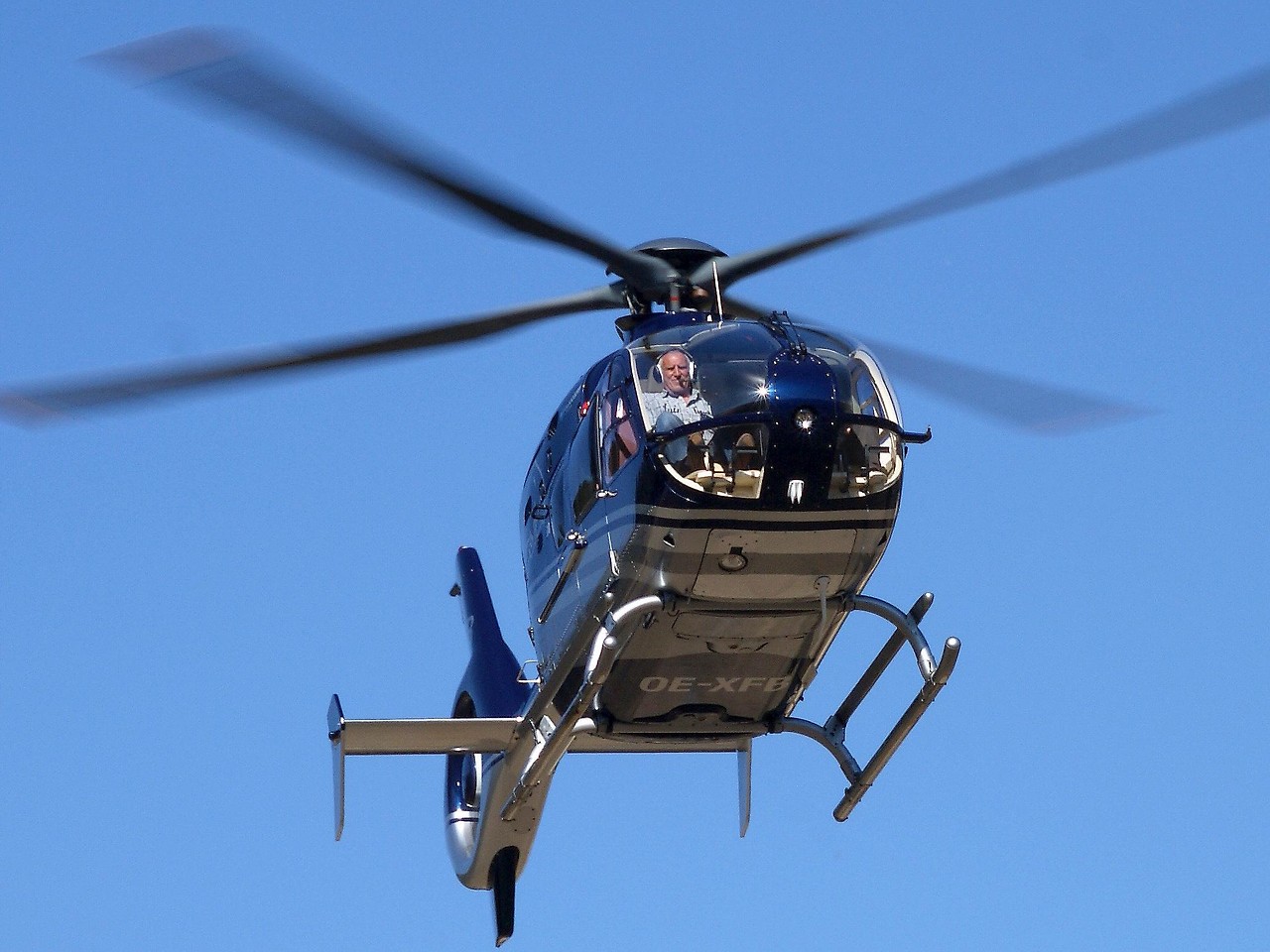
Mr. Mateschitz was also known as a collector of real estate, cars and airplanes.
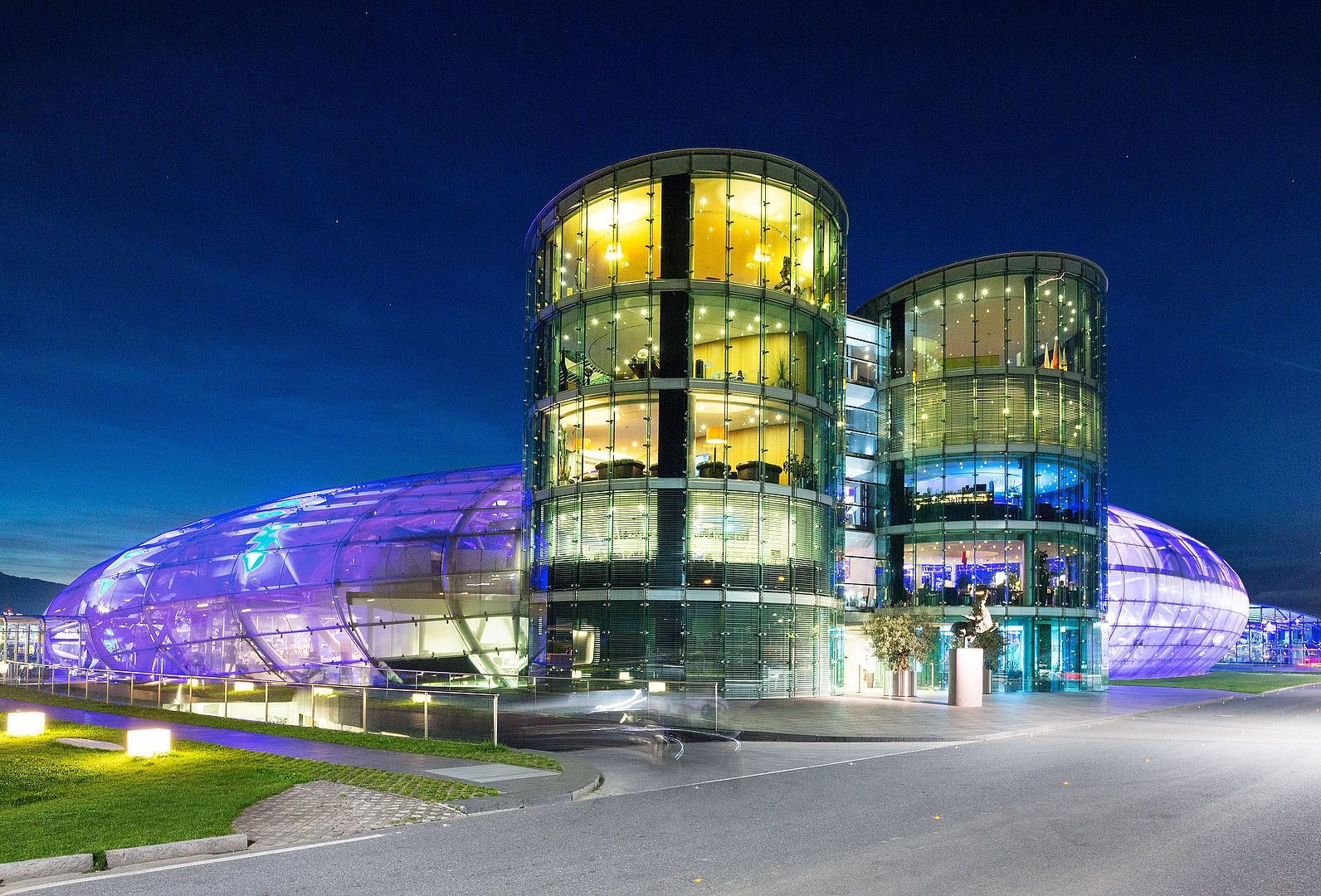
When Hangar-7 first opened its doors in 2003, it was not just Salzburg Airport that gained an unusual building, Hangar-7 enriched the entire city. From the very first idea, Hangar-7 was much more than “just” a modern aircraft hangar. Its developers saw it as a place where art, culinary art and aviation would come together.
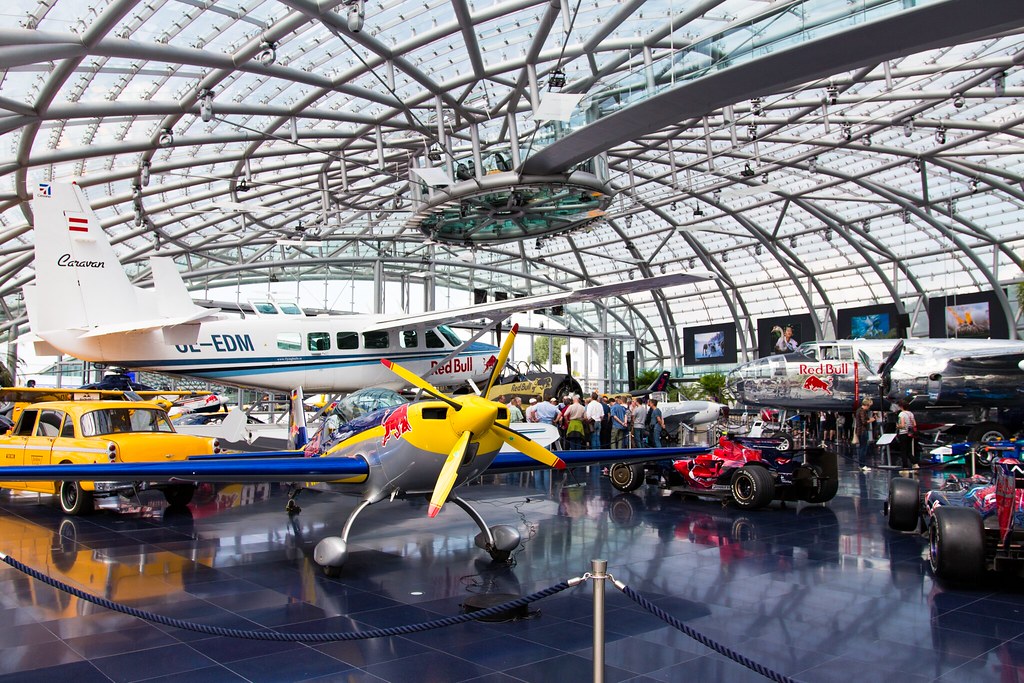
When planning for Hangar-7 at Salzburg Airport first began in 1999, it was quickly decided that the new home of the historical Flying Bulls fleet should be unique in its métier in terms of design and purpose. This challenge was assigned to Salzburg based architect Volkmar Burgstaller, whose design exceeded all expectations. Using 1,200 tonnes of steel and 380 tonnes of special glass, he created Hangar-7 as it now graces the city of Salzburg and its airport.
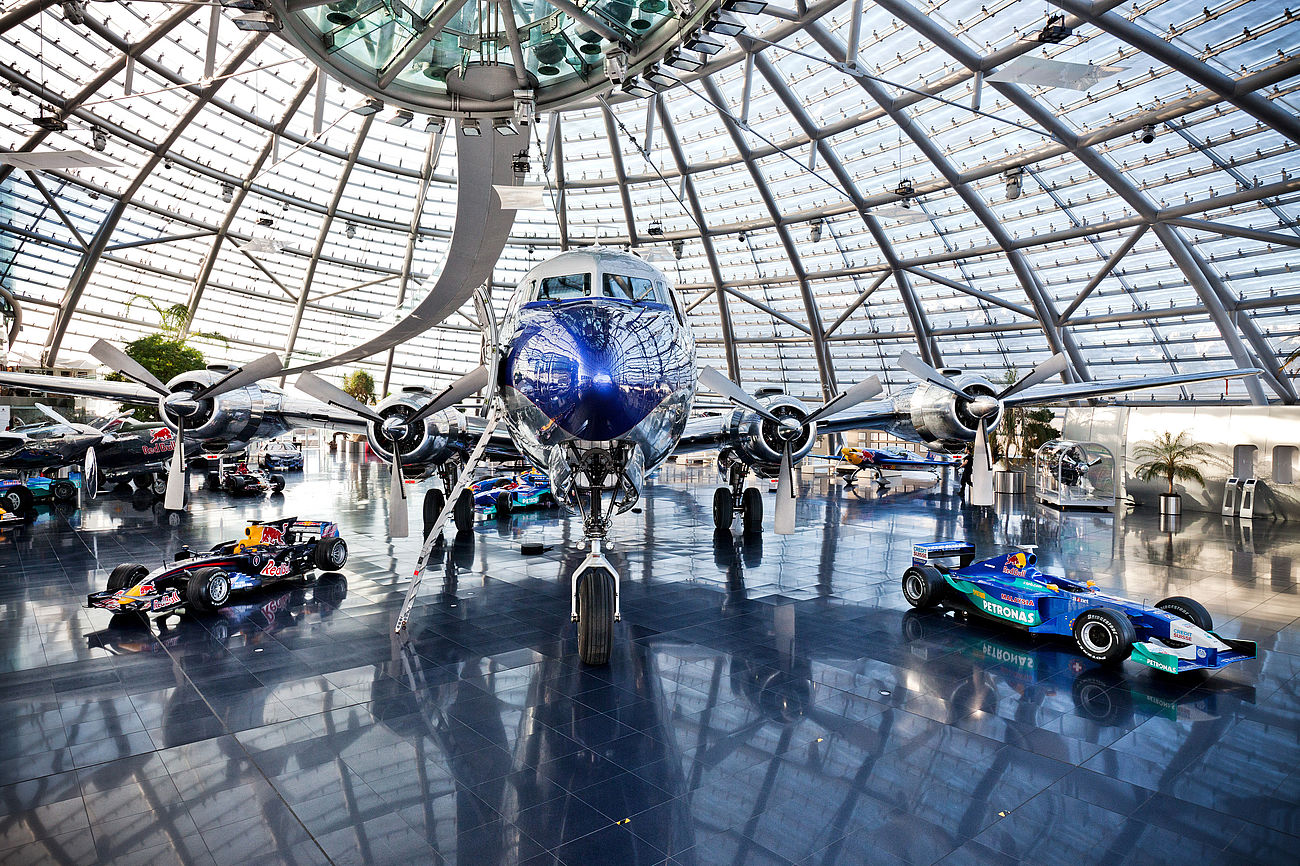
Inside Hangar-7, it is the unique glass dome which inevitably draws the gaze upwards. It stretches like the vaults of heaven over the various exhibits. The transparency of the 1,754 glass panes – no two of which have the same dimensions – creates a different atmosphere in Hangar-7 depending on the weather or the time of day.
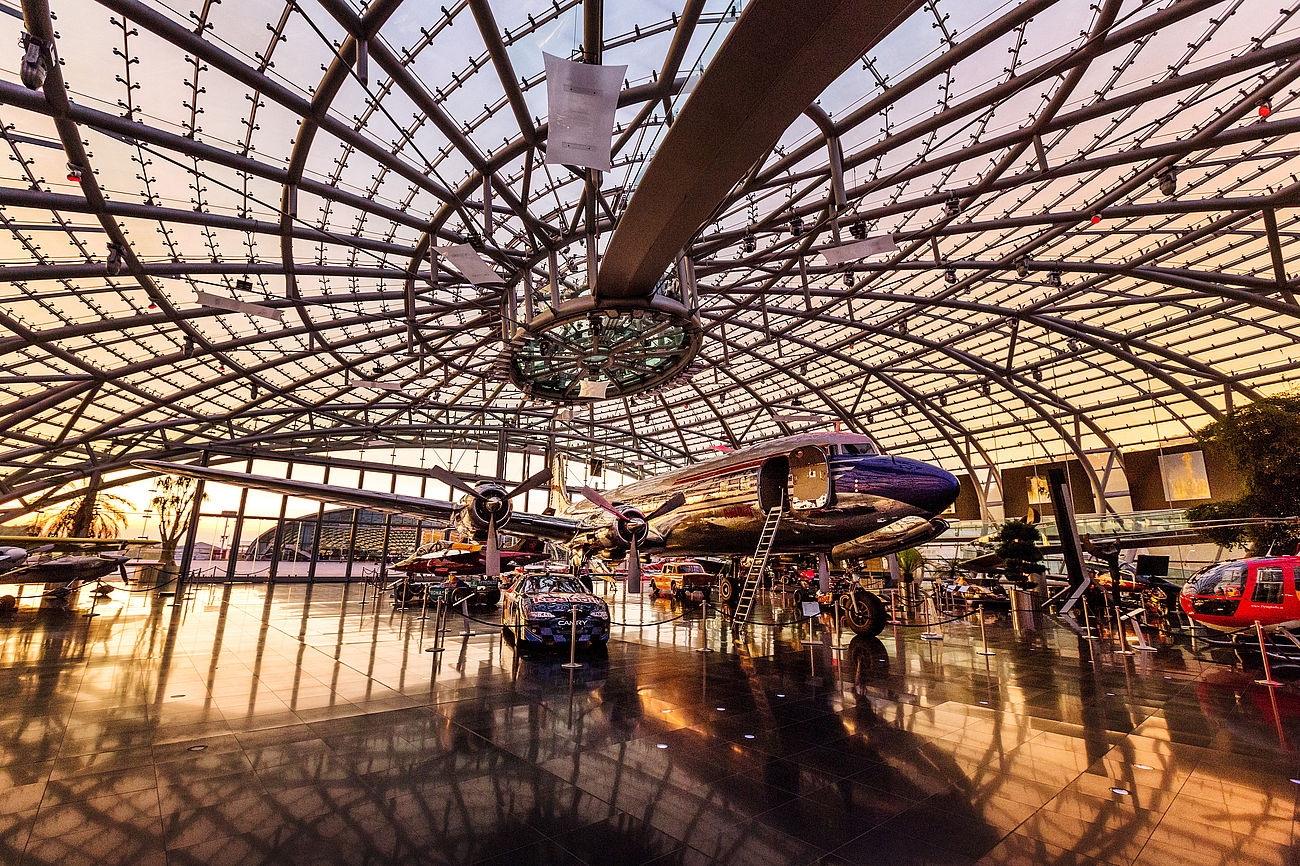
The three self-supporting ribs that span the hall offer the visitor various vantage points: upwards towards the impressive mountain panorama or down towards the legendary airplanes, helicopters, Formula 1 cars and motorcycles.
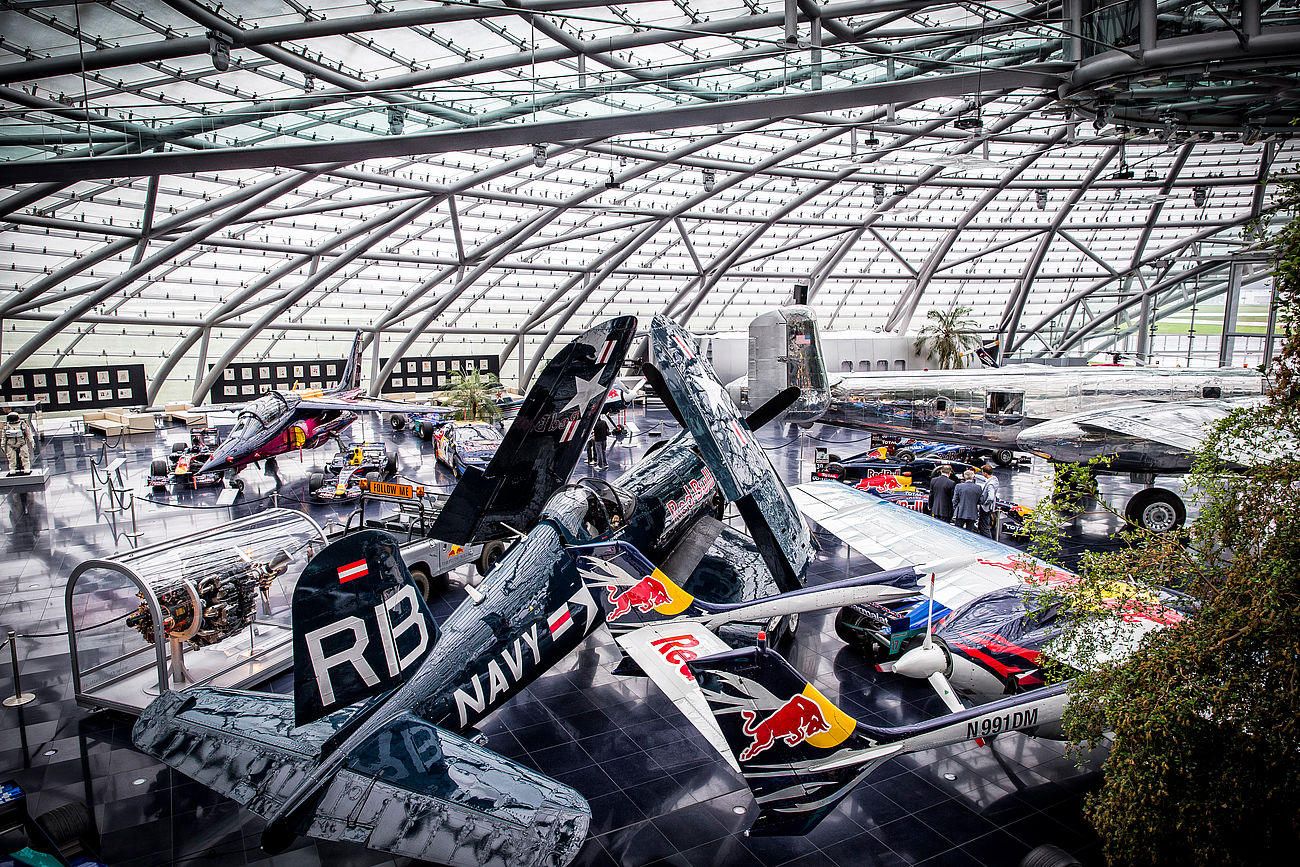
Seen from outside, the construction is intentionally reminiscent of a wing which radiates extraordinary dynamism and weightlessness.
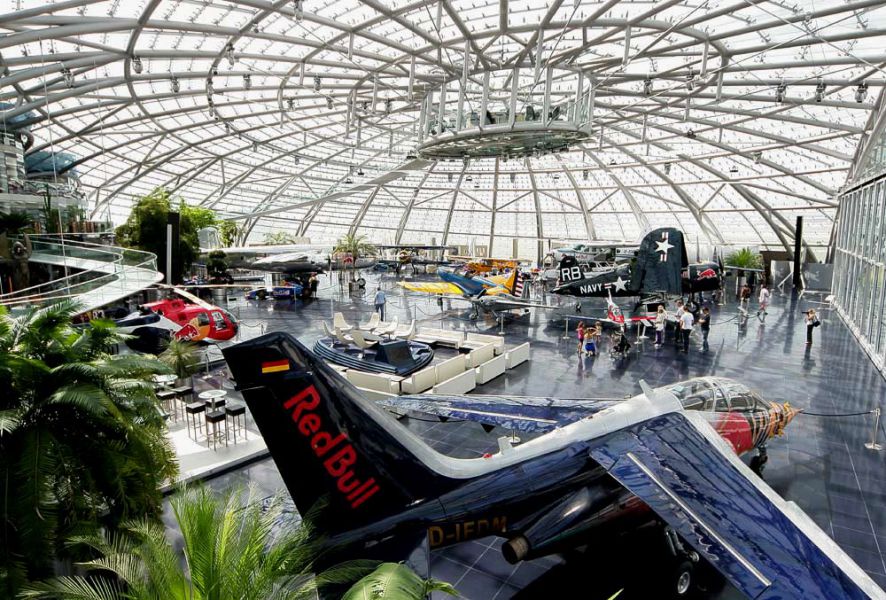
At the main entrance, visitors are greeted by two cylindrical towers, which rise majestically from the elliptical glass shell.
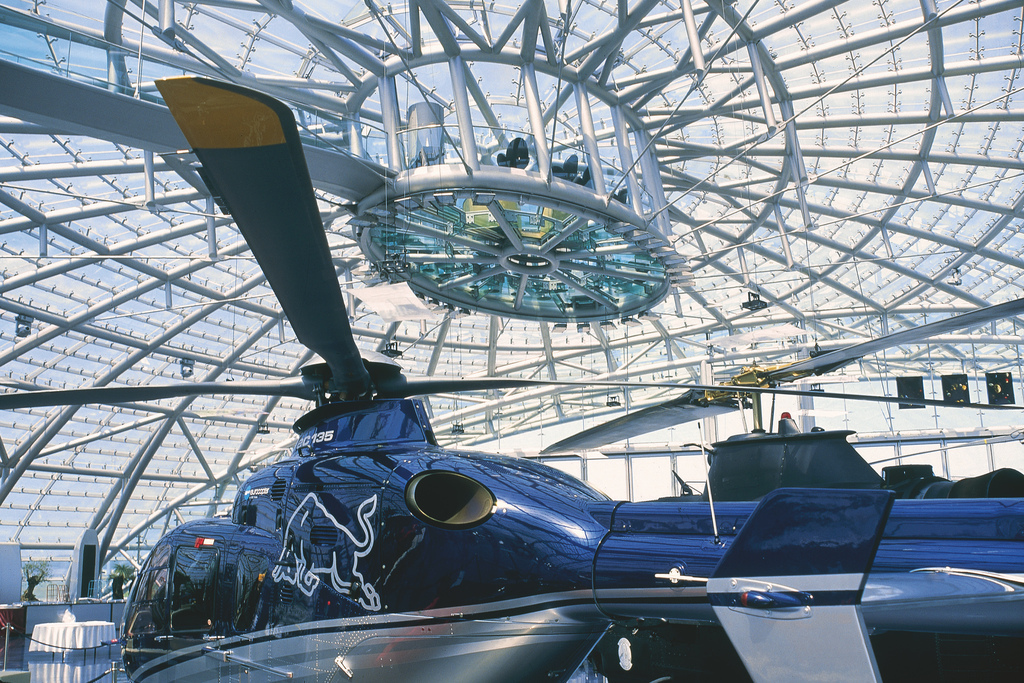
Over several storeys, these towers provide space for offices as well as for Hangar-7‘s gastronomical highlights, which include comfortable bars, the Lounge - Café and an elegant restaurant.
In his later years he added a media empire with television channels and magazines that focused mainly on sports, but that controversially included a channel that gave voice to far-right and fringe opinions.
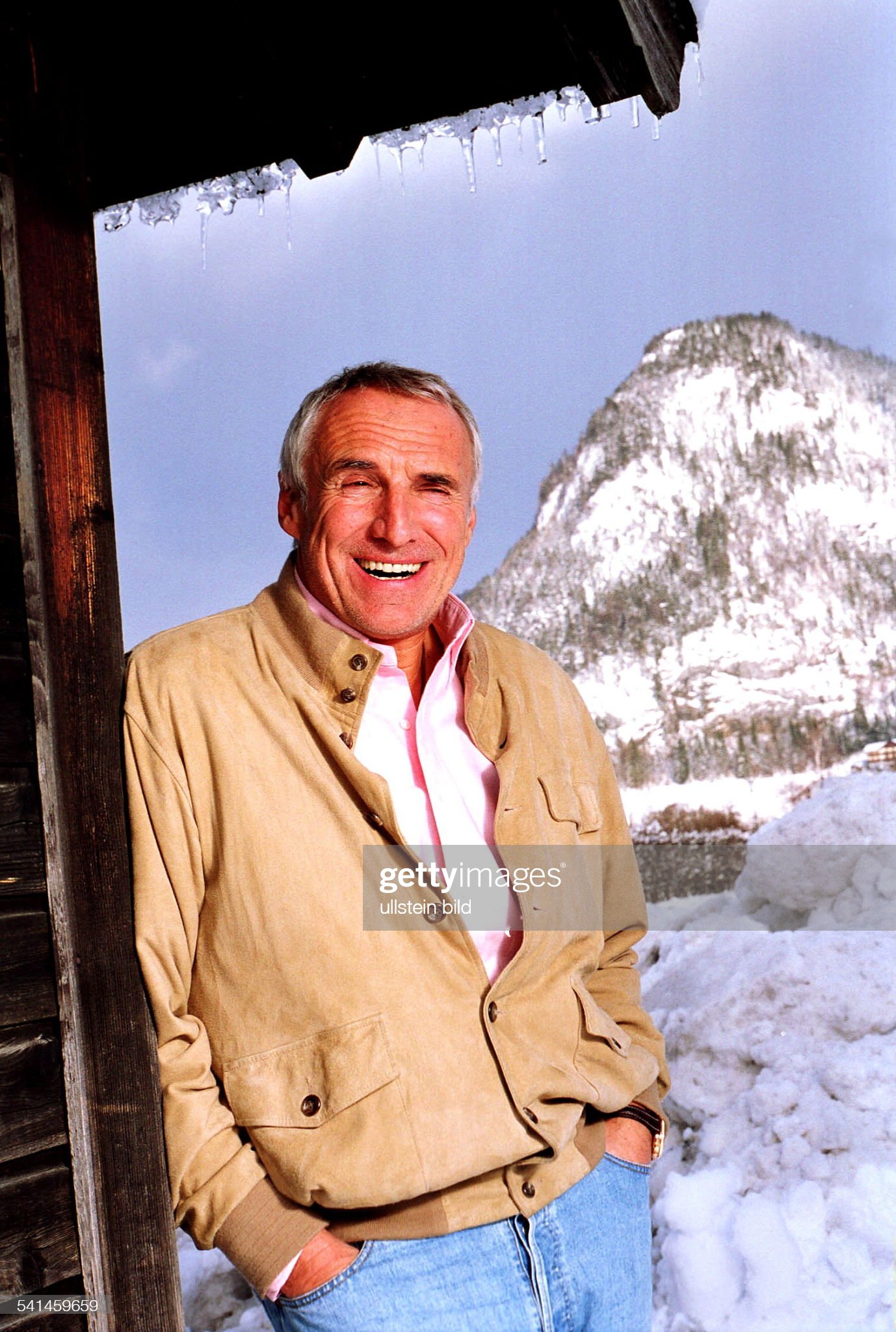
Dietrich Mateschitz in front of a ski hut in Fuschl am See, Austria. Photo by Vision Photos / Ullstein Bild via Getty Images.
Nearly always tanned and sporting a three-day beard, he avoided suits, red carpets and reporters he could not control. Despite his driving quest for publicity, he was private about his personal life; he reportedly once purchased a society gossip magazine to stop it from covering him.
He bought his first Formula 1 racing team in 2004 and another in 2006.
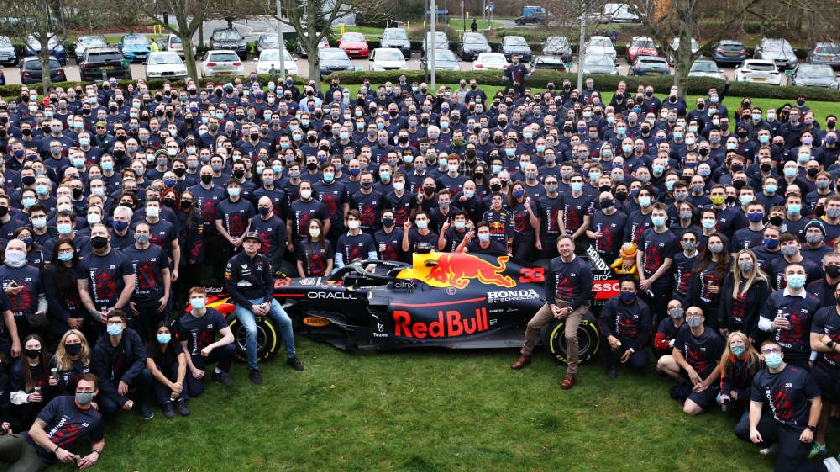
The Red Bull team.
The Red Bull team became one of the best in the world, winning 89 races.
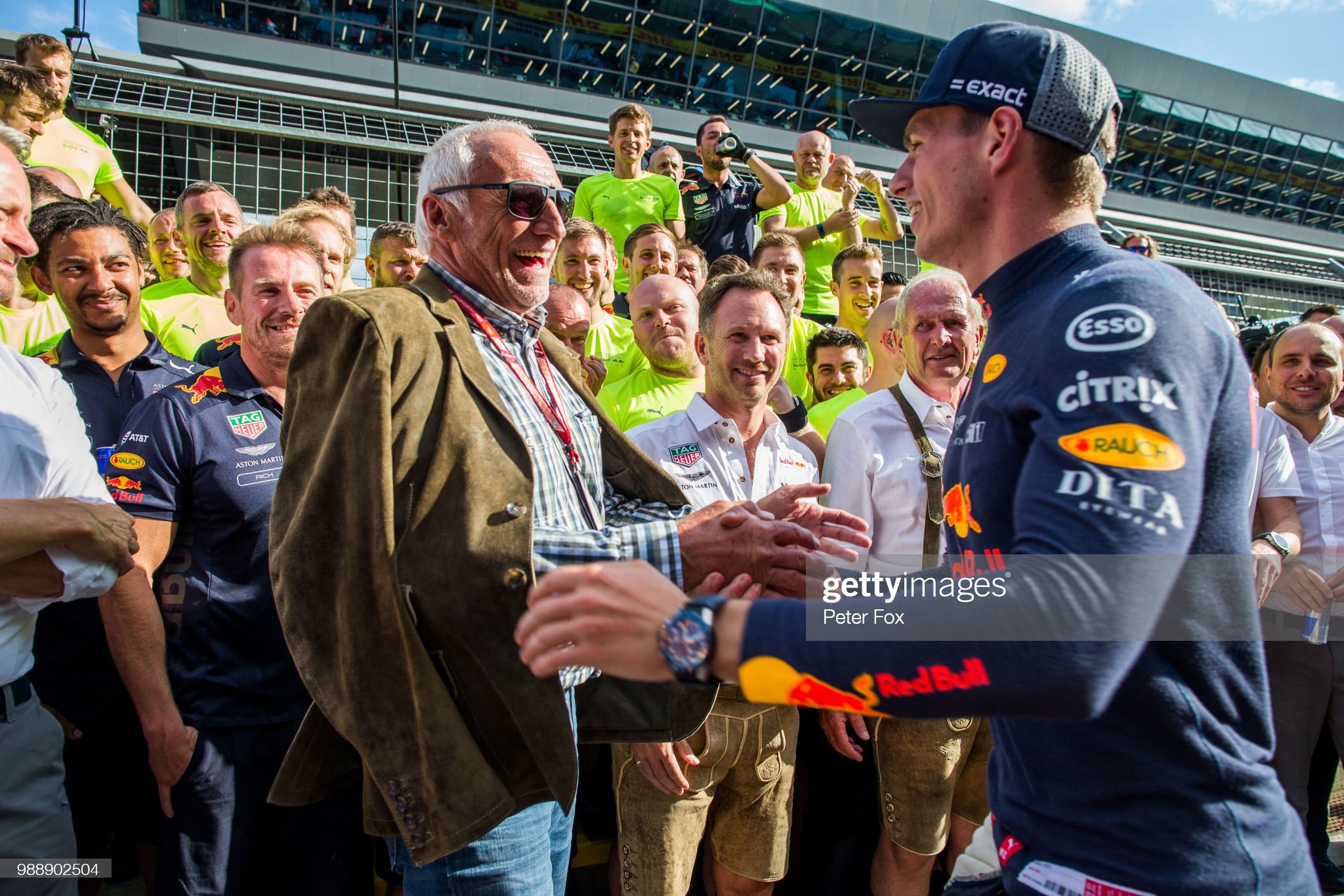
Max Verstappen with Dietrich Mateschitz during the Formula One Grand Prix of Austria at Red Bull Ring on July 01, 2018 in Spielberg, Austria. Photo by Peter Fox / Getty Images.
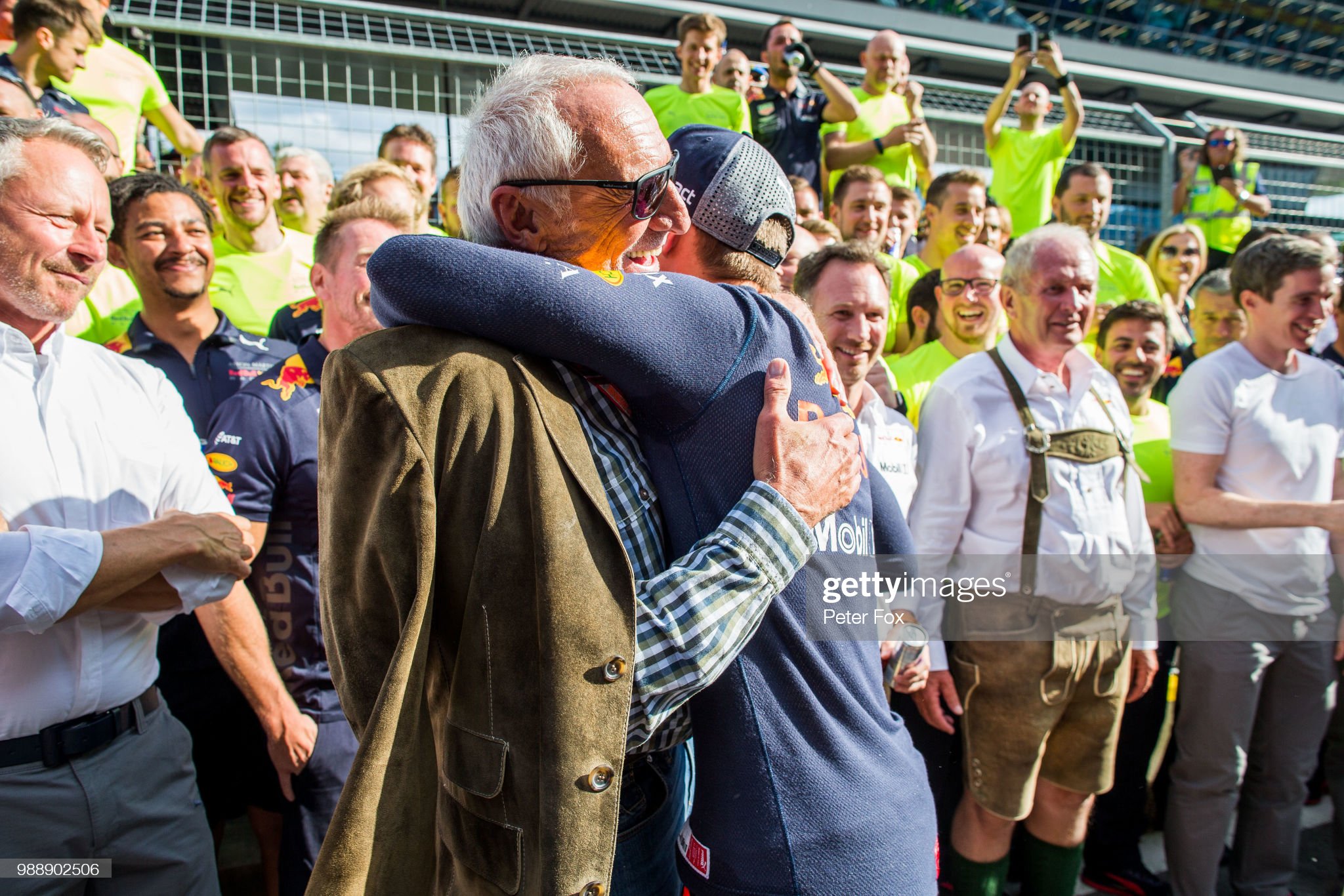
Max Verstappen with Dietrich Mateschitz during the Formula One Grand Prix of Austria at Red Bull Ring on July 01, 2018 in Spielberg, Austria. Photo by Peter Fox / Getty Images.
The team’s star driver, Max Verstappen, won his second Formula 1 title this month and, on Sunday, the day after Mr. Mateschitz died, the team won its fifth constructors’ championship, the award for the best performance of the racing season.
The investment paid off.
“At the end of the day, it’s always about awareness and appreciation of a brand and the associated company,” Mr. Mateschitz said in a 2010 interview with the German newspaper Der Spiegel. “With this philosophy, we have succeeded in making Red Bull one of the most valuable brands in the world.”
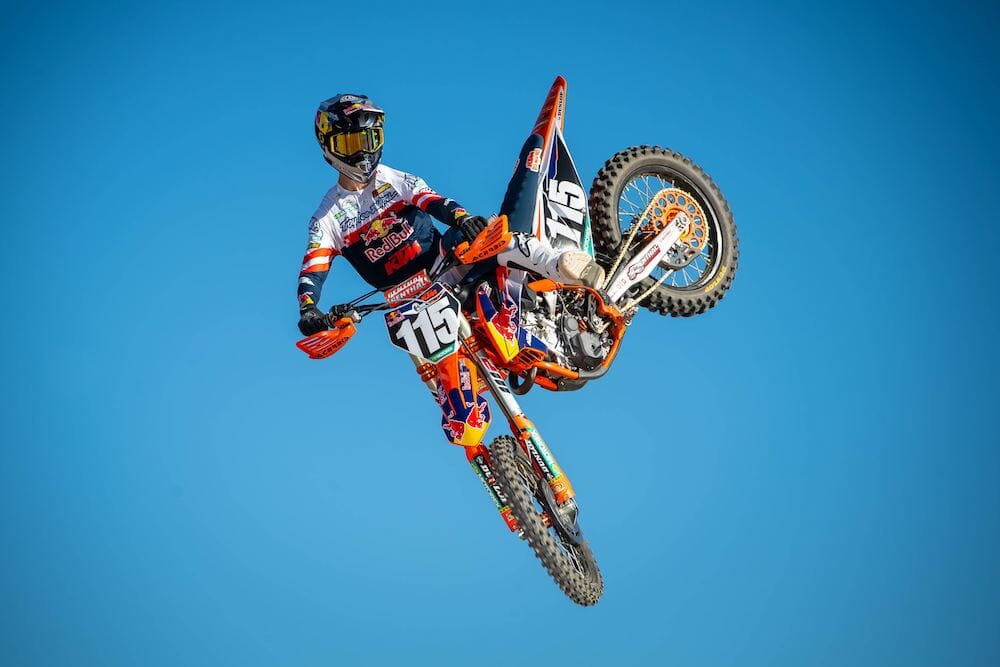
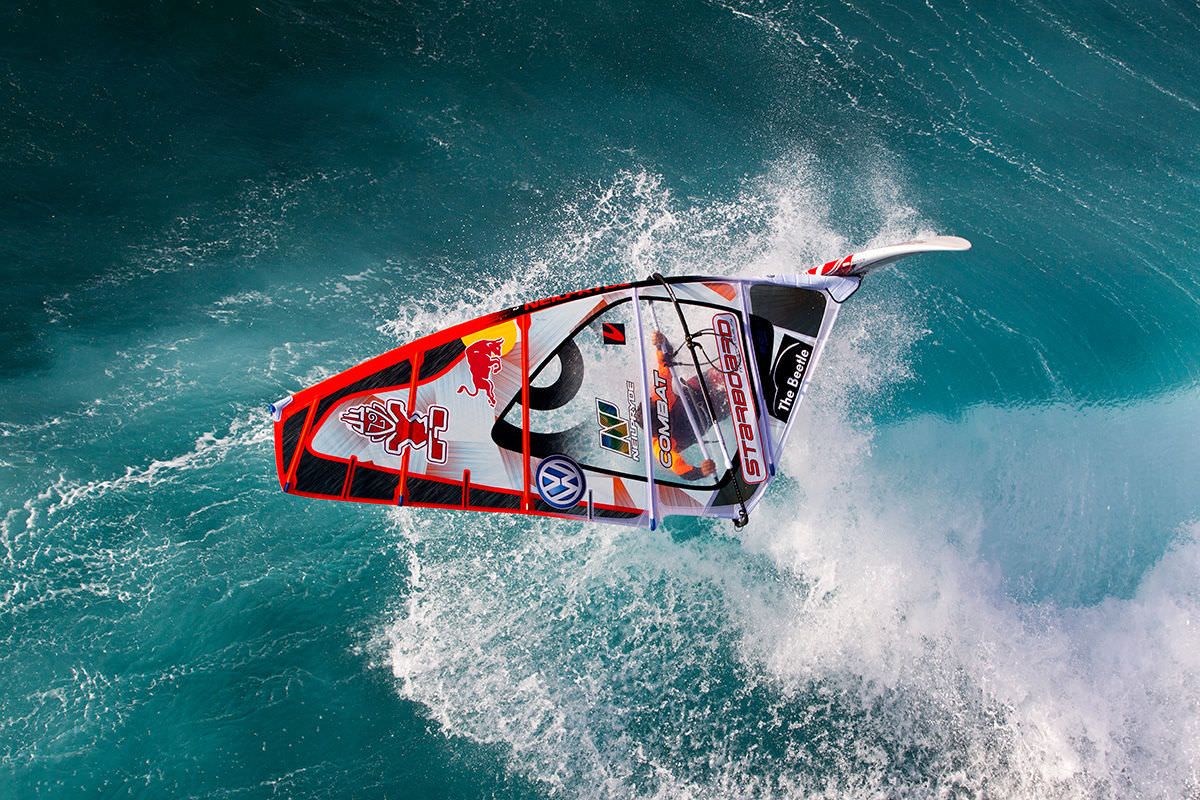
He also invested in major soccer teams — a team that remains one of the best in Germany and one in New York called, of course, the ‘New York Red Bulls’ — as well as so-called extreme sports like surfing, motocross, mountain biking, cliff diving and windsurfing.
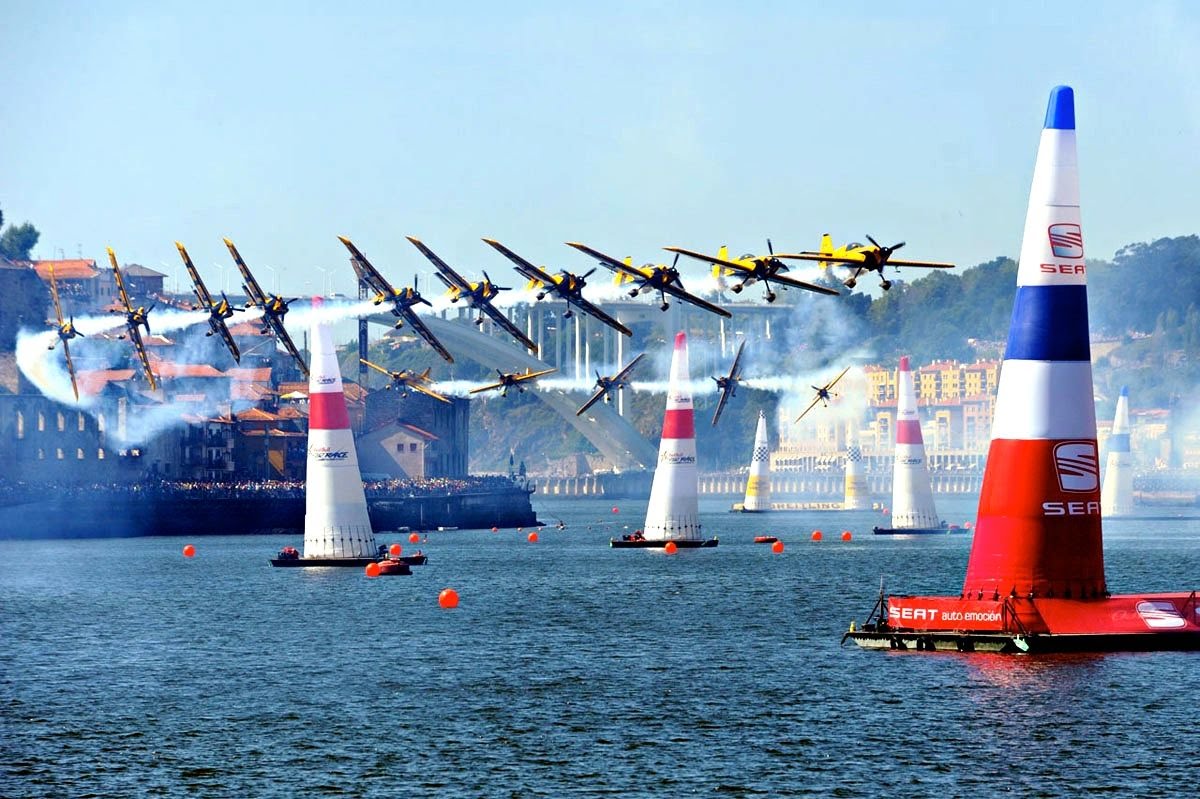
The Red Bull Air Race World Championship.
The company even created a series of air races, initially known as ‘Red Bull Air Race’, in which stunt airplanes would race through slalom courses made out of giant pylons.
Mr. Mateschitz’s 49 percent stake in Red Bull (the rest was held by Mr. Chaleo and his son) made him one of the wealthiest people in the world. Forbes estimated his fortune at $19.4 billion this year, making him the 75th-richest individual in the world.
Dietrich Mateschitz was born on May 20, 1944 in St. Marein im Mürztal, Austria, a small town 30 miles north of Graz. After studying business administration at the Vienna University of Economics and Business, he worked in sales and, as a marketing director, at the German company Blendax, a maker of personal hygiene products, until striking out on his own with Red Bull in 1987.
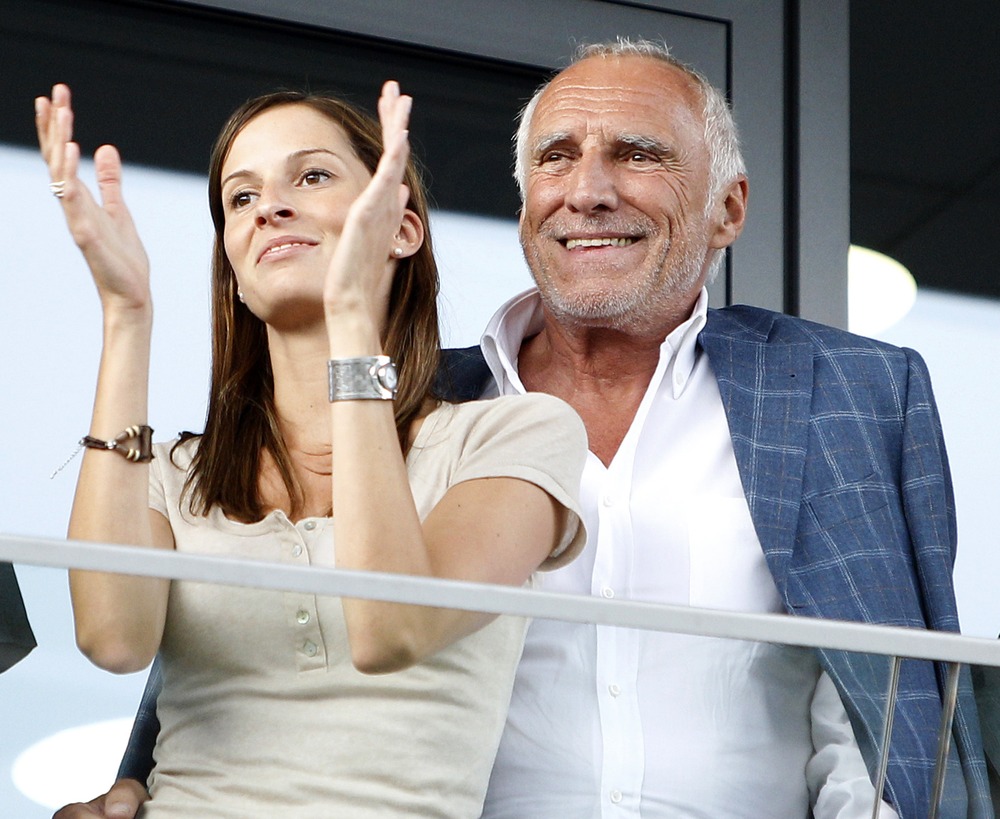
Dietrich Mateschitz with his partner Marion Feichtner.
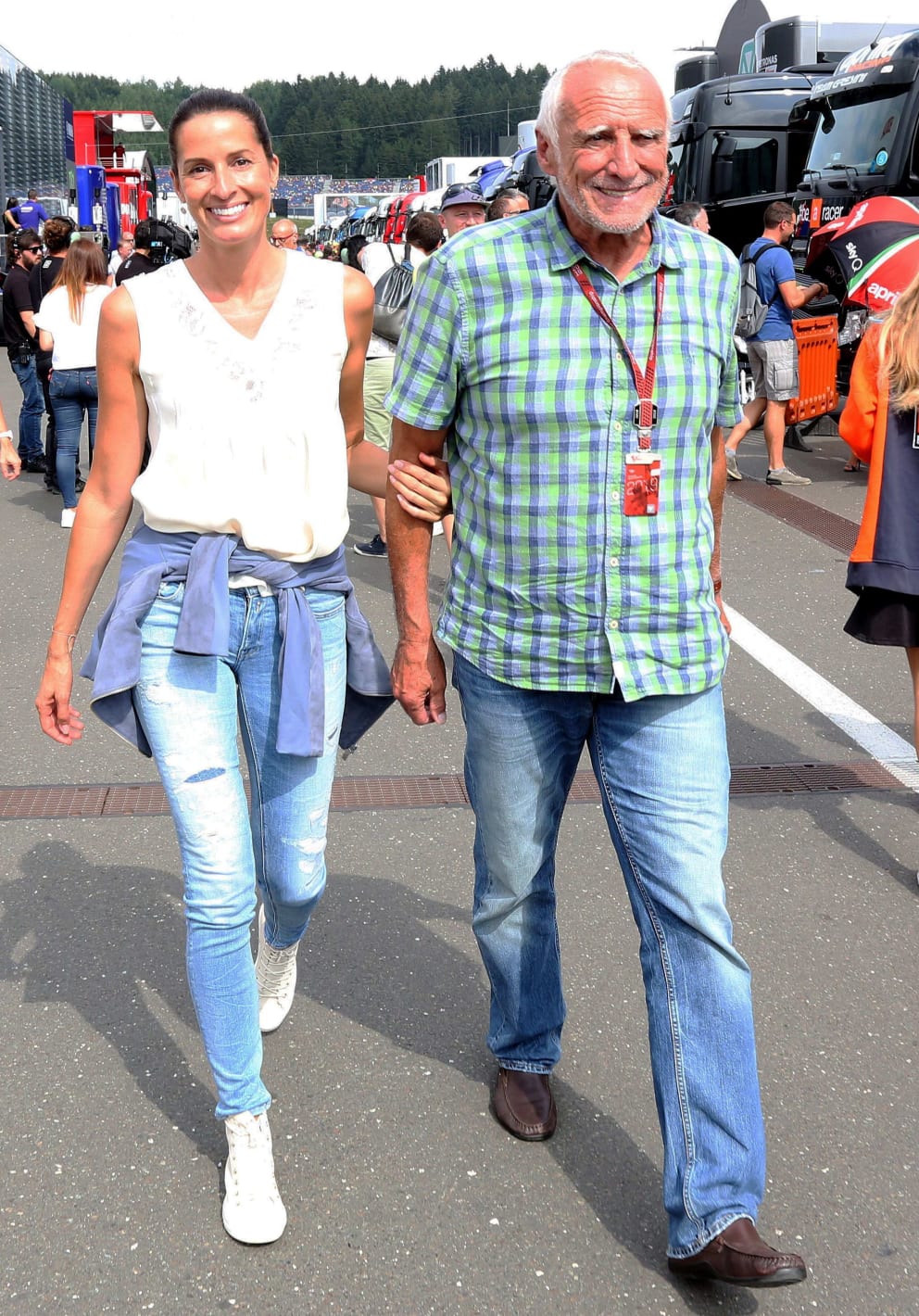
Dietrich Mateschitz with his partner Marion Feichtner.

Dietrich Mateschitz with his partner Marion Feichtner on May 16, 2011.

Dietrich Mateschitz with Marion Feichtner and Gerhard Berger at the Austrian GP on June 19, 2015. Photo by Hoch Zwei / Corbis via Getty Images.
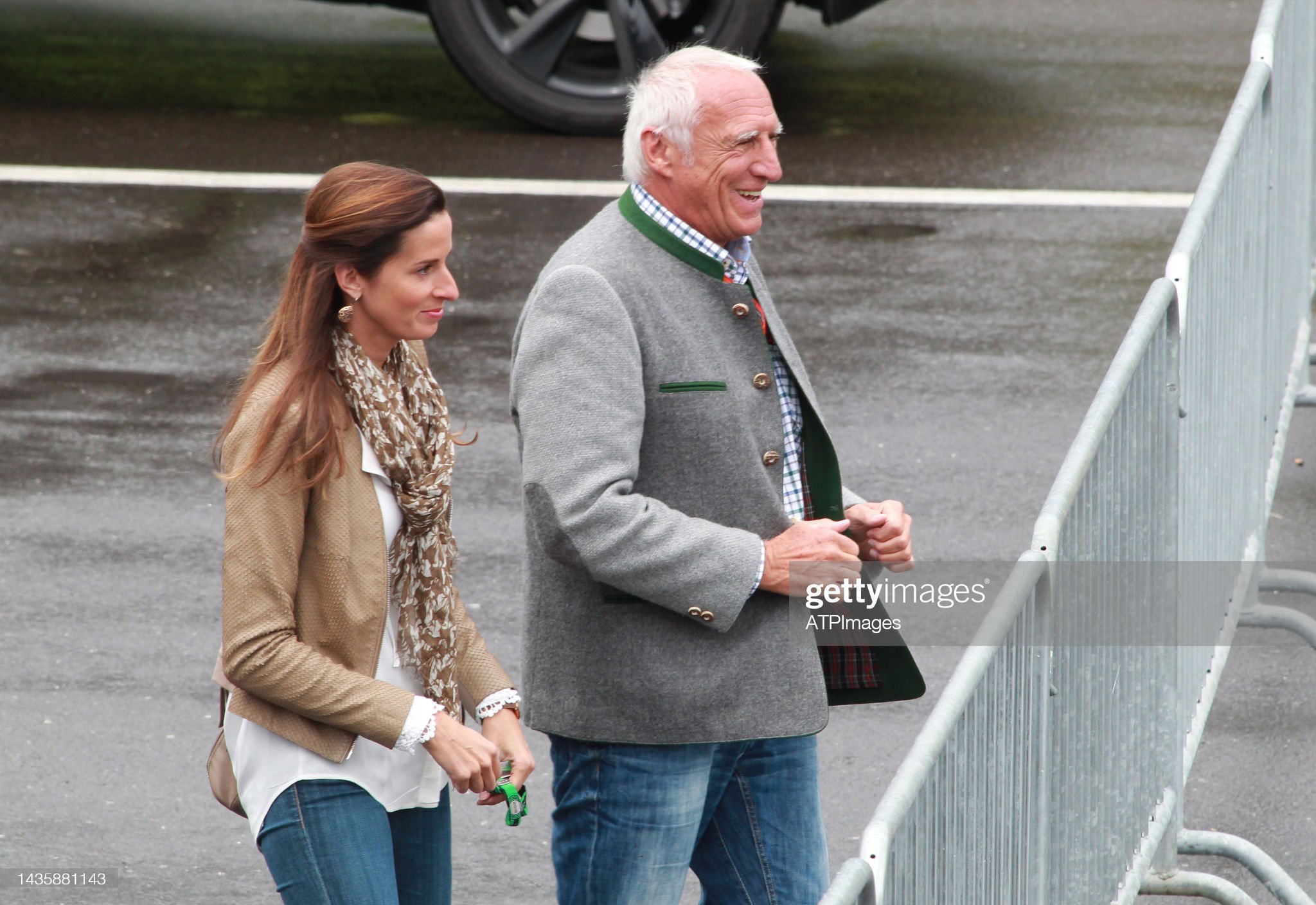
Dietrich Mateschitz and his partner Marion Feichtner during the F1 Grand Prix of Austria on June 20, 2015 in Spielberg, Austria. Photo by Arthur Thill / ATP Images / Getty Images.
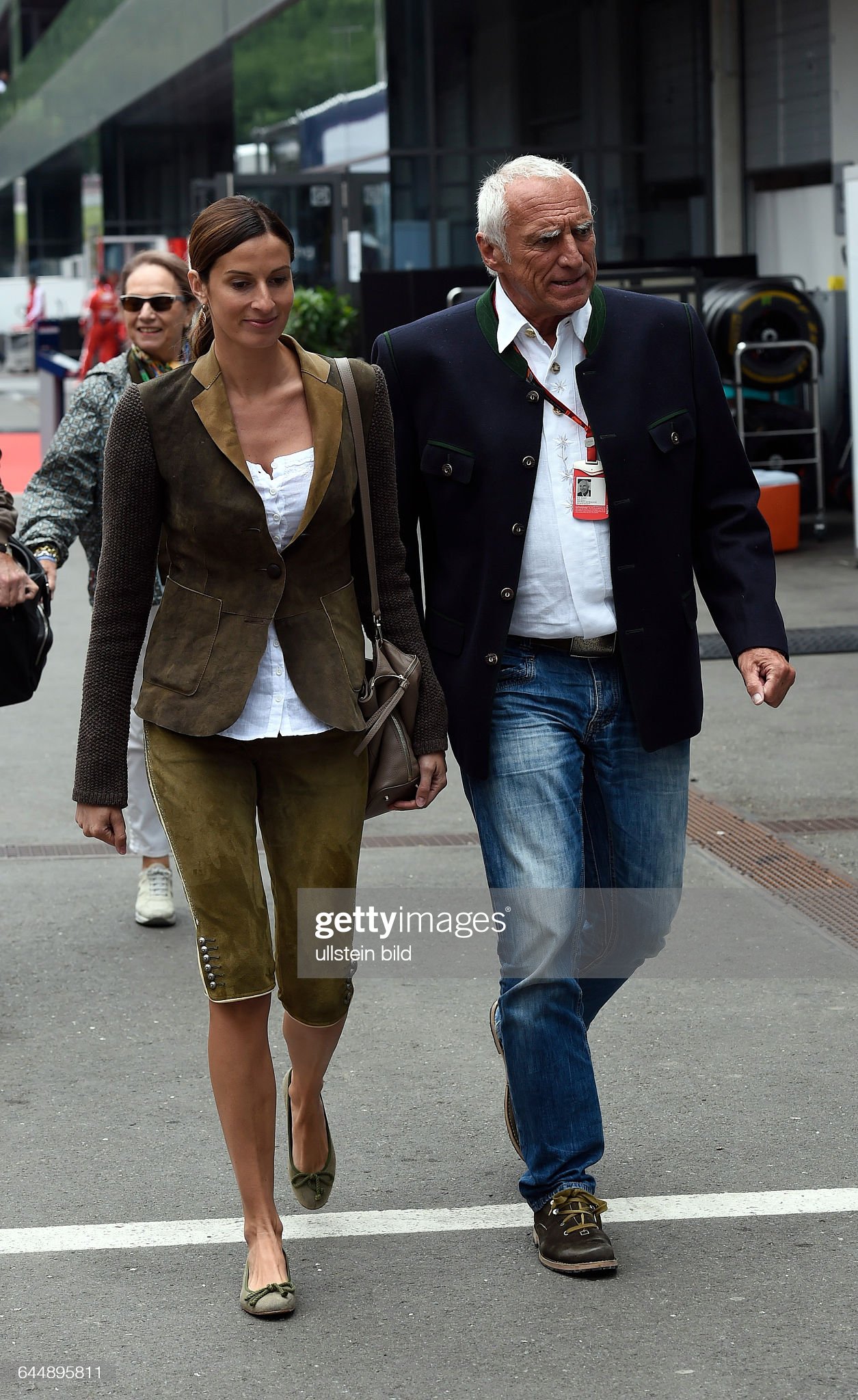
Dietrich Mateschitz and his partner Marion Feichtner during the F1 Grand Prix of Austria on June 21, 2015 in Spielberg, Austria. Photo by Melzer / Ullstein Bild via Getty Images.
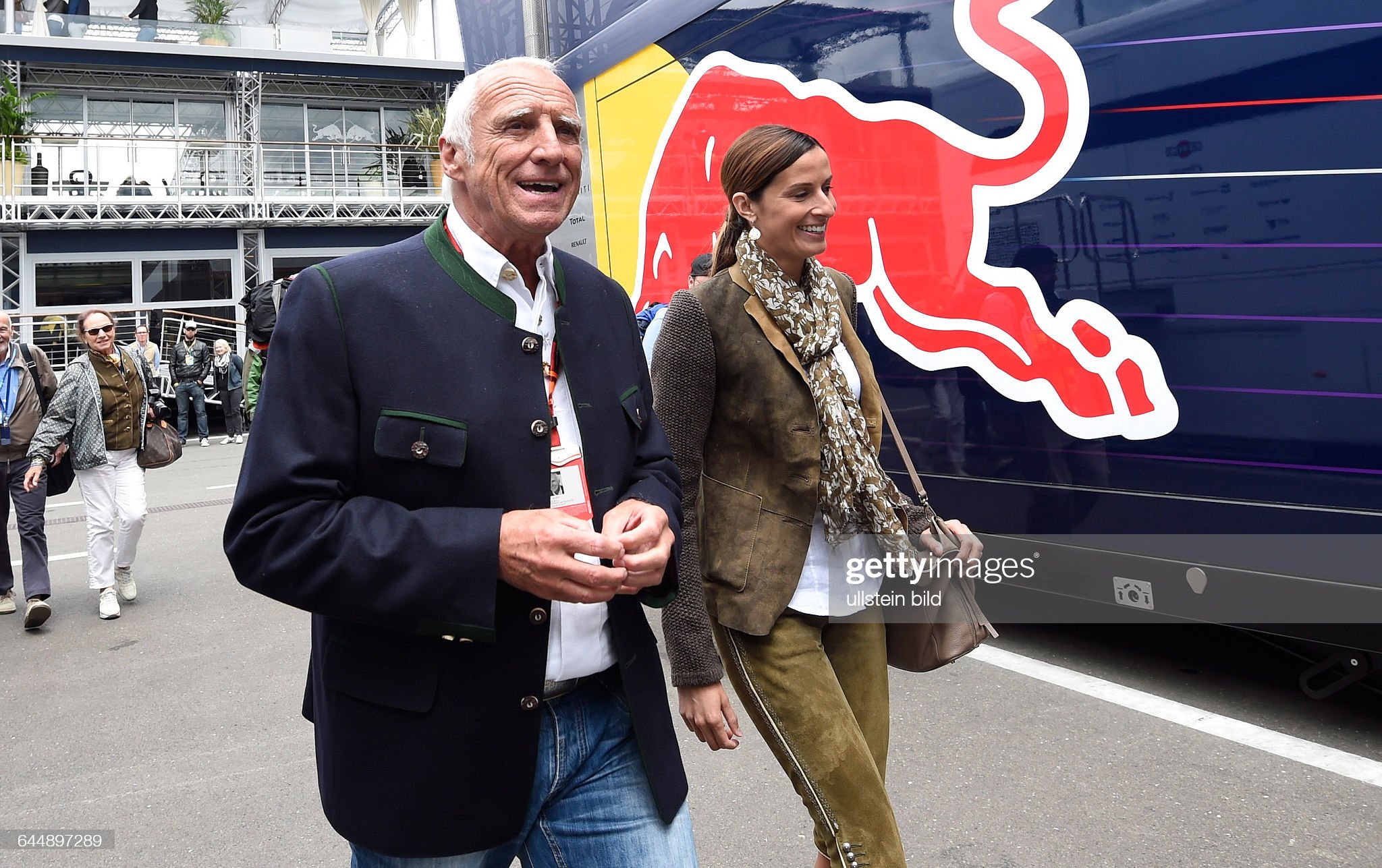
Dietrich Mateschitz and his partner Marion Feichtner during the F1 Grand Prix of Austria on June 21, 2015 in Spielberg, Austria. Photo by Melzer / Ullstein Bild via Getty Images.
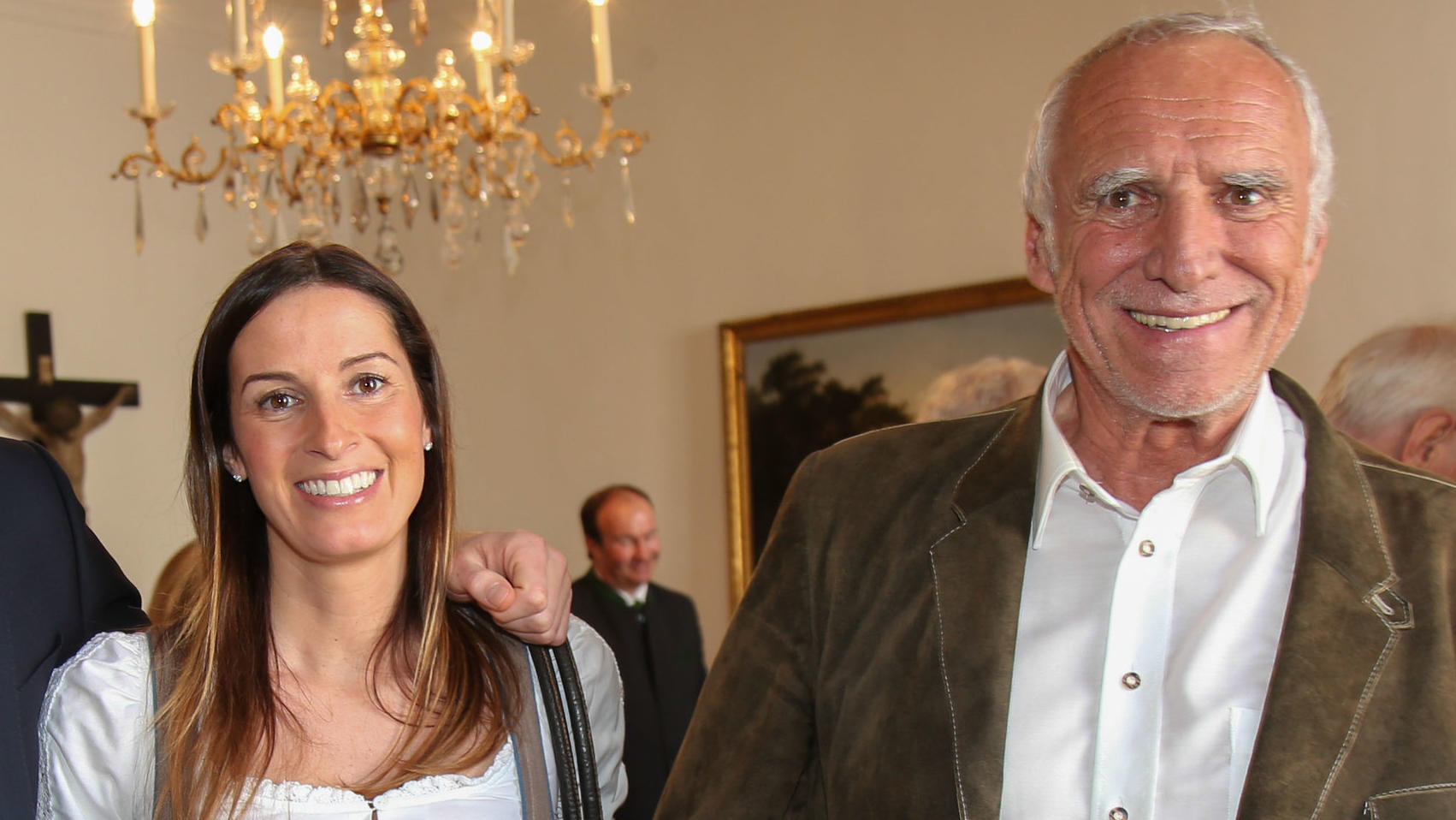
Dietrich Mateschitz with his partner Marion Feichtner in 2016.
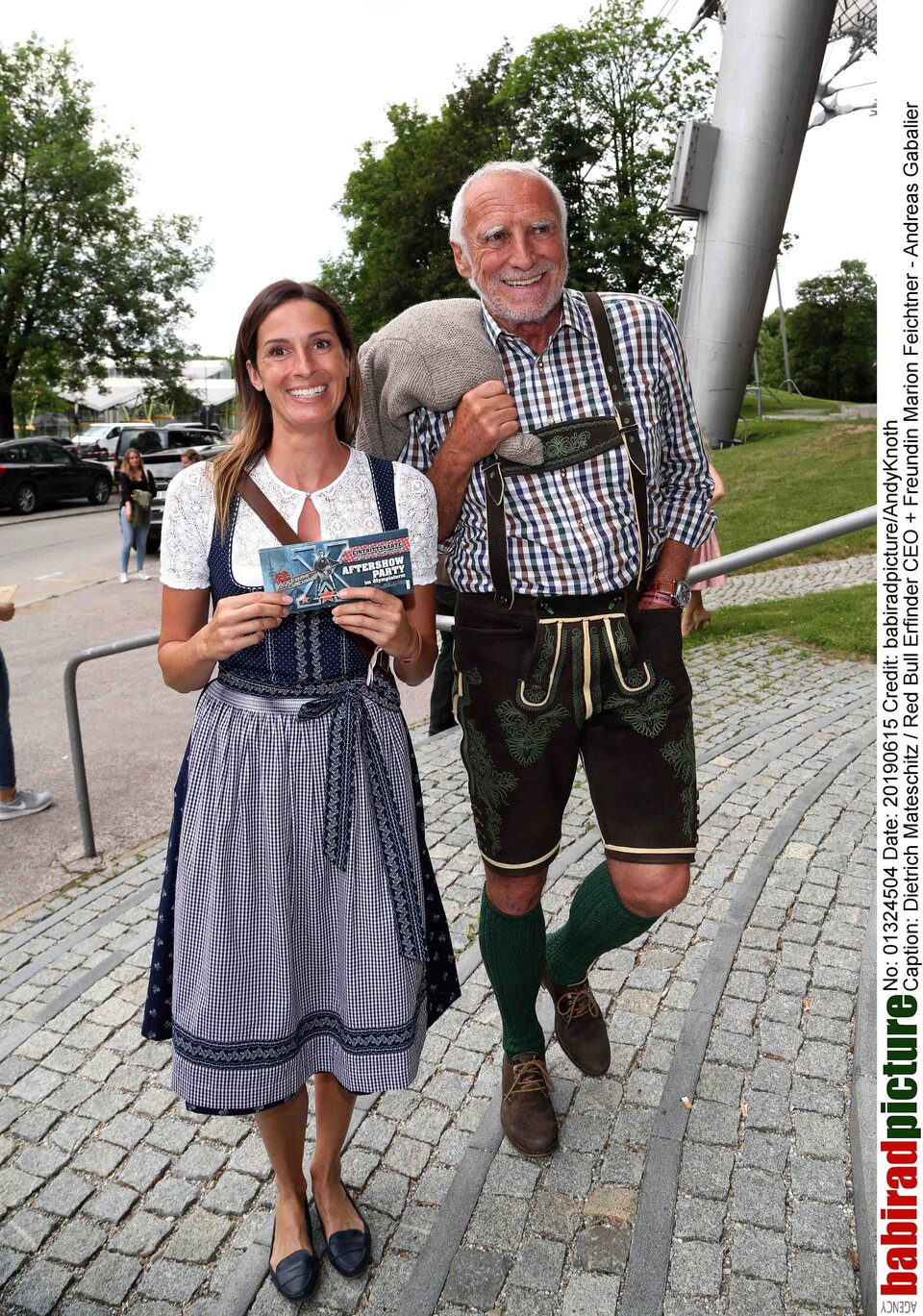
Dietrich Mateschitz with his partner Marion Feichtner on June 15, 2019.
Mr. Mateschitz, who never married, is survived by his partner, Marion Feichtner and a son, Mark Mateschitz, from a previous relationship.
Although his marketing focus was on sports, Mr. Mateschitz dabbled in far-right politics. The left-leaning German newspaper Süddeutsche Zeitung described his ServusTV channel as the “home channel of Austrian right-wing populism” and referred to a news website Mr. Mateschitz founded as “Breitbart from the Alps,” a reference to the far-right U.S. site.
In a rare interview with an Austrian paper in 2017, he criticized Germany’s refugee policy, worried about political correctness and spoke favorably of President Donald J. Trump.
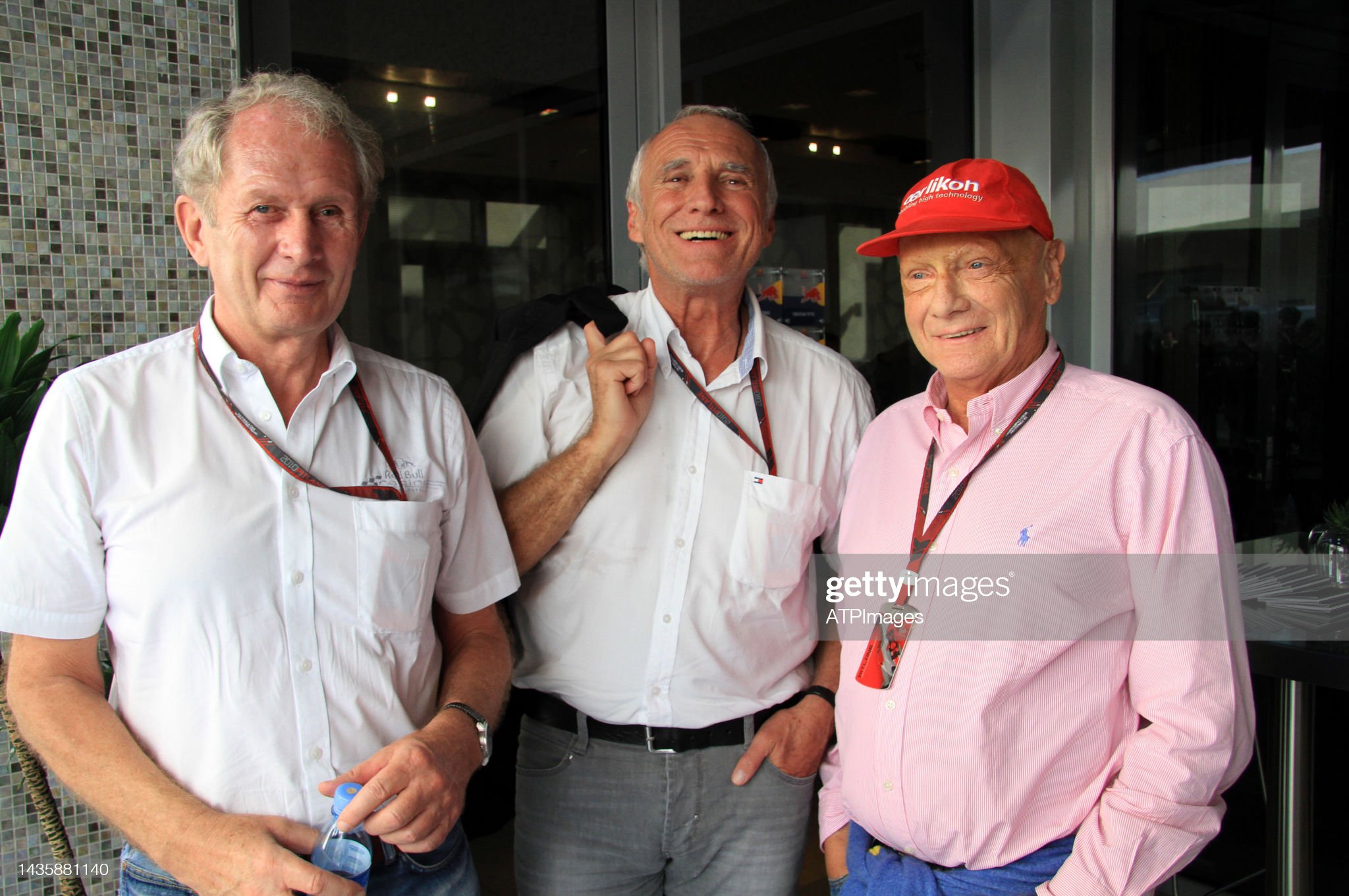
Dietrich Mateschitz, Dr. Helmut Marko and Niki Lauda on November 14, 2010 in Budapest, Hungary. Photo by Arthur Thill / ATP Images / Getty Images.
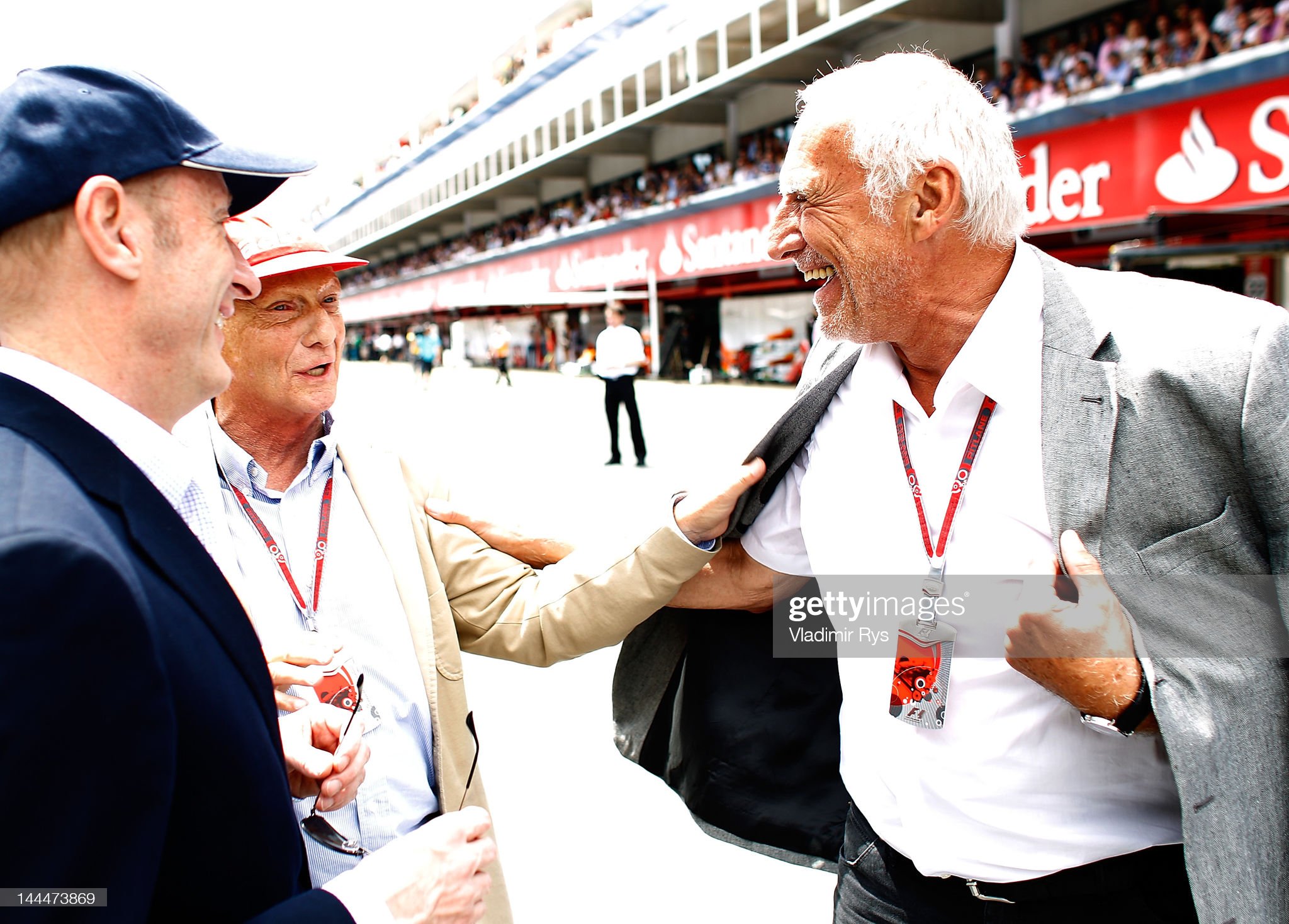
Dietrich Mateschitz speaks to Niki Lauda ahead of the Spanish Formula One Grand Prix at the Circuit de Catalunya on May 13, 2012 in Barcelona, Spain. Photo by Vladimir Rys / Getty Images.
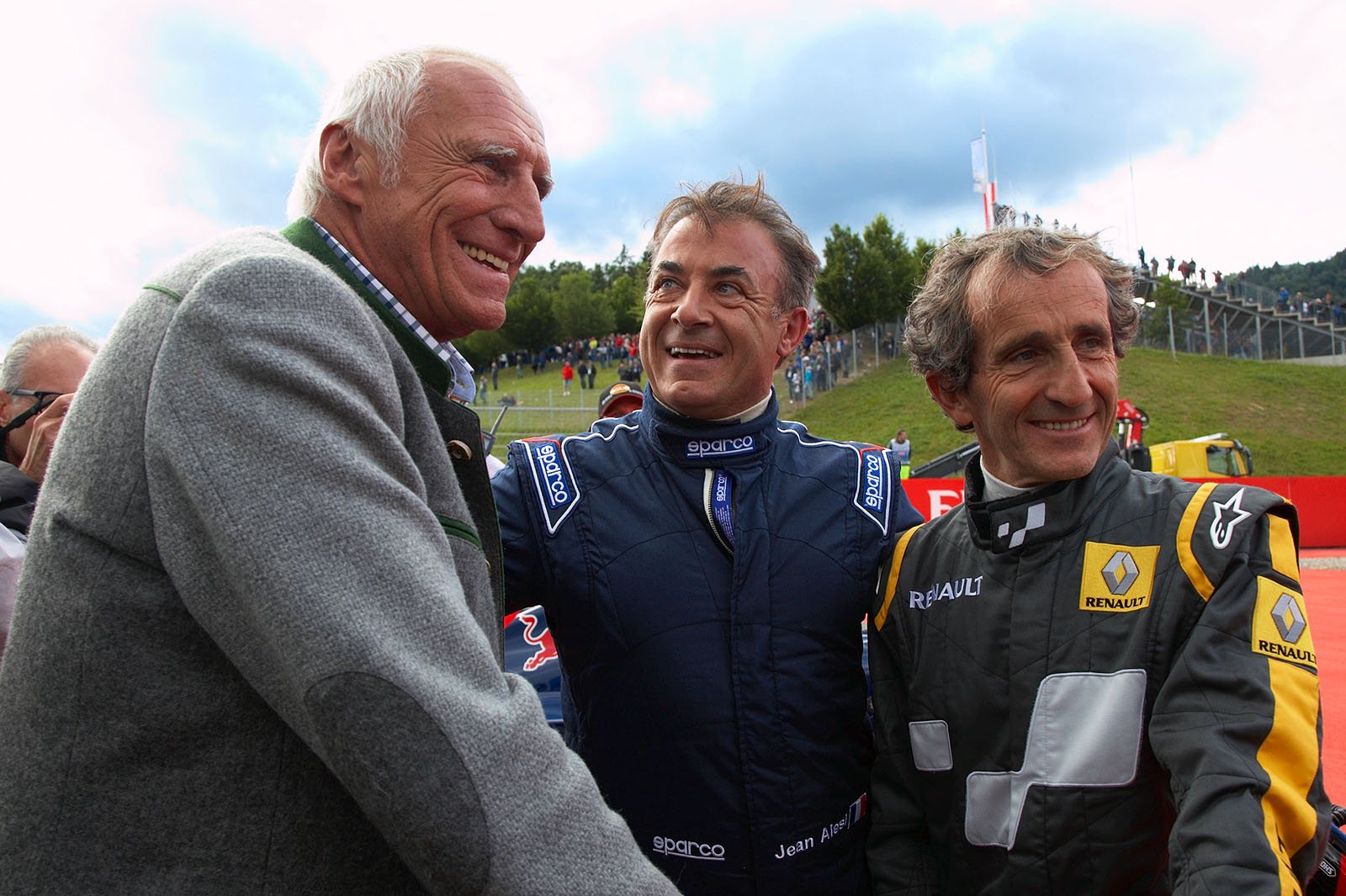
Dietrich Mateschitz with Jean Alesi and Alain Prost, Spielberg, Austrian Grand Prix, 2015. Photo by Rainer Schlegelmilch.
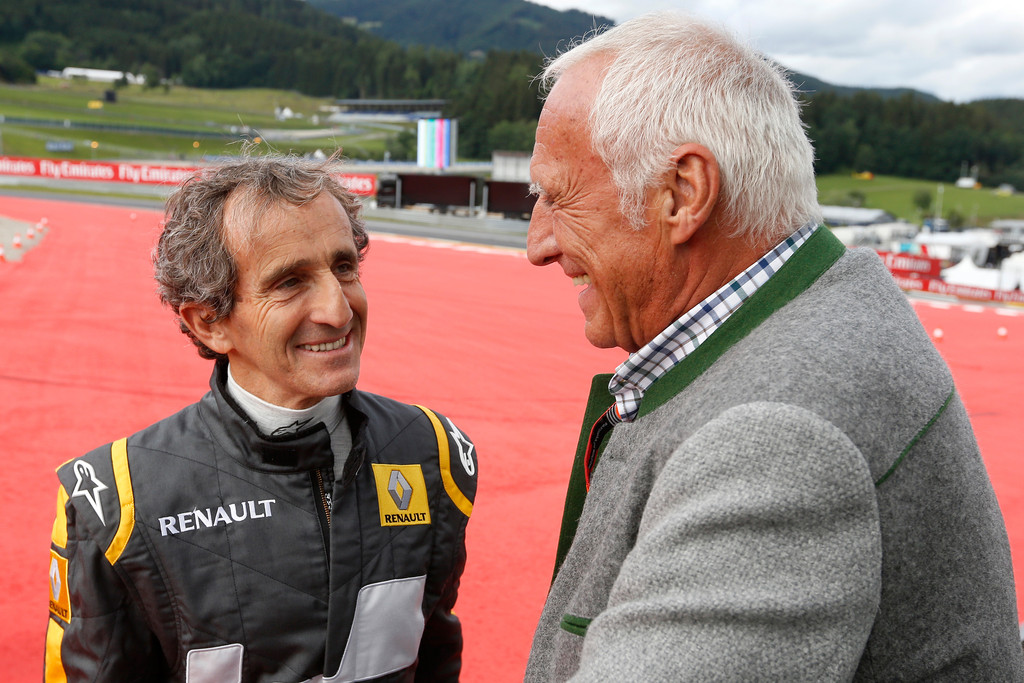
Dietrich Mateschitz and Alain Prost, Spielberg, Austrian Grand Prix, 2015.
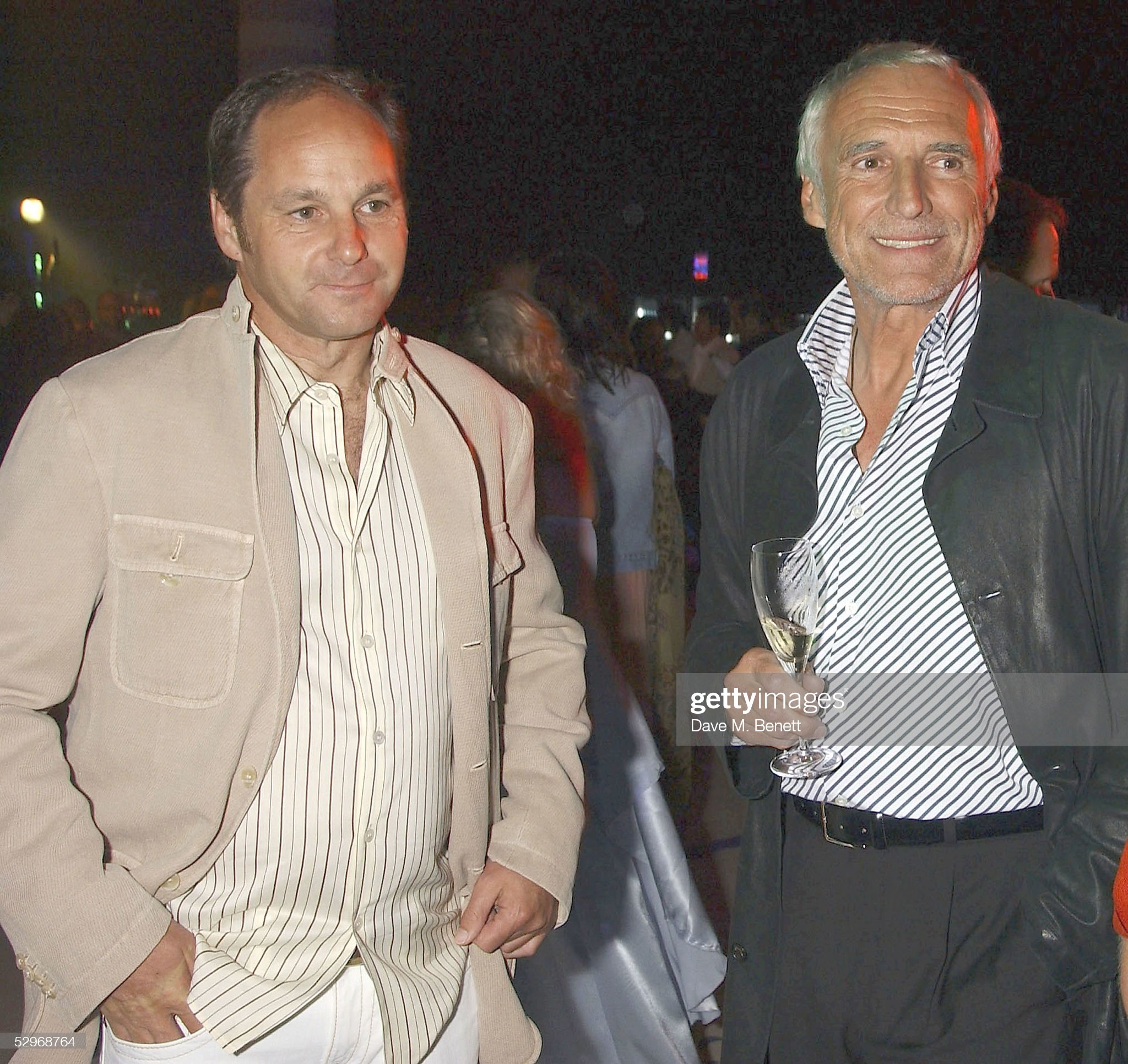
Gerhard Berger and Dieter Mateschitz attend the Red Bull Star Wars Grand Prix Party at the Grimaldi Forum on May 22, 2005 in Monte Carlo, Monaco. Photo by Dave Benett / Getty Images.
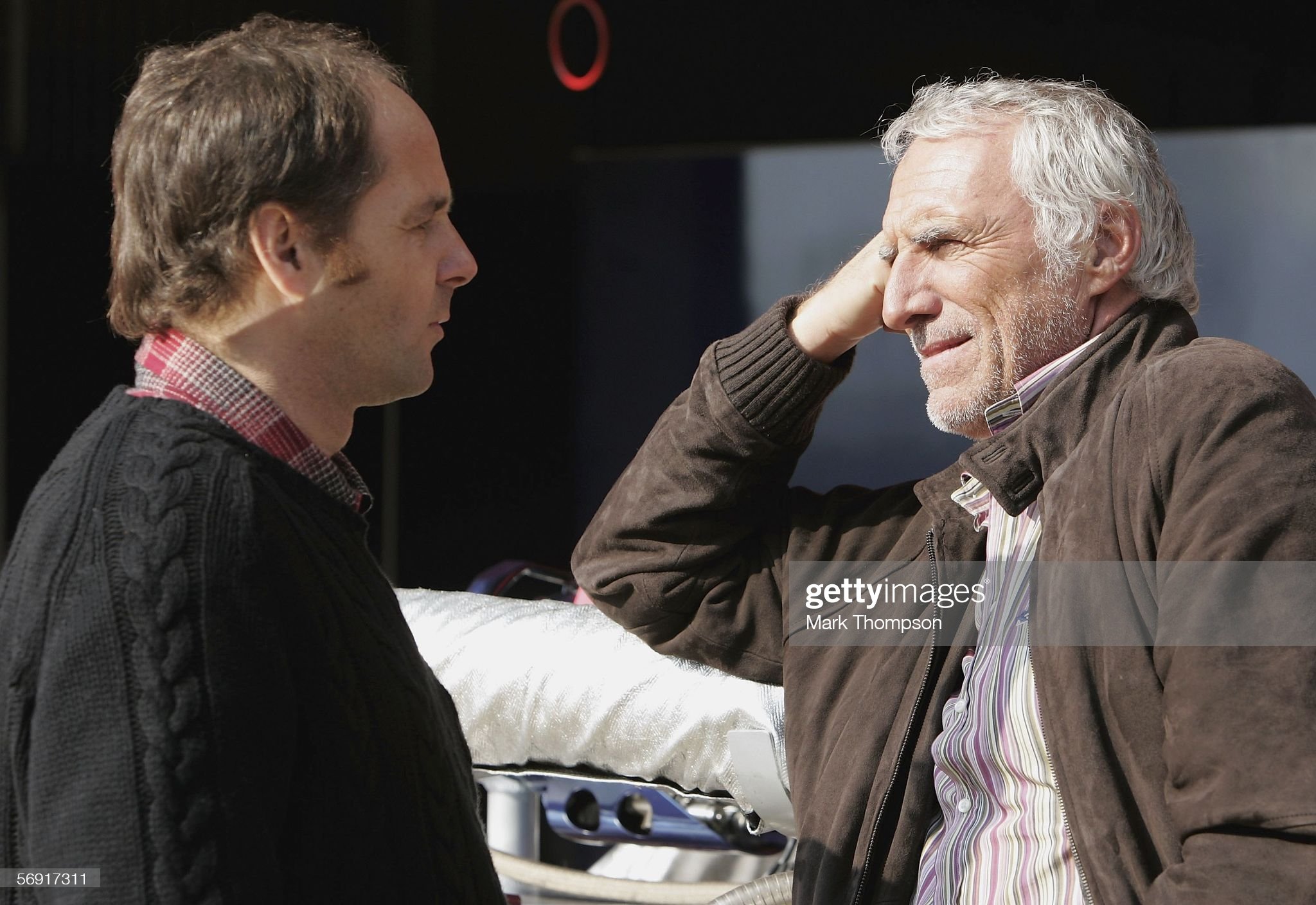
Dietrich Mateschitz and Gerhard Berger pose during Formula One testing at the Circuit de Catalunya on February 22, 2006 in Barcelona, Spain. Photo by Mark Thompson / Getty Images.
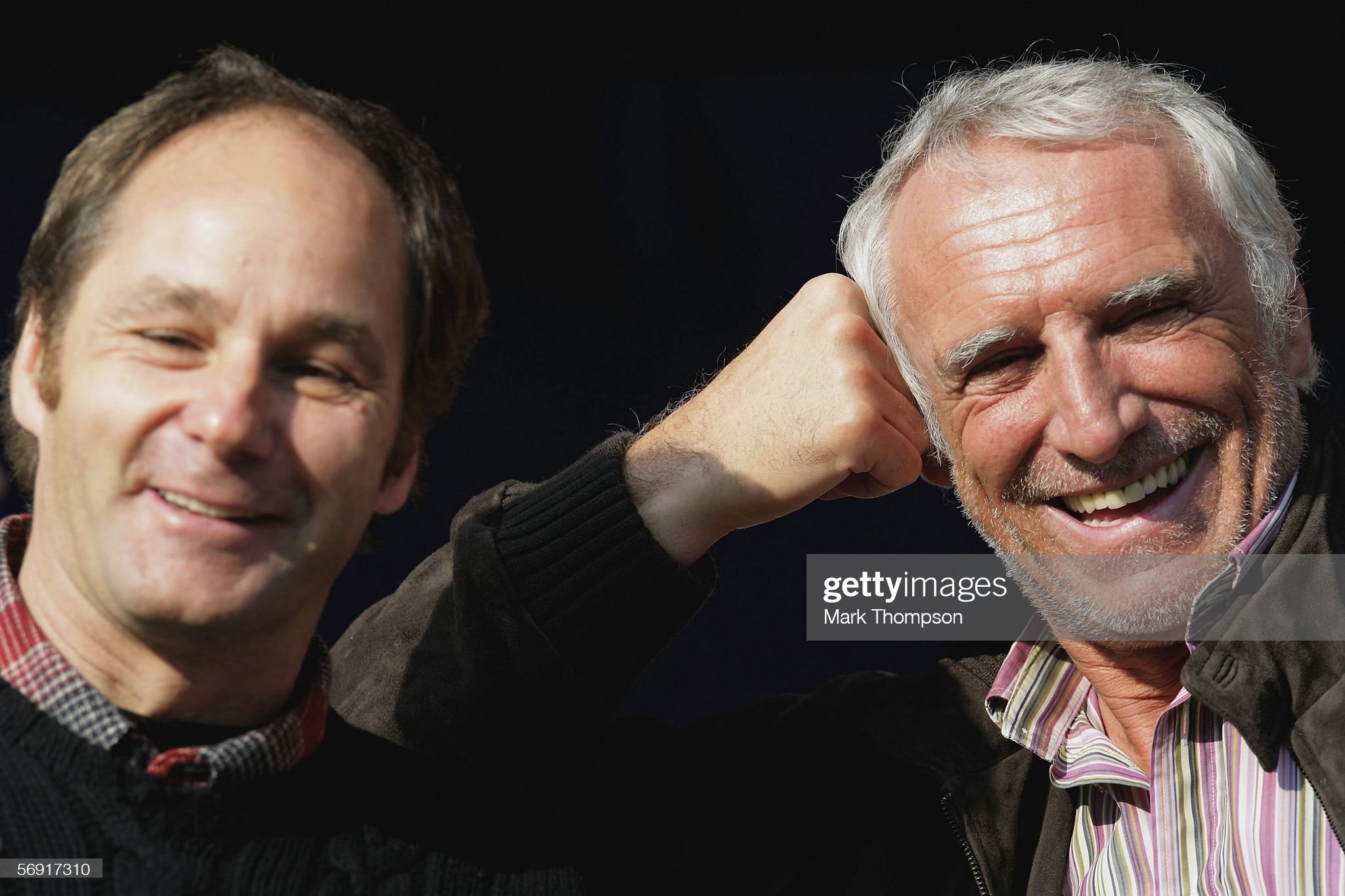
Dietrich Mateschitz and Gerhard Berger pose during Formula One testing at the Circuit de Catalunya on February 22, 2006 in Barcelona, Spain. Photo by Mark Thompson / Getty Images.
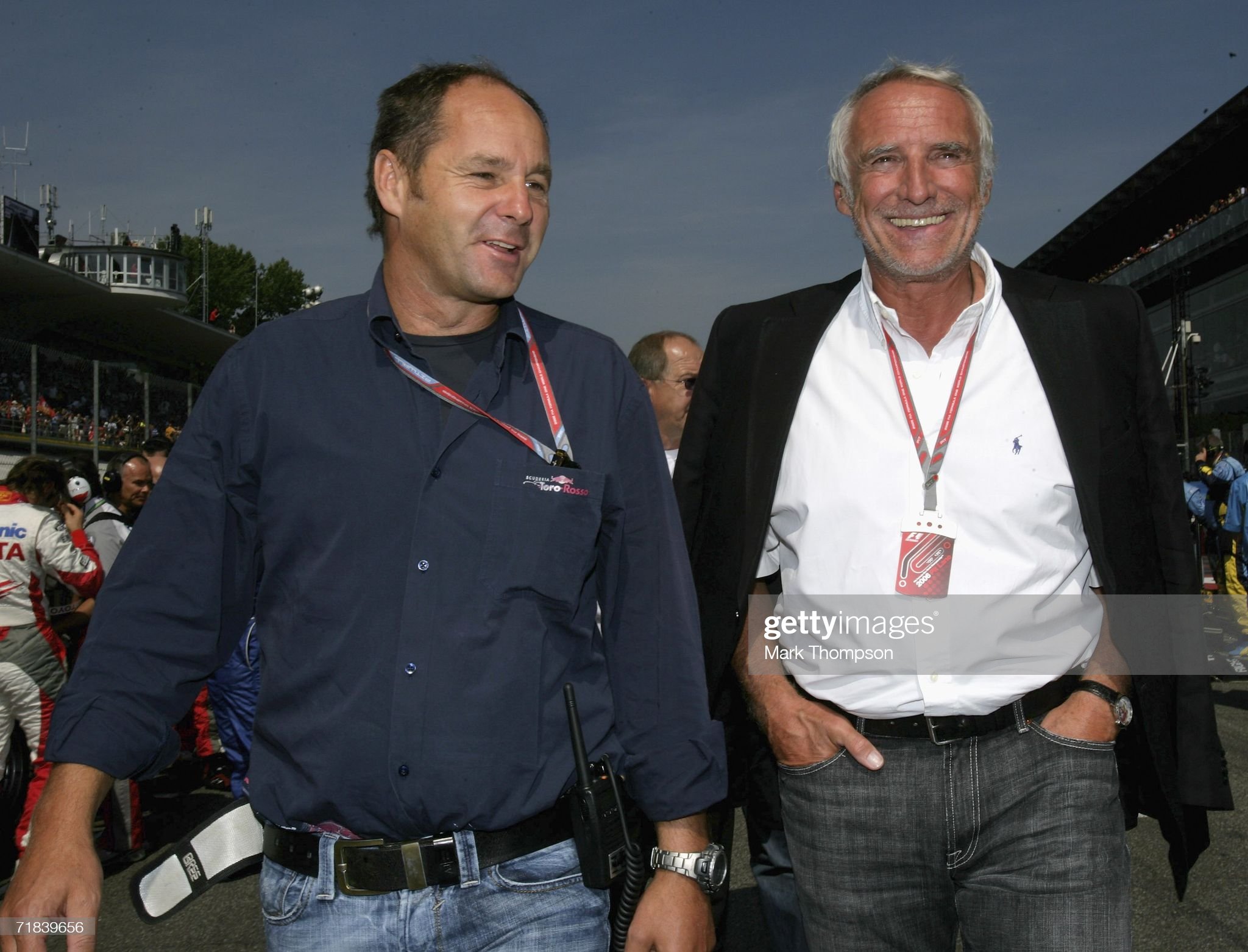
Dietrich Mateschitz with Gerhard Berger on the grid prior to the Italian Grand Prix at the Autodromo Nazionale di Monza on September 10, 2006, in Monza, Italy. Photo by Mark Thompson / Getty Images.
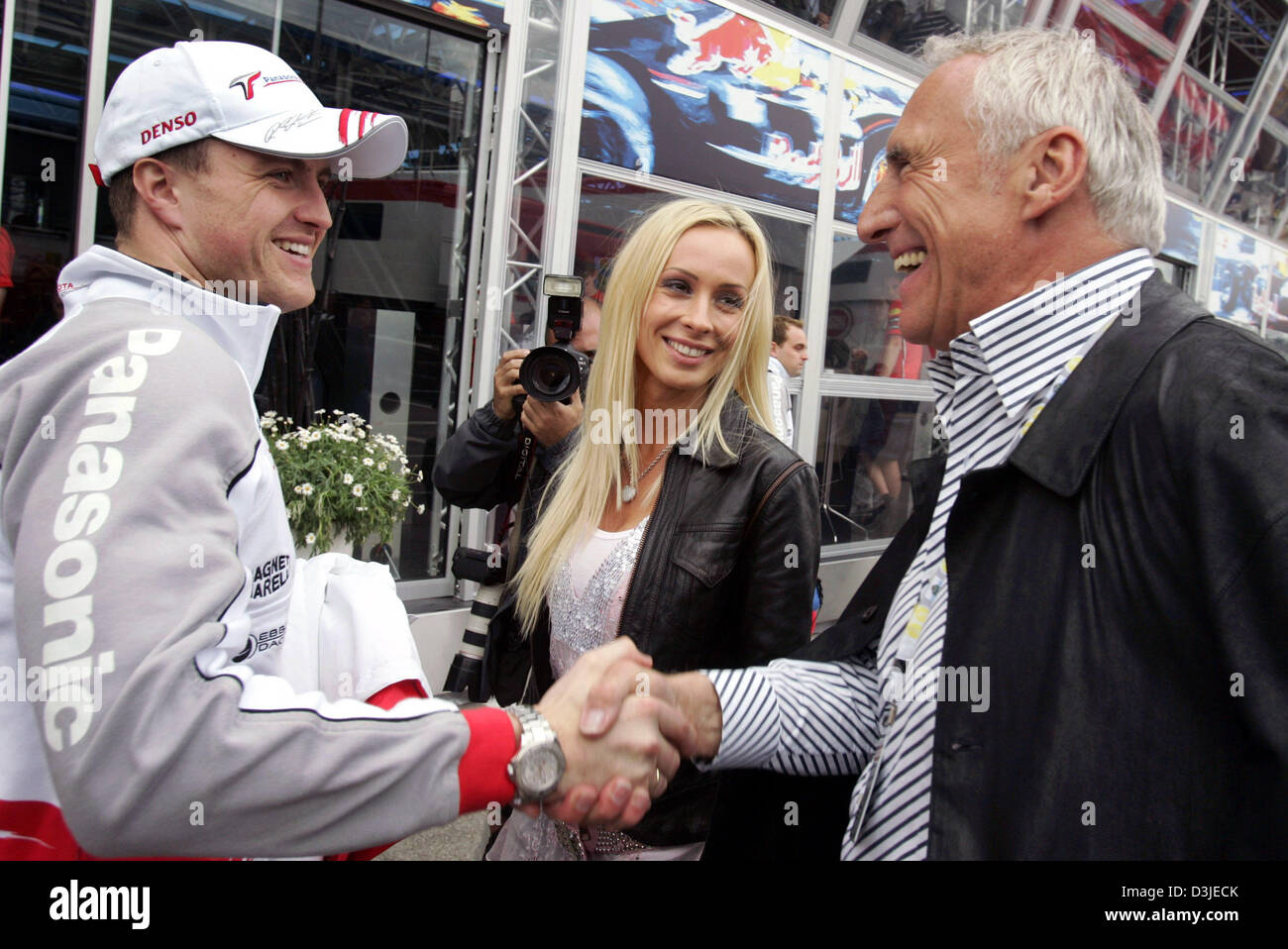
Austrian billionaire Dietrich Mateschitz greets German Formula One driver Ralf Schumacher of Toyota and his wife Cora Schumacher with a handshake, in the paddock at the Formula One racetrack in Imola, Italy, 23 April 2005.
Despite owing much of his success to his ability to gain publicity for his brand, he preferred a life away from the spotlight for himself. He granted few interviews and avoided society events where paparazzi would be present. Even the company email announcing his death reportedly asked that employees “express your grief quietly and reservedly.” The Red Bull website did not carry an official notice.

In this handout photo, Felix Baumgartner, world-renowned BASE jumper, is pictured in flight over Dover on July 31, 2003. Baumgartner became the first person to skydive across the strait between England and France, free falling from 9,000 metres above sea level at temperatures of minus 55 degrees with nothing more than a 1.80 metres carbon fibre wing and his parachute. Photo by Helmut Tucek via Getty Images.

Felix Baumgartner and Micaela Schwarzenberger during the 20th Annual Jose Carreras Gala on December 18, 2014 in Rust, Germany. Photo by Gisela Schober / Getty Images.
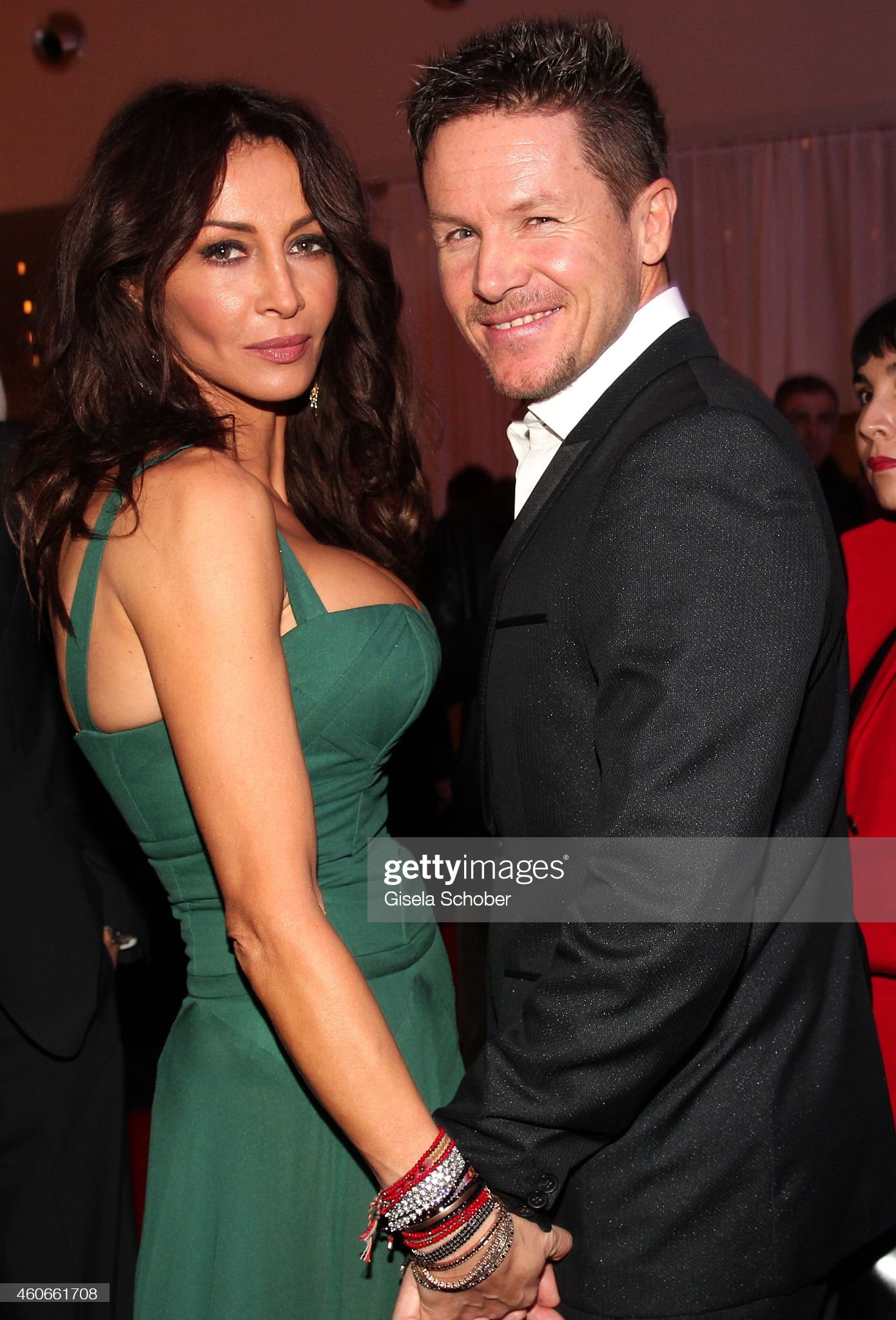
Felix Baumgartner and Micaela Schwarzenberger during the 20th Annual Jose Carreras Gala on December 18, 2014 in Rust, Germany. Photo by Gisela Schober / Getty Images.
But he had a sure eye for the attention-getting stunt. In 2012, he sponsored the attempt of an Austrian daredevil, Felix Baumgartner, to make the world’s highest jump.
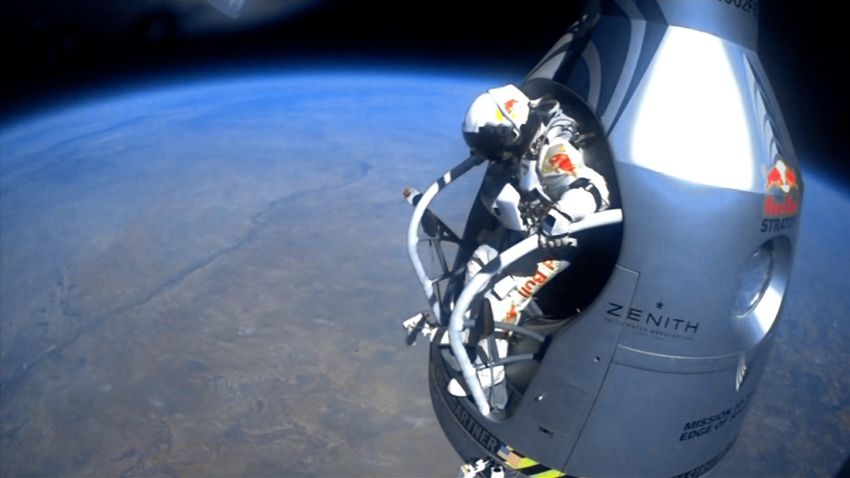
Felix Baumgartner's near-cosmic achievement.
In front of a livestreaming crowd of millions, in a spacesuit and helmet festooned with Red Bull logos, Mr. Baumgartner ascended into the stratosphere by helium balloon and then jumped from an altitude of more than 24 miles above the New Mexico desert.
When Mr. Baumgartner landed, after becoming the first human to break the sound barrier under his own power, Mr. Mateschitz was on the ground, waiting to greet him.
But there was always a disconnect between the powerful displays of daring and athleticism Mr. Mateschitz sponsored and the drink itself.
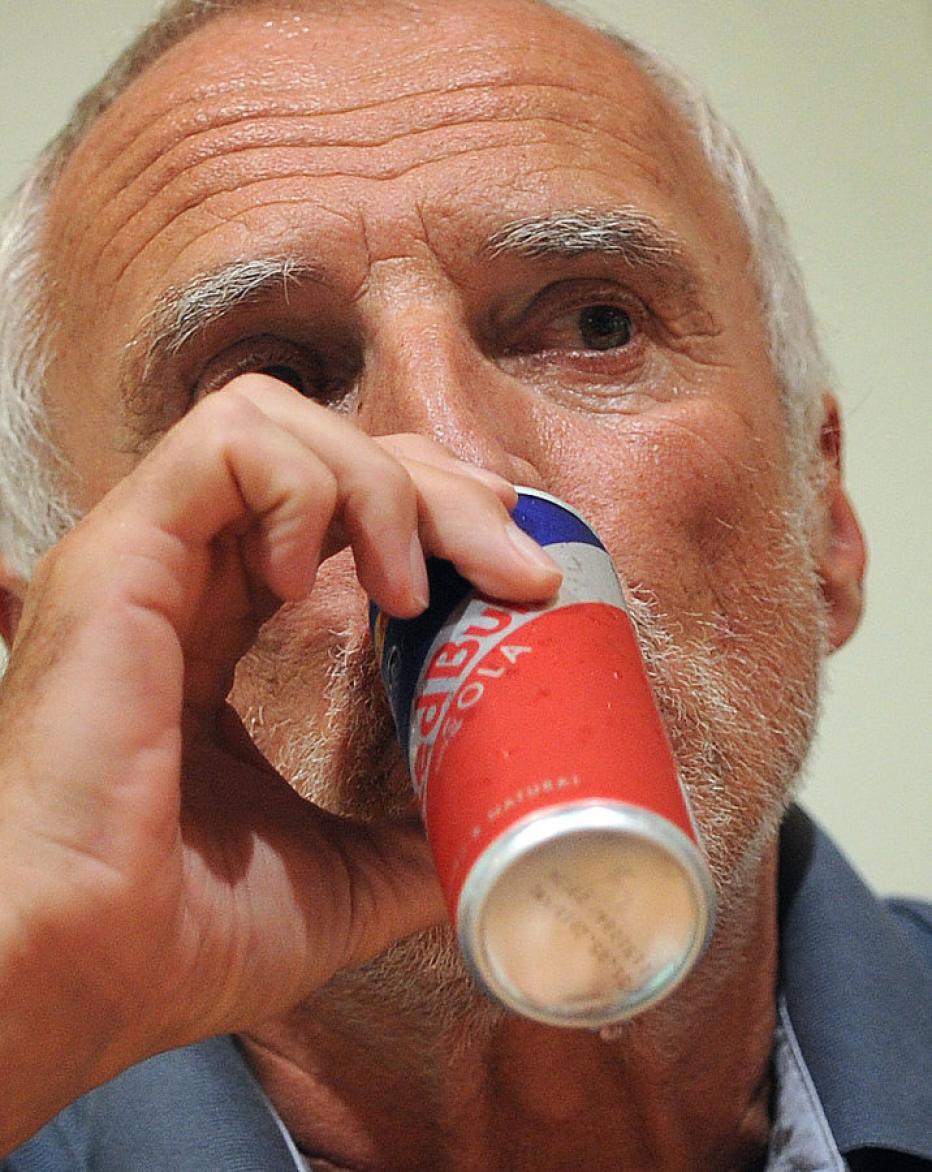
Photo by Bild.
Mr. Mateschitz told the news media that he was a devoted consumer, claiming to drink as many as 12 cans of Red Bull a day.
But in 2006, he said that he had gained too much weight. A few years earlier, he said, he had to switch to the diet version.
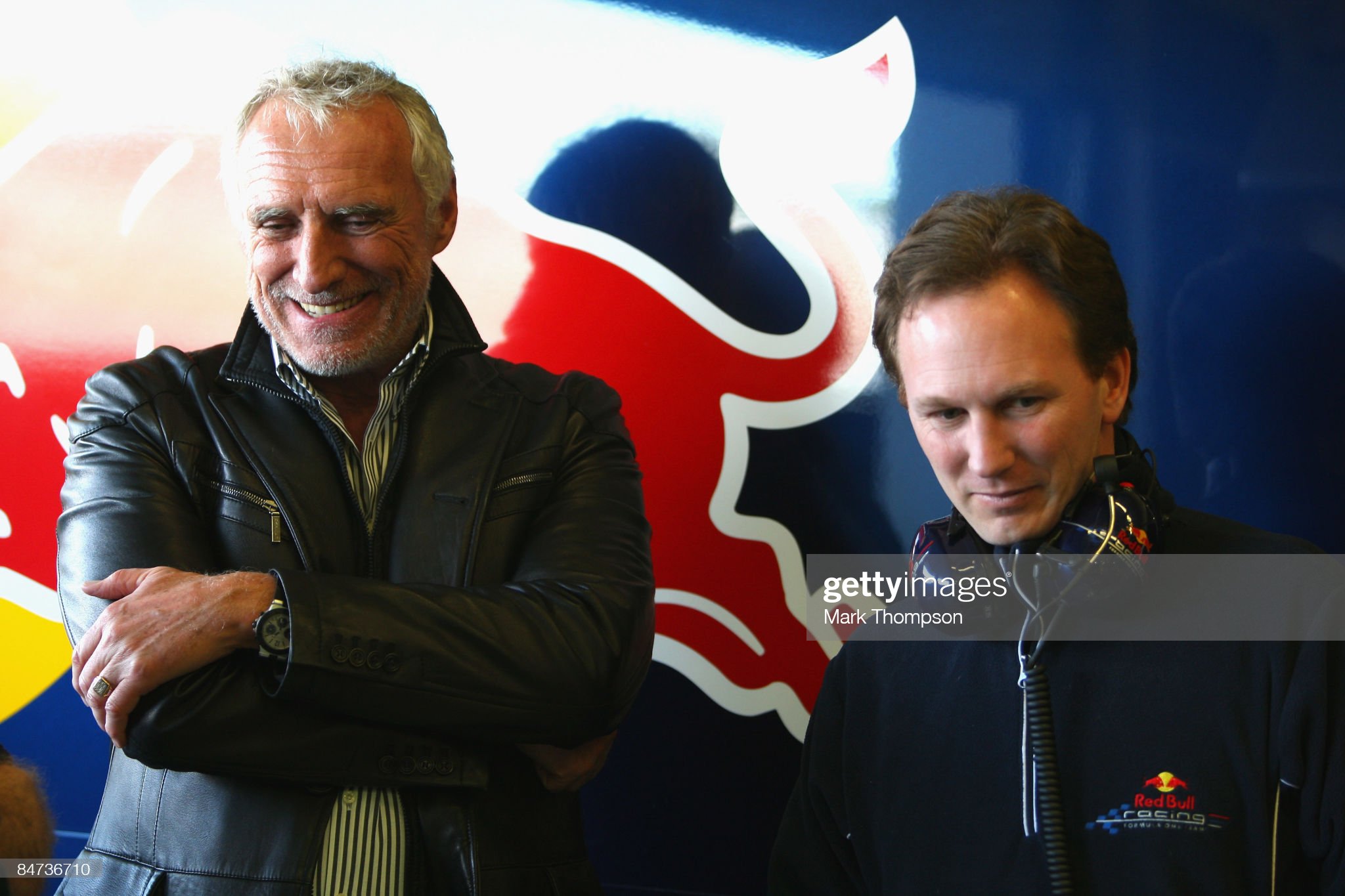
Dieter Mateschitz and team Red Bull Racing team principal Christian Horner talk in the pits during Formula 1 testing on February 11, 2009 in Jerez de la Frontera, Spain. Photo by Mark Thompson / Getty Images.
Red Bull co-owner Dietrich Mateschitz dies, aged 78, after long-term illness. Saturday 22 October 2022. By ‘PA Media’.
The Red Bull co-owner Dietrich Mateschitz has died at the age of 78. The Austrian billionaire, integral in Red Bull’s involvement in Formula One, had been battling a long-term illness.
His death was announced to Red Bull staff before qualifying for Sunday’s United States Grand Prix at the Circuit of Americas in Austin.
Mateschitz founded the energy drinks company in 1984. He bought the Jaguar F1 team 20 years later and renamed it ‘Red Bull Racing’ the following season.
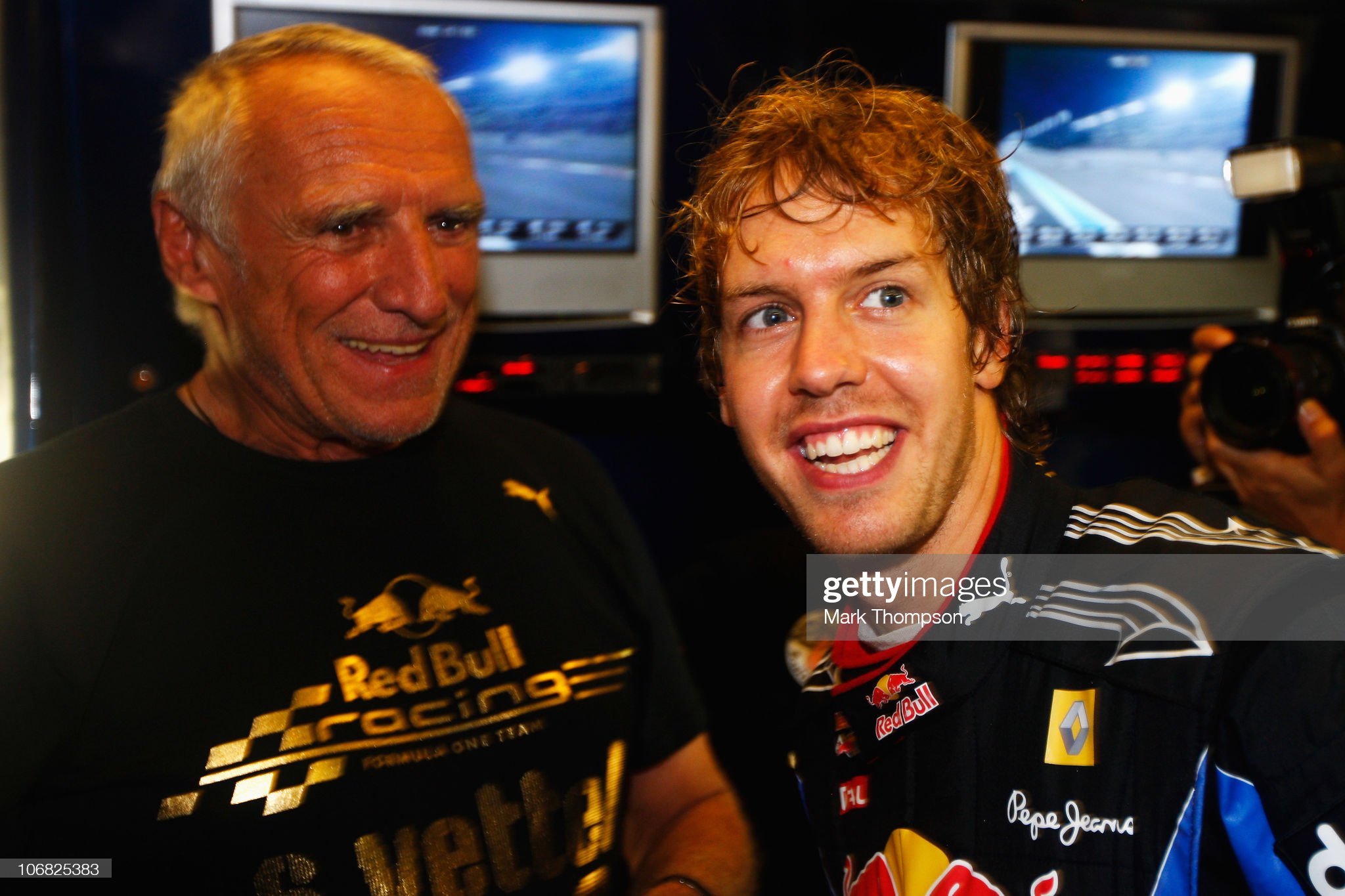
Dietrich Mateschitz congratulates Sebastian Vettel of Germany and Red Bull Racing in their team garage during the Abu Dhabi Formula One Grand Prix at the Yas Marina Circuit on November 14, 2010 in Abu Dhabi, United Arab Emirates. Photo by Mark Thompson / Getty Images.
In 2010, Sebastian Vettel landed Red Bull’s first F1 title, going on to win four in succession.
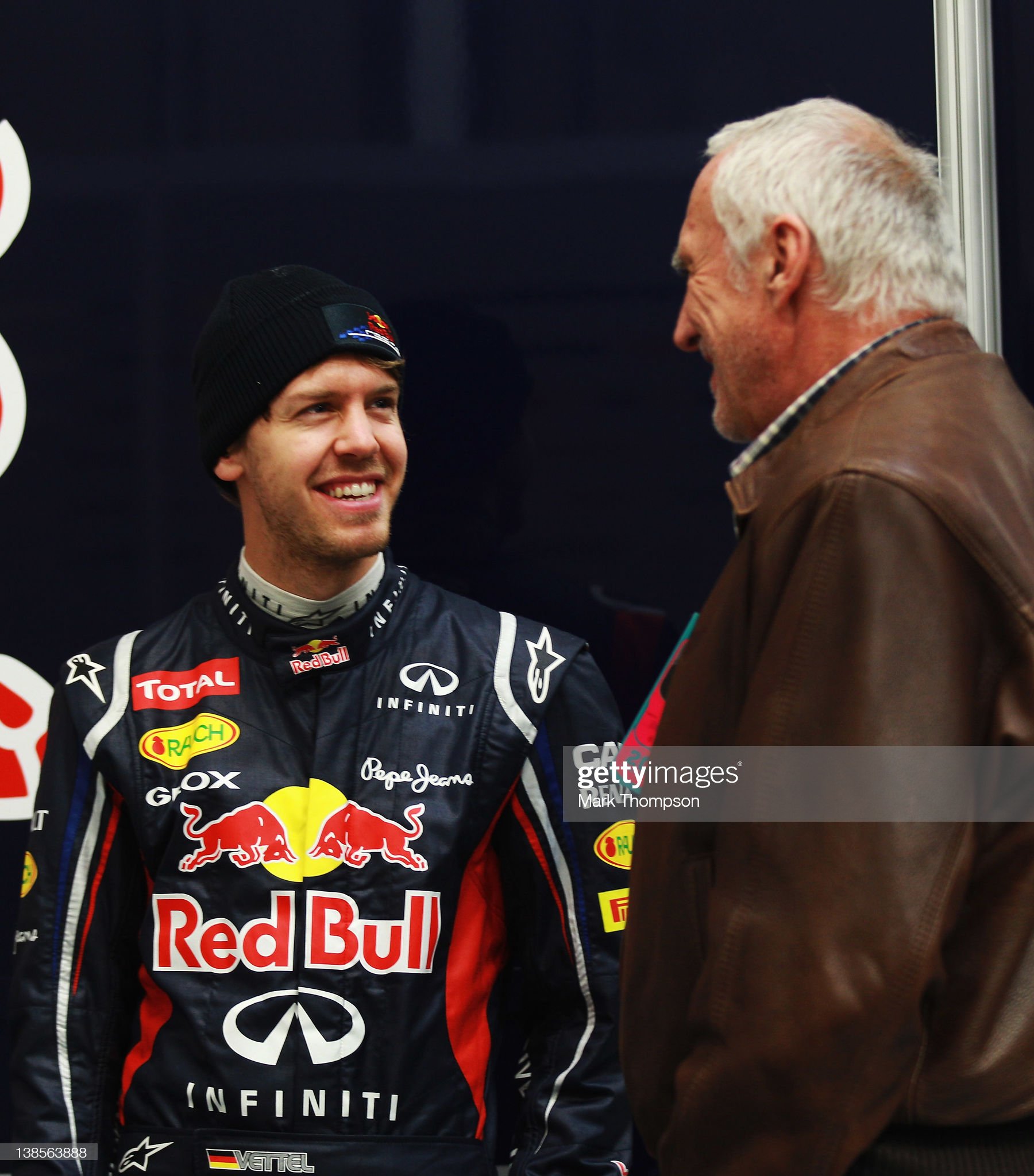
Sebastian Vettel talks with Red Bull Racing team owner Dietrich Mateschitz in their team garage during day three of Formula One winter testing at the Circuito de Jerez on February 09, 2012 in Jerez de la Frontera, Spain. Photo by Mark Thompson / Getty Images.
The Red Bull driver Max Verstappen secured his second championship in a row at the Japanese Grand Prix earlier this month and the team is set to wrap up this season’s constructors’ championship this weekend.
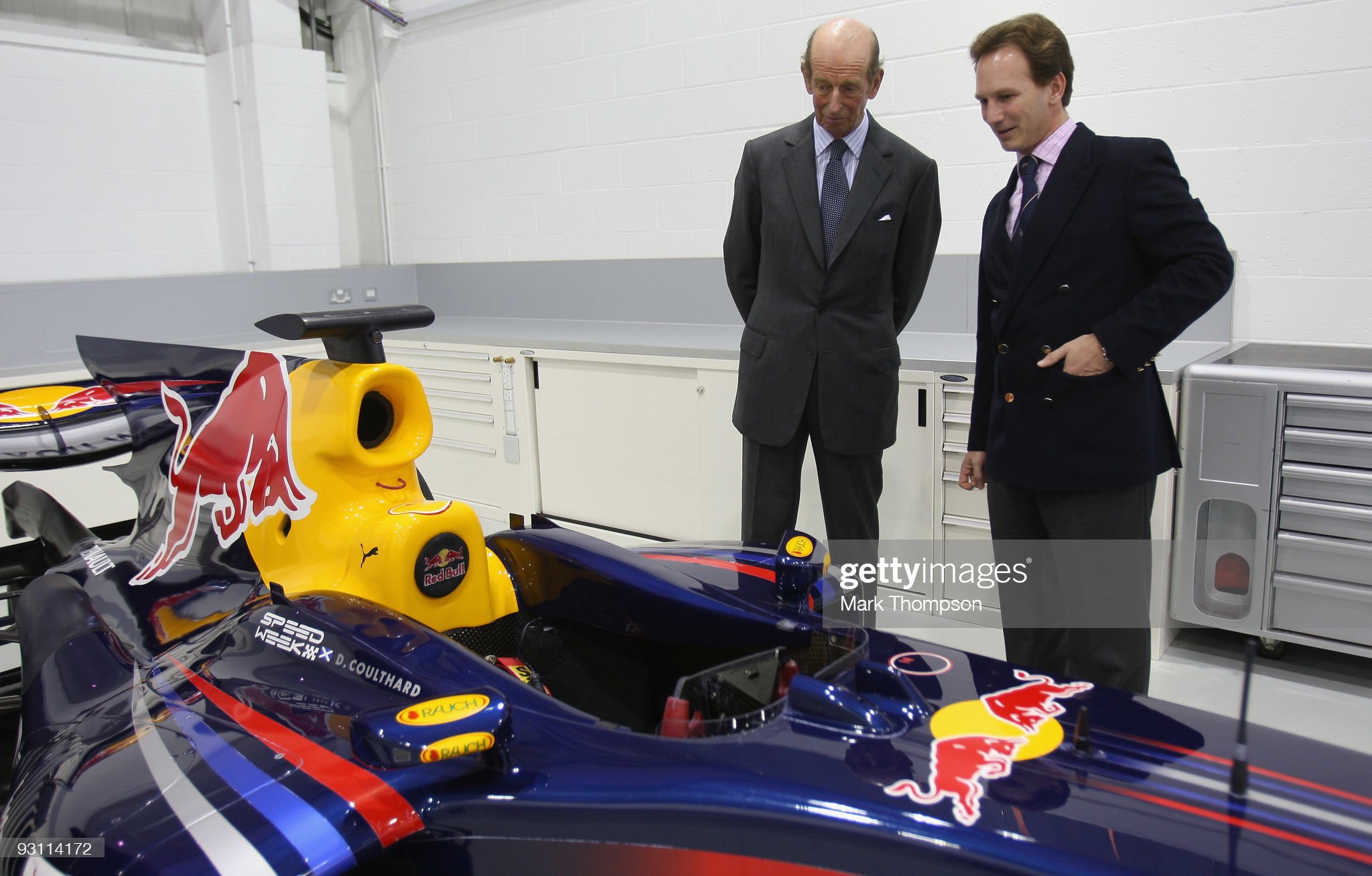
Prince Edward, Duke of Kent, with Red Bull Racing principal Christian Horner at the Red Bull Racing headquarters in Milton Keynes, England, on November 17, 2009. Photo by Mark Thompson / Getty Images.
“It is with great sadness that we learned of Dietrich’s death,” said Red Bull team principal, Christian Horner. “He was an incredible man and he loved Formula One. We owe him a great deal as a team and what he would want more than anything is to see his two cars go out in qualifying today. My thoughts are with his family.”
Tributes have been paid to Dietrich Mateschitz, the owner and co-founder of the sports drink company Red Bull, who has died aged 78. By CNN.
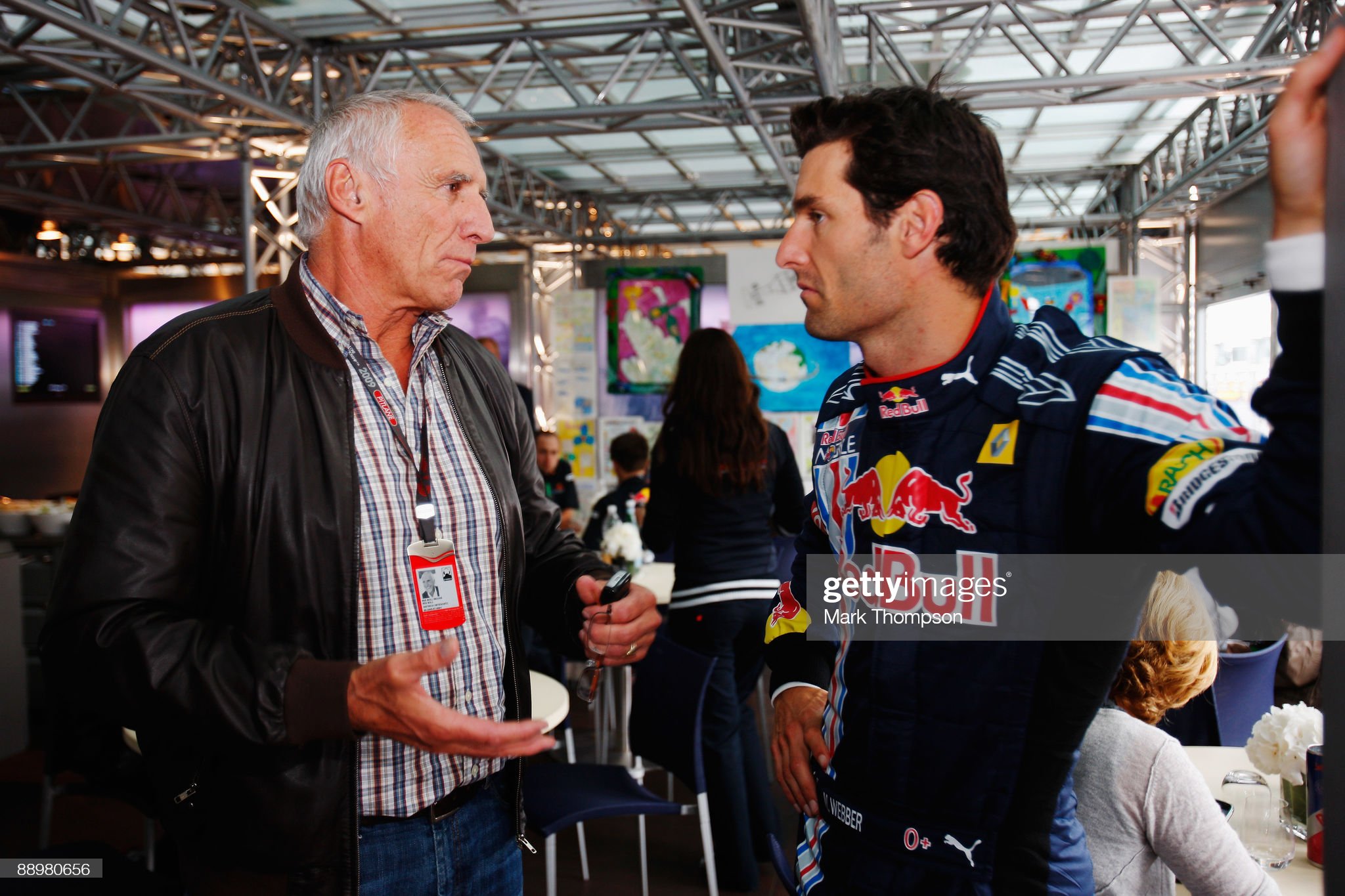
Mark Webber of Australia and Red Bull Racing talks with Red Bull owner Dietrich Mateschitz after taking pole position during qualifying for the German Formula One Grand Prix at Nurburgring on July 11, 2009 in Nurburg, Germany. Photo by Mark Thompson / Getty Images.
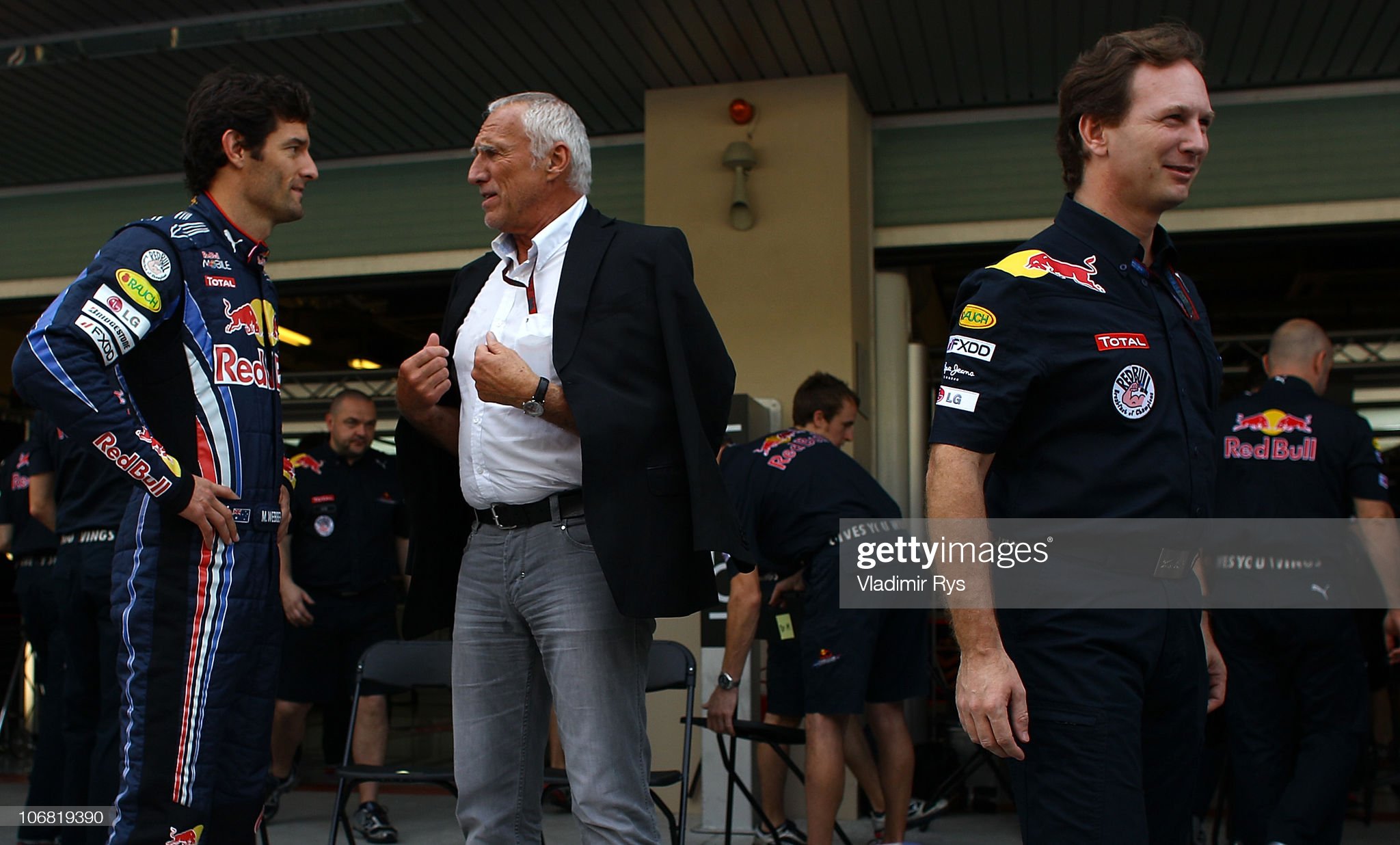
Mark Webber talks with Dietrich Mateschitz as team principal Christian Horner passes by before the Abu Dhabi Formula One Grand Prix at the Yas Marina Circuit on November 14, 2010 in Abu Dhabi, United Arab Emirates. Photo by Vladimir Rys / Getty Images.
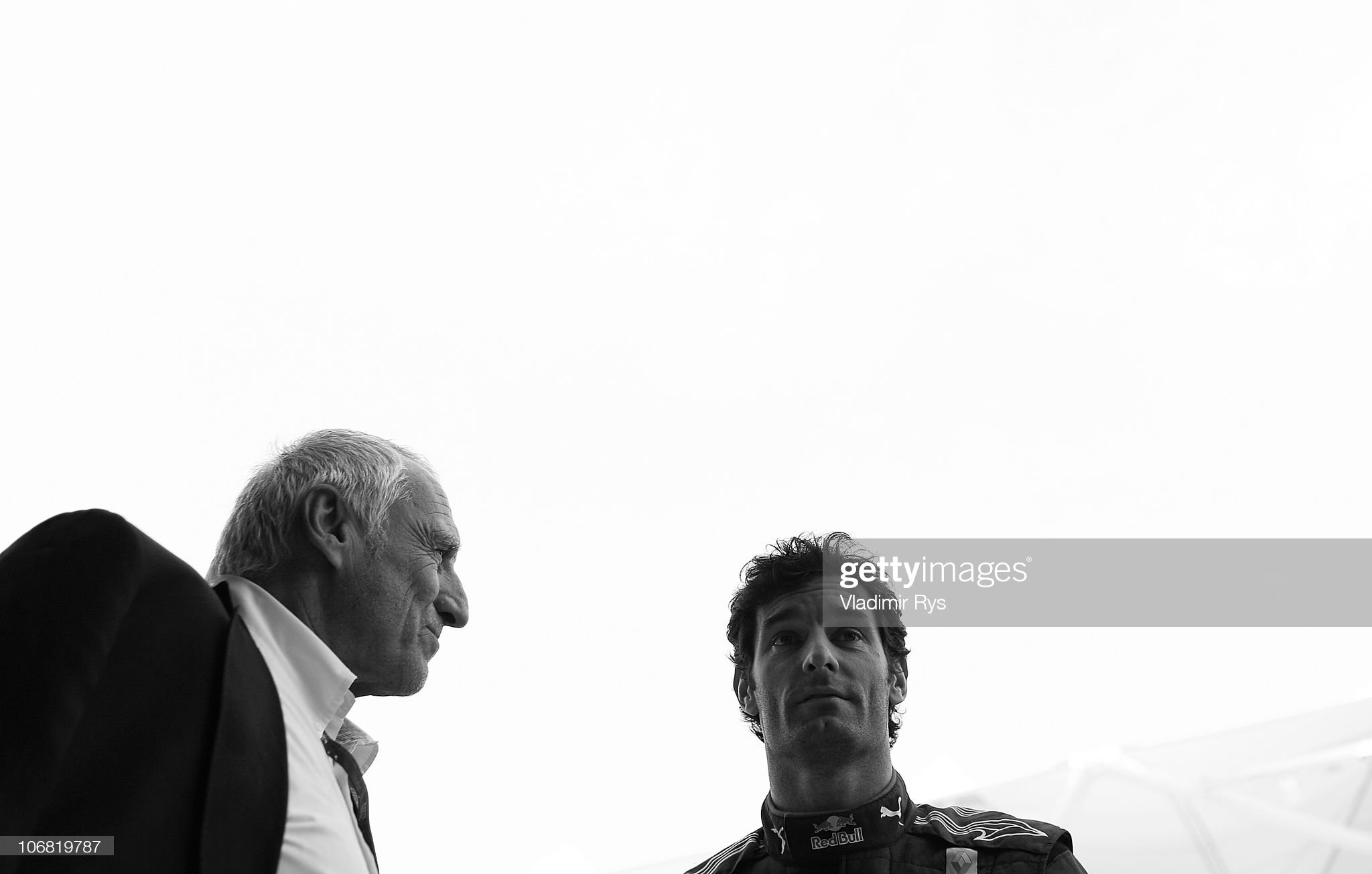
Mark Webber talks with Dietrich Mateschitz before the Abu Dhabi Formula One Grand Prix at the Yas Marina Circuit on November 14, 2010 in Abu Dhabi, United Arab Emirates. Photo by Vladimir Rys / Getty Images.
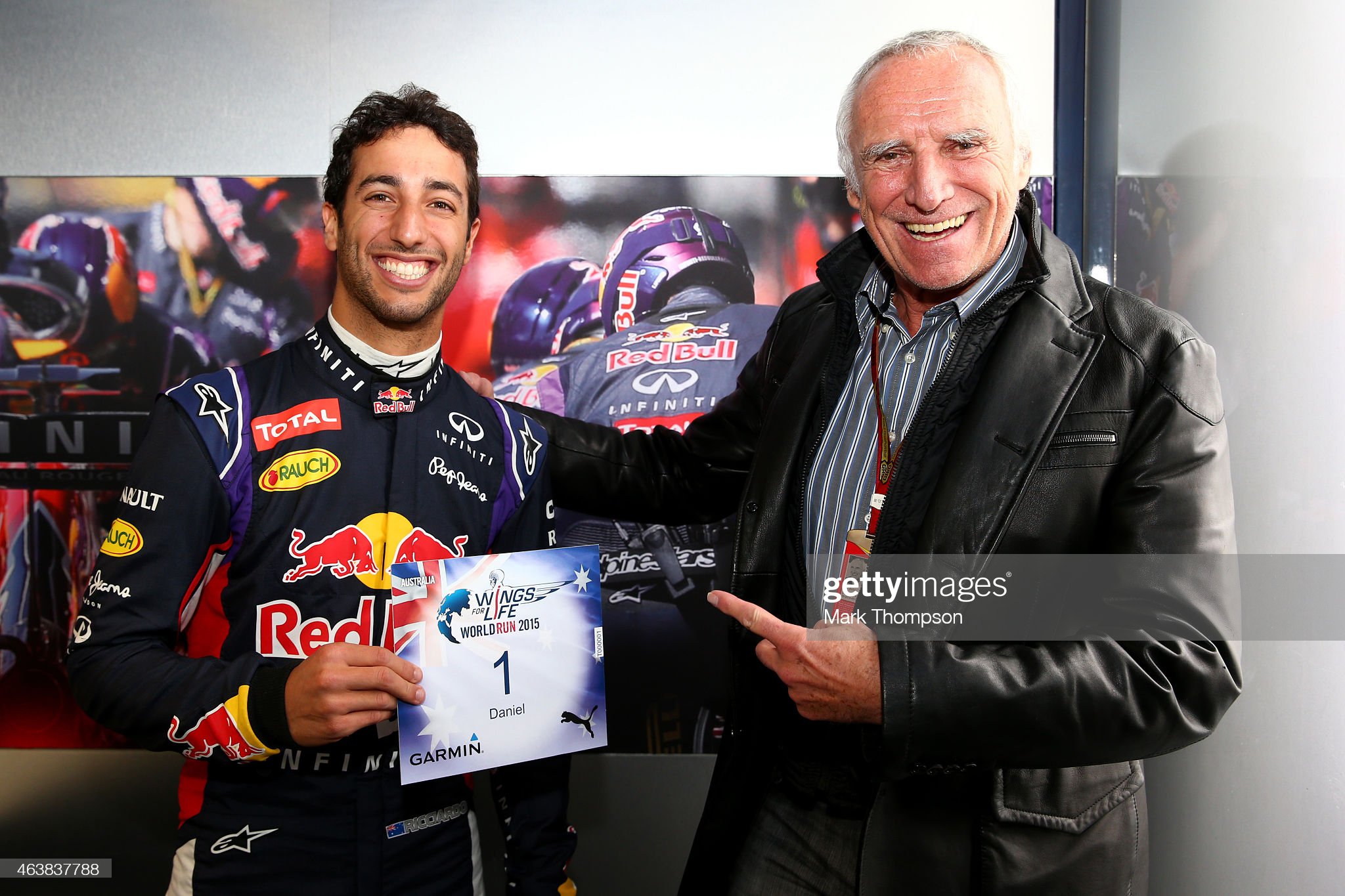
Red Bull Racing's driver Daniel Ricciardo of Australia receiving bib number 1 for the ‘Wings of Live World Run’ from team owner, CEO of the Austria energy drink producer Red Bull and founder of ‘Wings for Life’, a non profit spinal cord research foundation, Dietrich Mateschitz at Circuito de Jerez on February 03, 2015 in Jerez de la Frontera, Spain. The ‘Wings for Life World Run’ will take place simultaneously on 35 locations around the world on May 03, 2015. Photo by Getty Images.
As well as turning his energy drink into a market leader, the Austrian billionaire also founded one of the most successful Formula One teams in recent history.
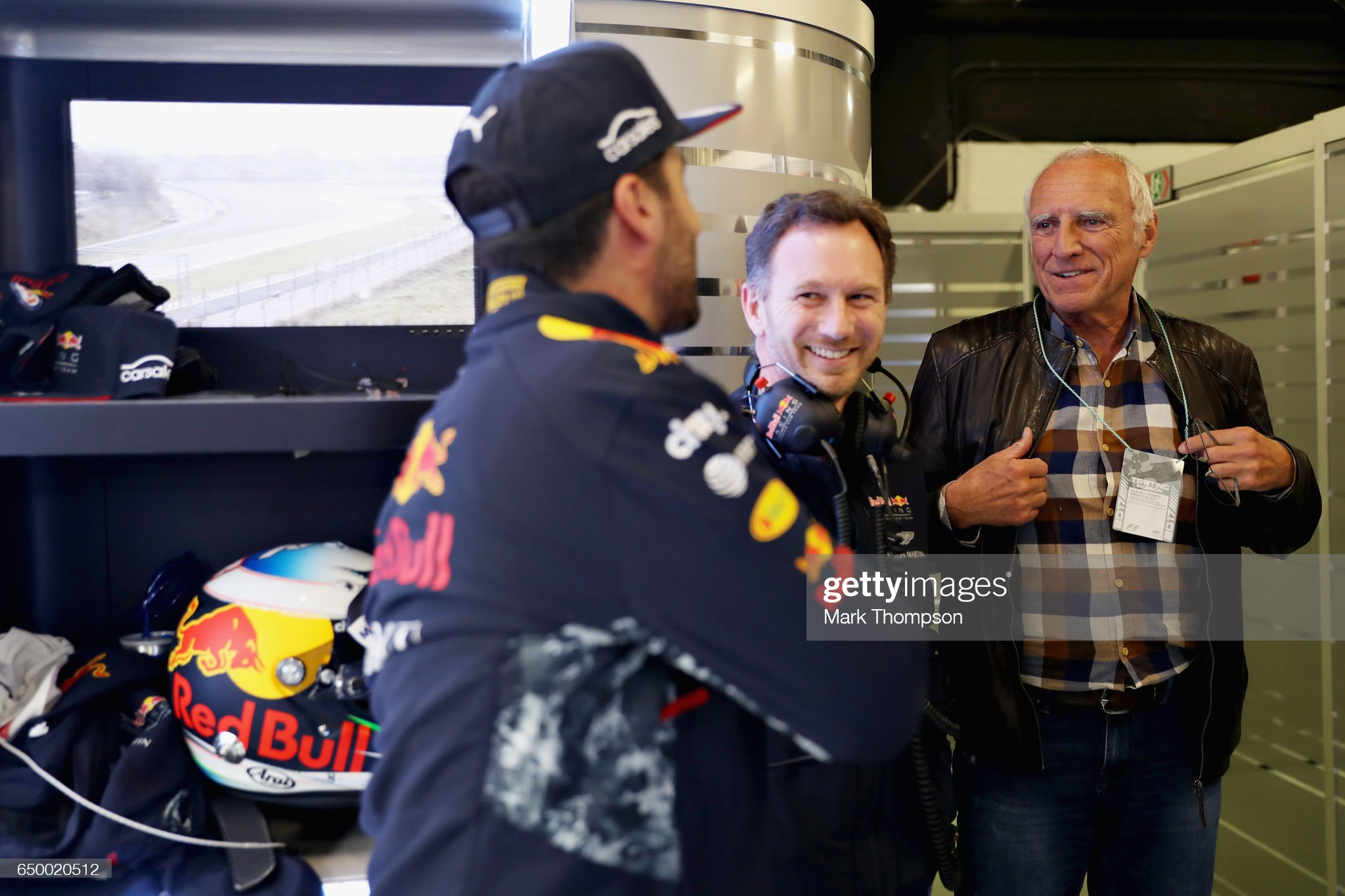
Dietrich Mateschitz, Christian Horner and Daniel Ricciardo talk in the garage during day three of Formula One winter testing at Circuit de Catalunya on March 09, 2017 in Montmelo, Spain. Photo by Mark Thompson / Getty Images.
“What he achieved and what he’s done for so many people around the world, across different sports, is second to none,” Christian Horner, Red Bull’s F1 team principal, told Sky Sports F1.
“So many of us have to be so grateful to him for the opportunities that he’s provided, the vision that he had, the strength of character and never being afraid to follow and chase your dreams.”
“That’s what he did here in Formula One, proving that you can make a difference … so many drivers, so many team members, so many people in this pit lane owe him so much.”
In 2004, Mateschitz bought the Ford-owned Jaguar team and the following season renamed it ‘Red Bull Racing’.
By 2010 the team was dominating the sport, with Sebastian Vettel winning the first of four successive drivers’ championships. The team also won the constructors’ title in each of those years.
The Austrian also bought the Italy-based Minardi F1 team and renamed it ‘Toro Rosso’ in 2006, the Italian for Red Bull. The team now competes as ‘AlphaTauri’, the company’s fashion brand and is a launchpad into the sport for young drivers.
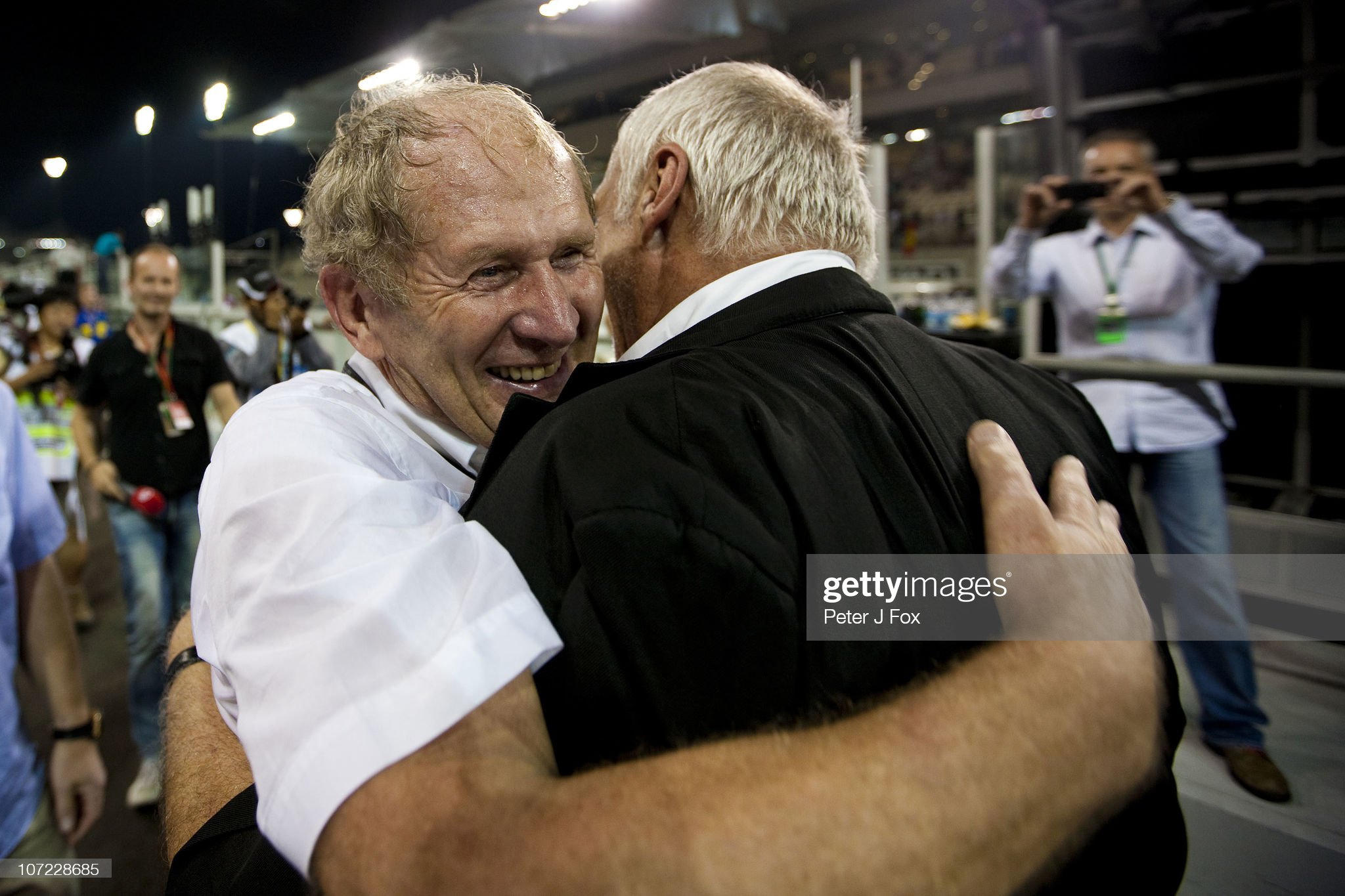
Dietrich Mateschitz celebrates with Helmut Marko of Red Bull and Austria during the Abu Dhabi Formula One Grand Prix at the Yas Marina Circuit on November 11, 2010 in Abu Dhabi, United Arab Emirates. Photo by Peter J. Fox / Getty Images.

Red Bull Racing Motorsport Consultant Helmut Marko with Red Bull Racing CEO Dietrich Mateschitz during the Spanish Formula One Grand Prix at Circuit de Catalunya on May 15, 2016 in Montmelo, Spain. Photo by Peter J. Fox / Getty Images.
After years of Mercedes dominance in recent years, Red Bull is back at the front of the grid with Max Verstappen sealing his second title at the Japanese Grand Prix earlier this month.
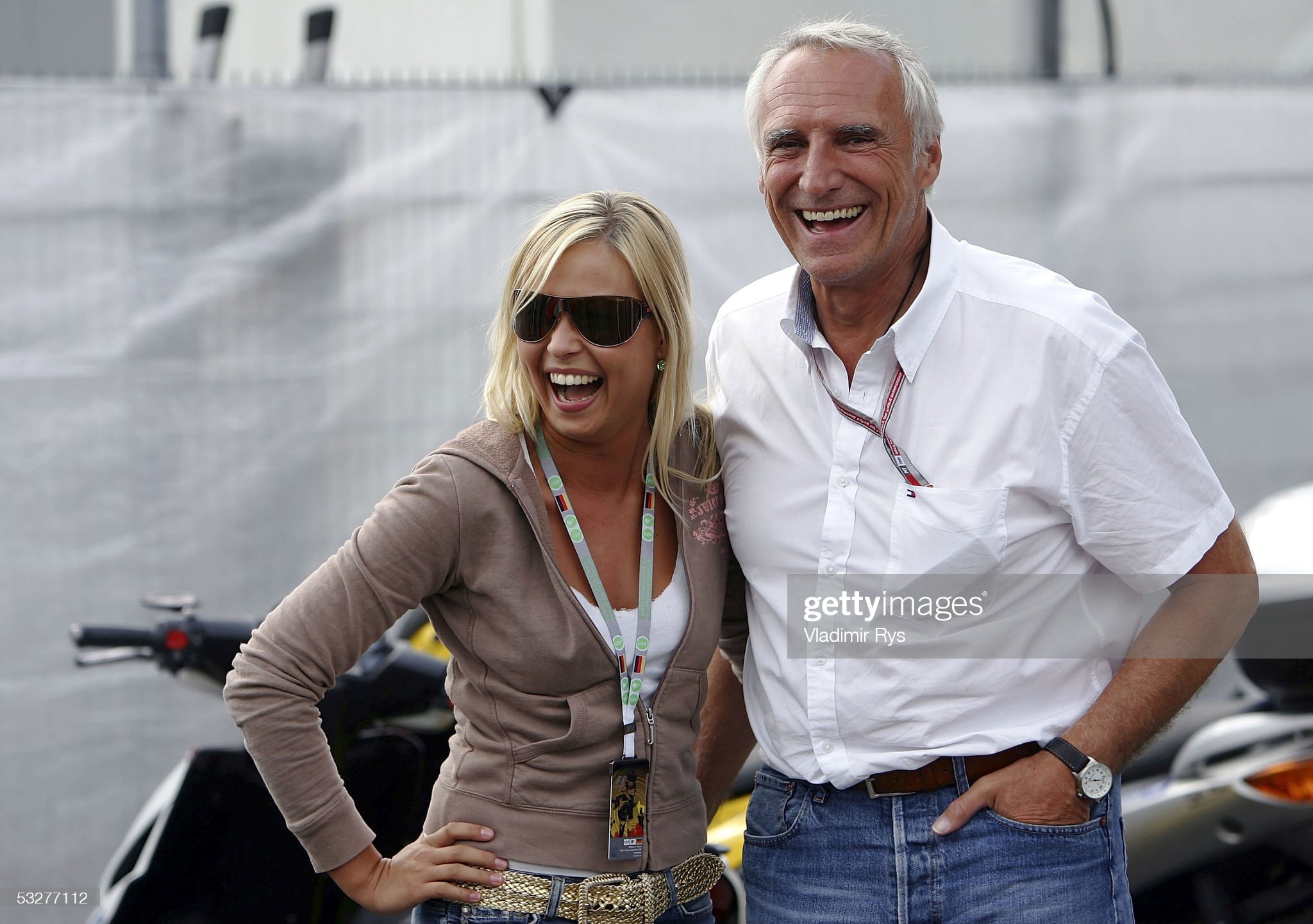
Dietrich Mateschitz chats with a woman in the paddock after qualifying for the German F1 Grand Prix on July 23, 2005 in Hockenheim, near Heidelberg, Germany. Photo by Vladimir Rys / Bongarts / Getty Images.
“I find it really incredible what he has done,” Verstappen, who made his F1 debut with Toro Rosso, told Sky Sports.
“Luckily I got to spend a little bit of time with him a few weeks back, which is now of course even more special.”
“It’s a big loss for all of us. Without him I wouldn’t be here today. What he’s done for me, in Formula 1 but also my whole life and the future ahead is massive. I cannot thank him enough for that and that’s why it’s a very difficult day for us.”
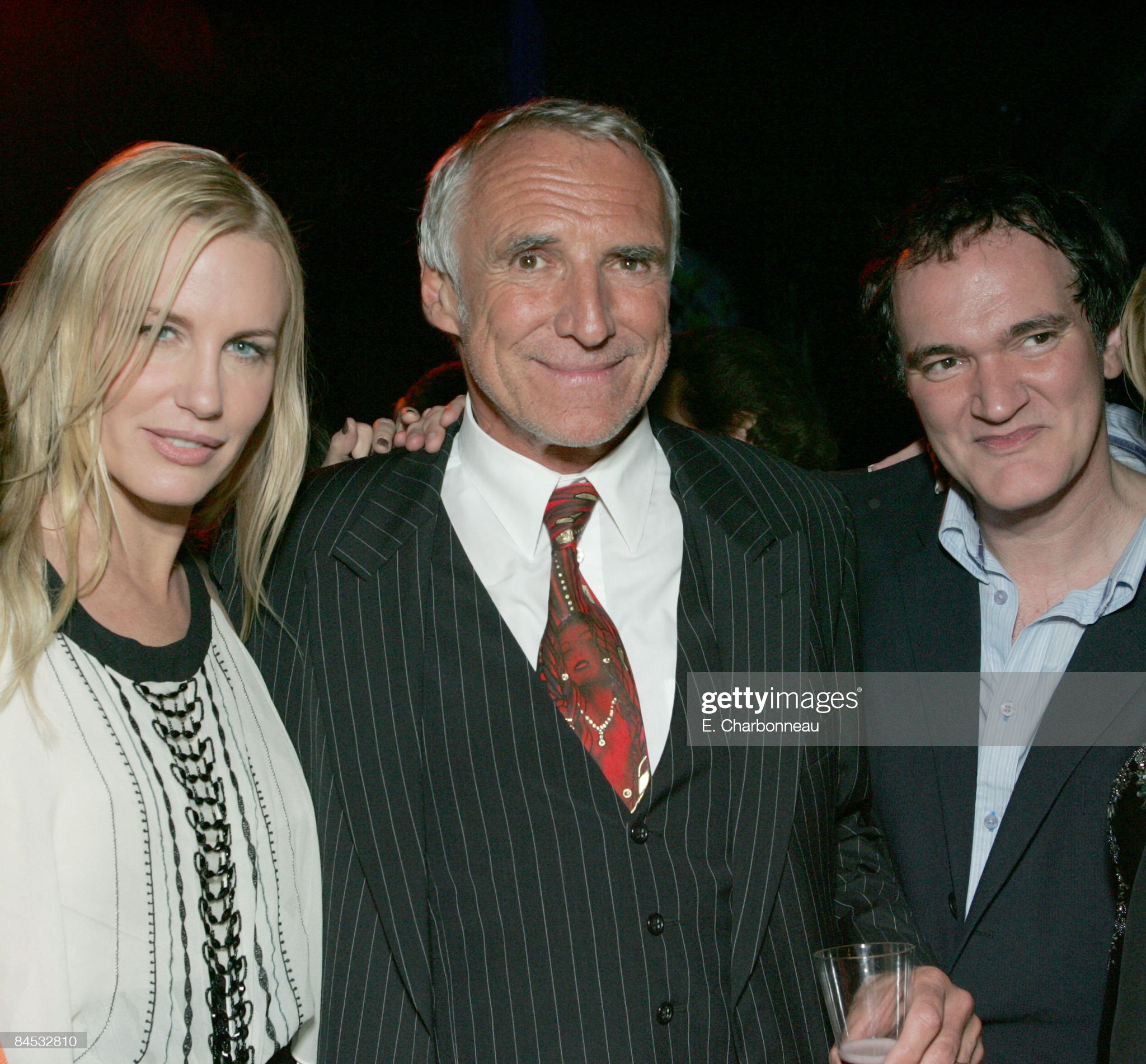
Daryl Hannah, Dietrich Mateschitz and Quentin Tarantino. Photo by E. Charbonneau / Wire Image for Stellar Quest PR and Consulting.
“I knew that he was feeling bad the last few weeks but to get the news today was extremely sad,” former Toro Rosso driver Carlos Sainz told Sky Sports.
“I want to send all my condolences to the Red Bull family, but also especially to his family that I also know.”
“He has been a super important guy for myself and without him I wouldn’t be in Formula 1.”
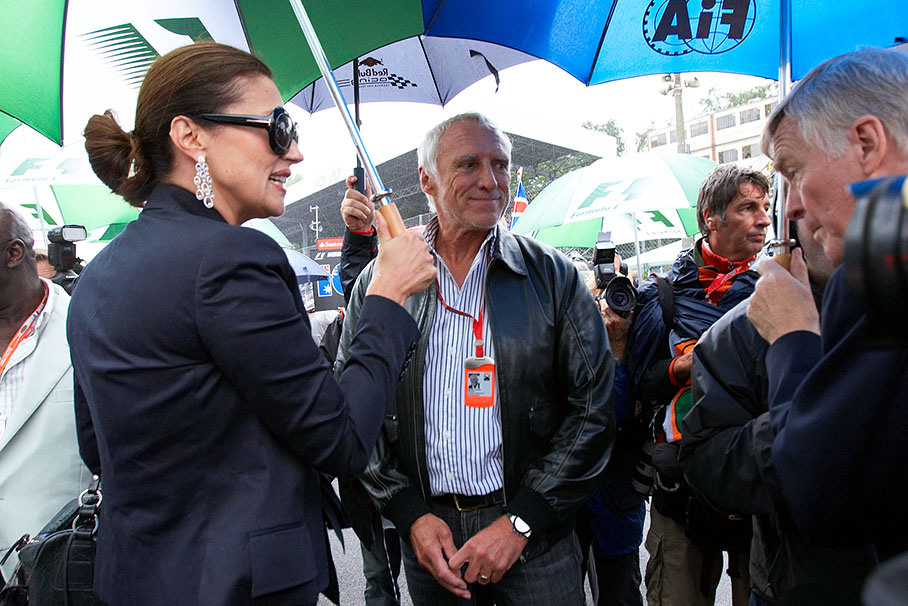
Dietrich Mateschitz and Slavica Ecclestone meet Max Mosley at Monza in 2008. Photo by Rainer Schlegelmilch.
Formula One chief executive Stefano Domenicali said in a statement: “I am deeply saddened by the news that Dietrich Mateschitz, a hugely respected and much-loved member of the Formula One family, has passed away.”
“He was an incredible visionary entrepreneur and a man who helped to transform our sport and created the Red Bull brand that is known all around the world.”
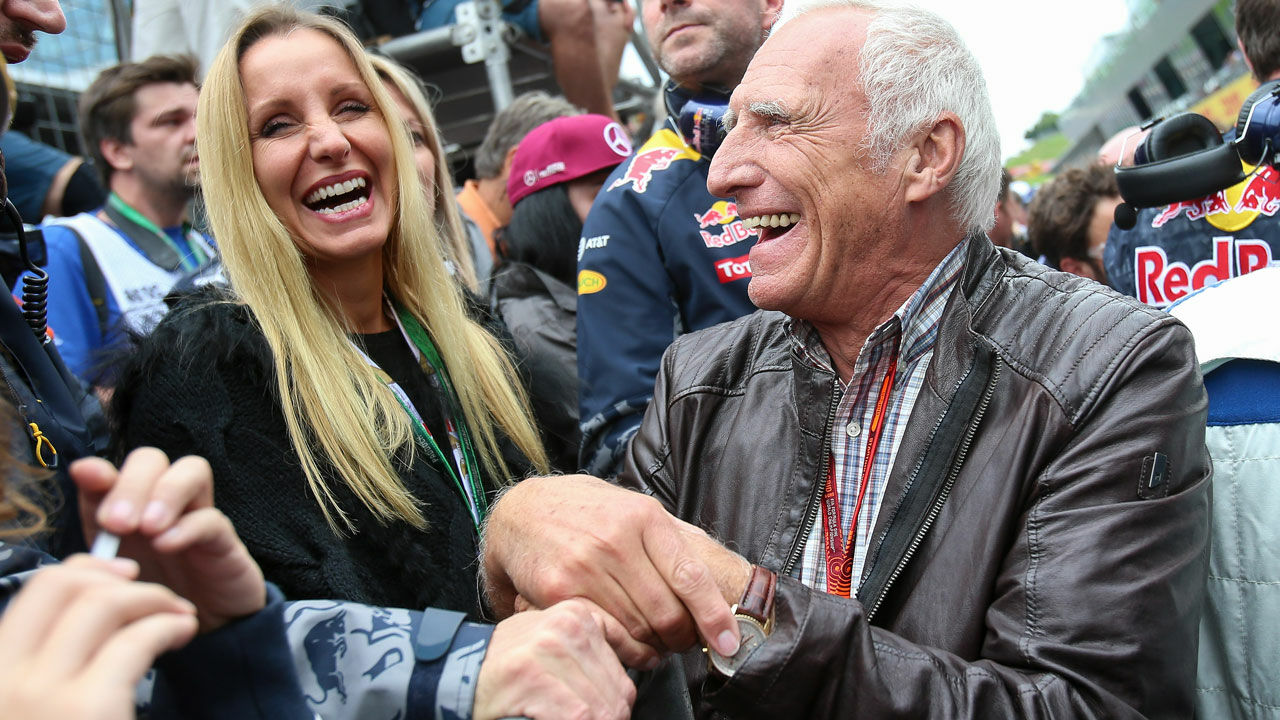
Dietrich Mateschitz talking with a woman circa 2017.
Under Mateschitz, Red Bull became known for its intensive marketing of extreme sports and events, including a 2012 record-breaking sky dive from the edge of space and also extended its sporting interest into football and ice hockey.
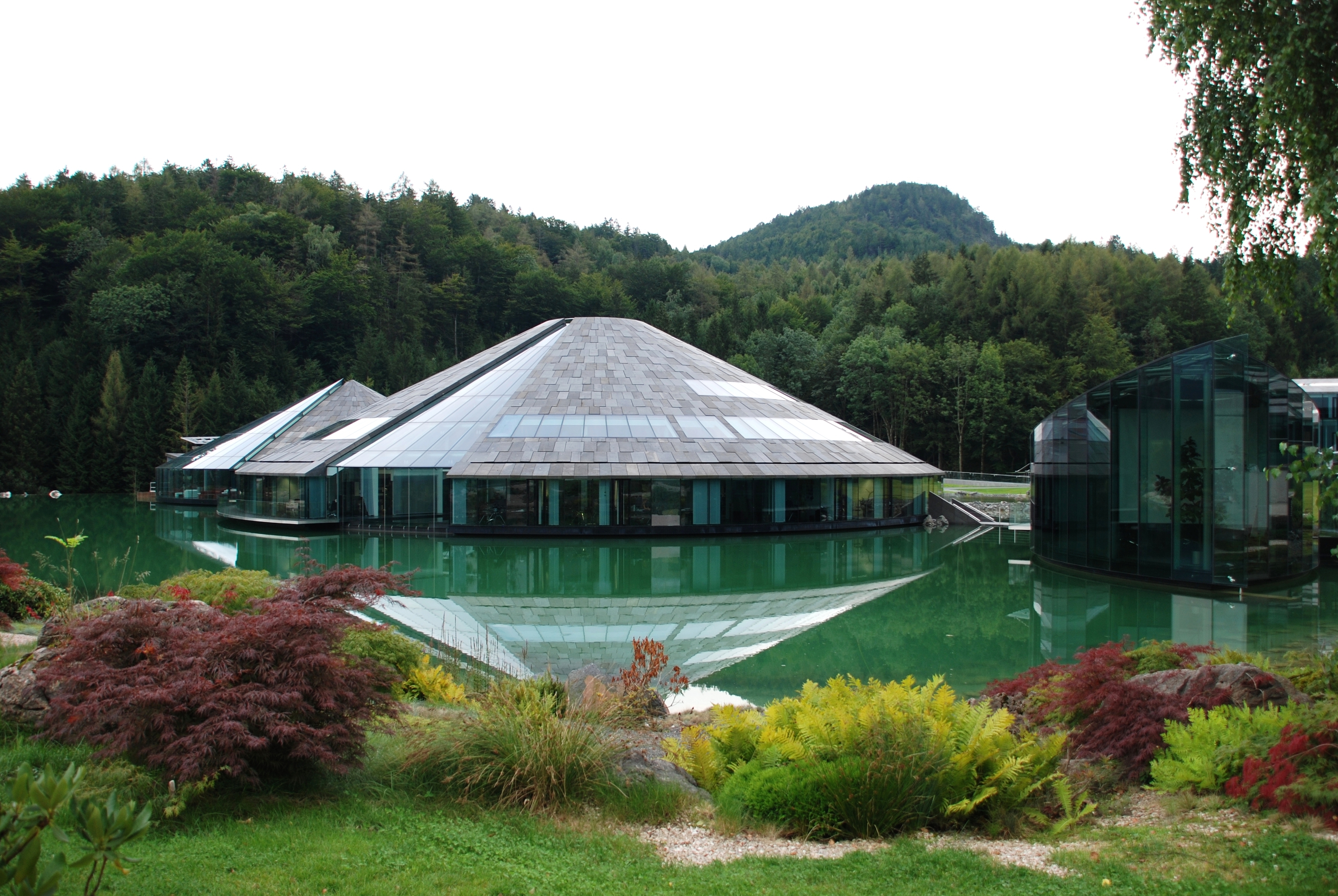
Red Bull headquarters in Fuschl am See, Austria. Photo by Dein Freund der Baum on August 26, 2009.
Red Bull teams are based in three locations in Salzburg: Fuschl am See, the Red Bull Base in Elsbethen and Wals-Siezenheim.
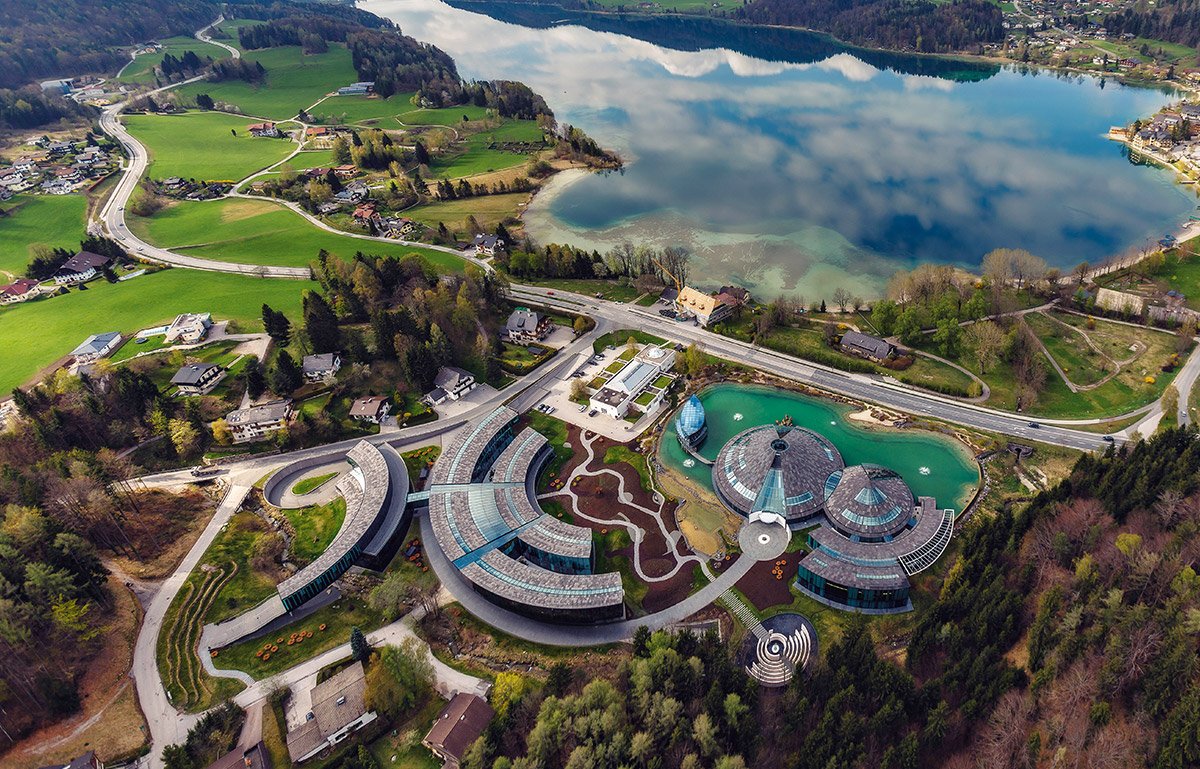
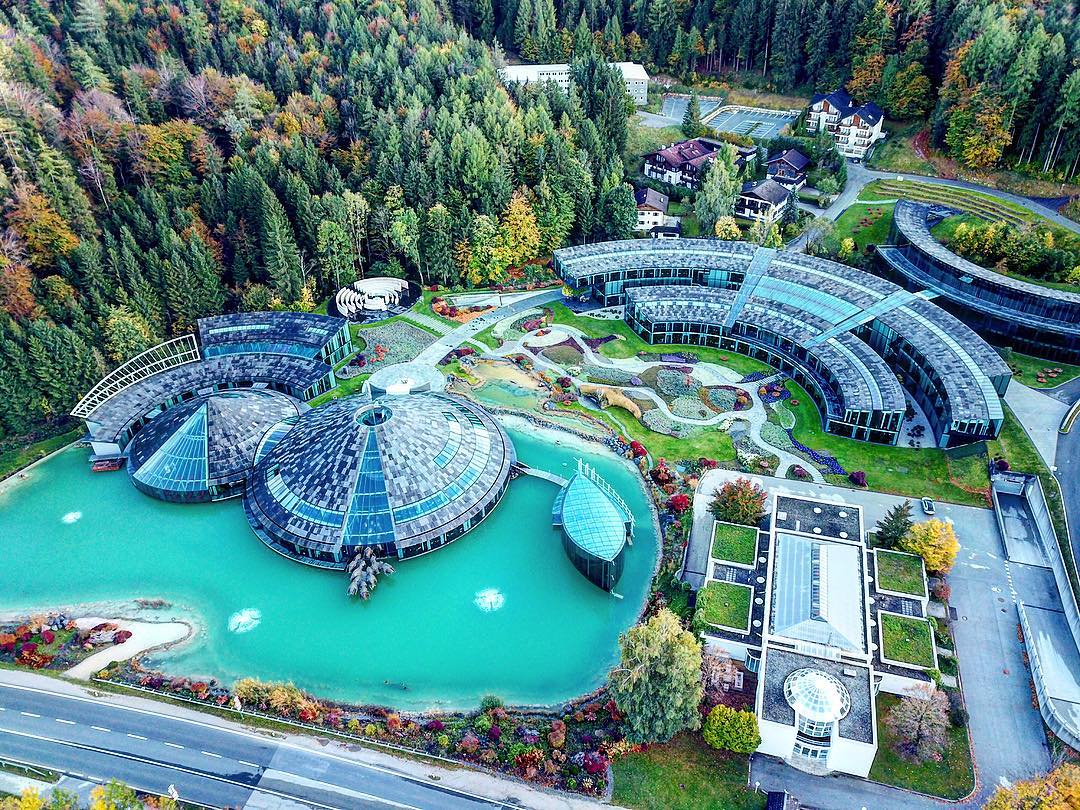
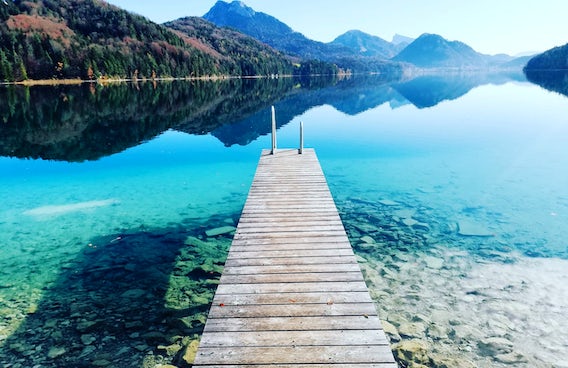
Red Bull has been Giving Wings to people and ideas from its headquarter’s location in Fuschl am See for over 35 years.
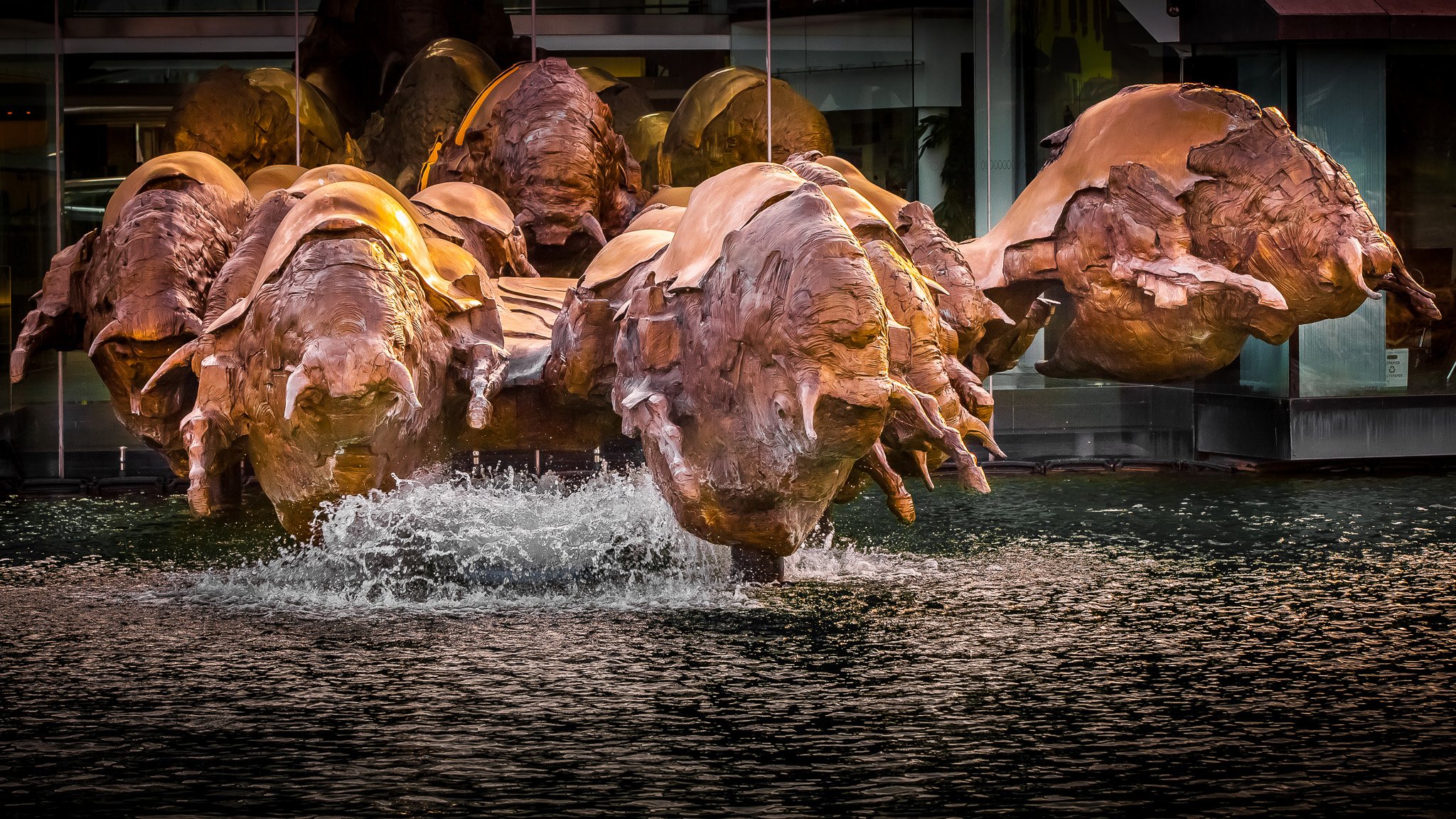
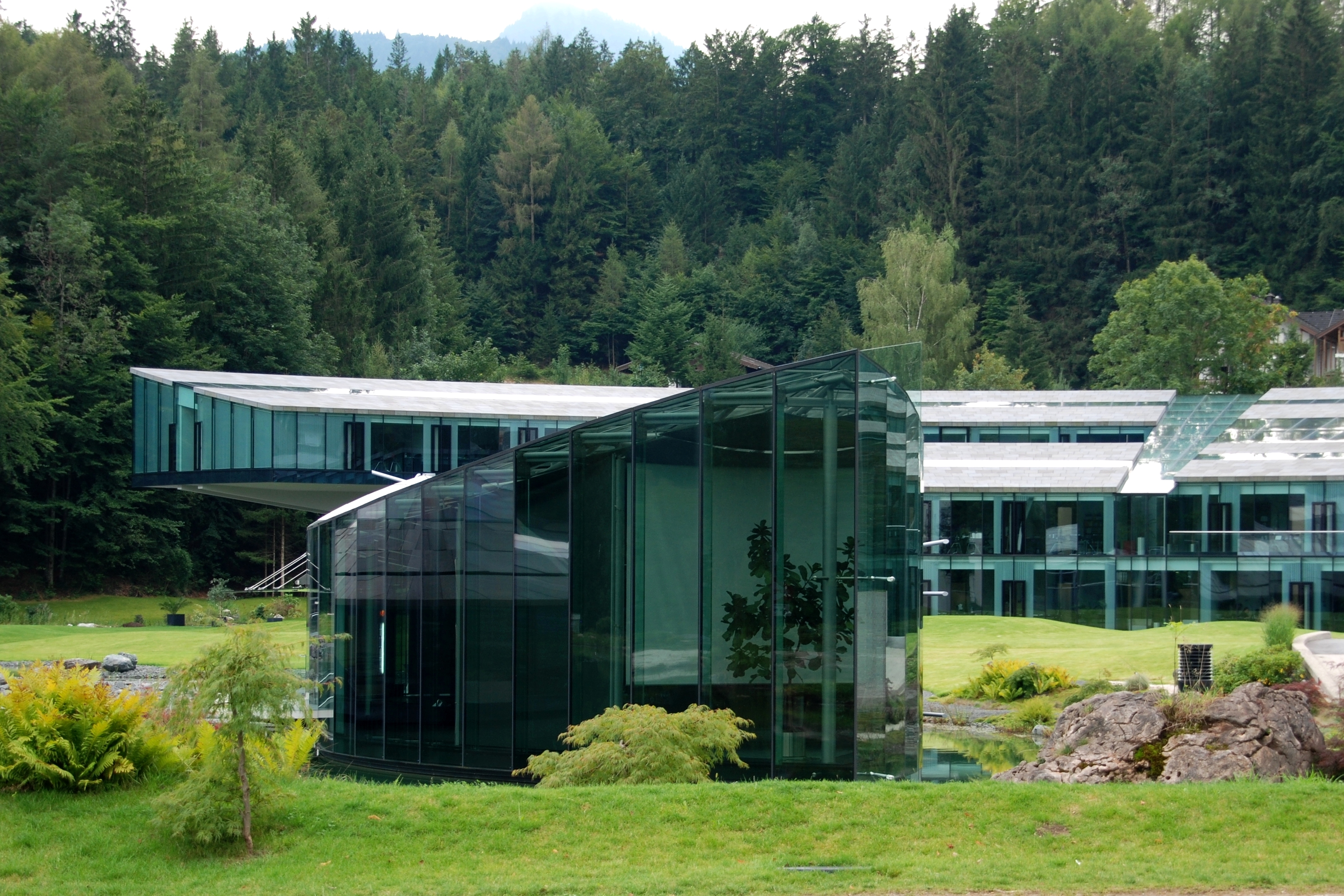
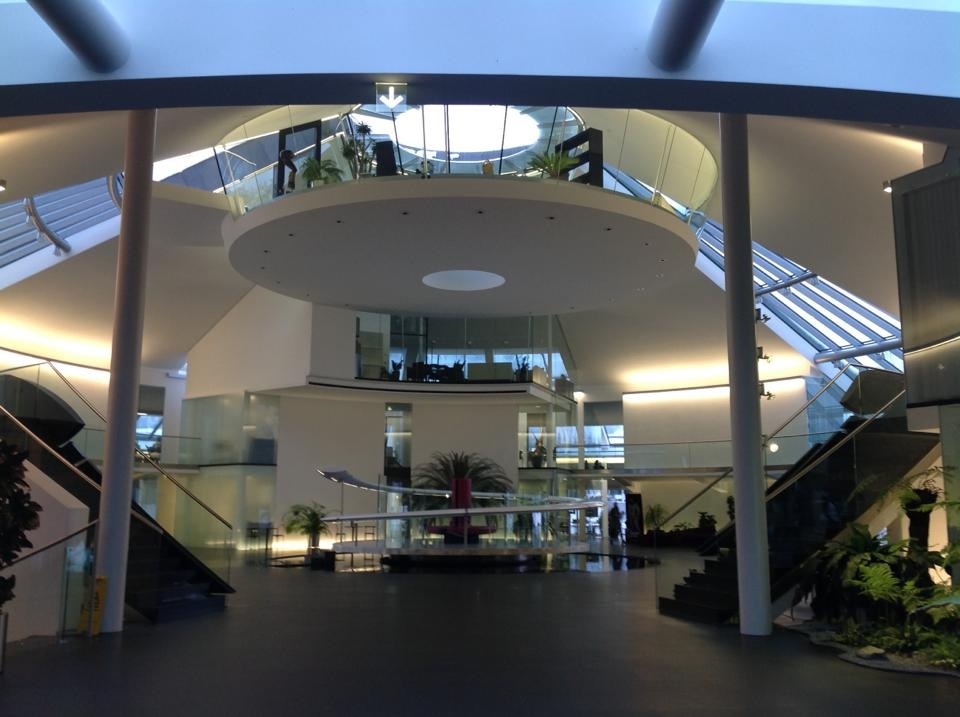
The workplaces reflect the brand culture: creative spaces that stimulate collaboration and interaction; offices designed to promote focus and concentration; fully connected meeting rooms that enable seamless communication with colleagues in the building and around the world; facilities that support daily lives (changing rooms, bike storage) as well as lunch spots, local hikes and lakeside areas where to come together to socialise and celebrate.
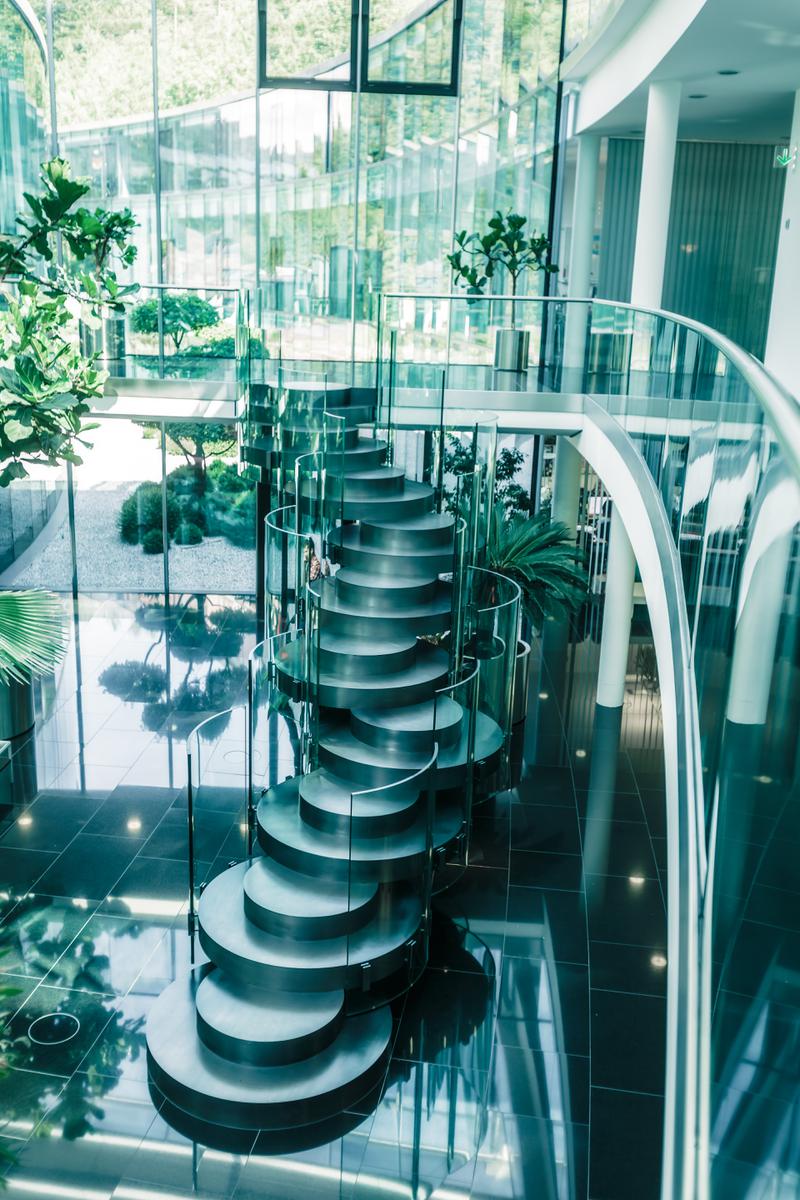
The architectural office buildings, surrounded by crystal clear lakes and mountains, are a great spot for lunch time swims or training for the next Wings for Life World Run on the trails around the lake.
Fuschl surroundings offer short hikes and tall peaks for the mountain go-ers and during winter, after work ski-touring is just a few minutes from the office.
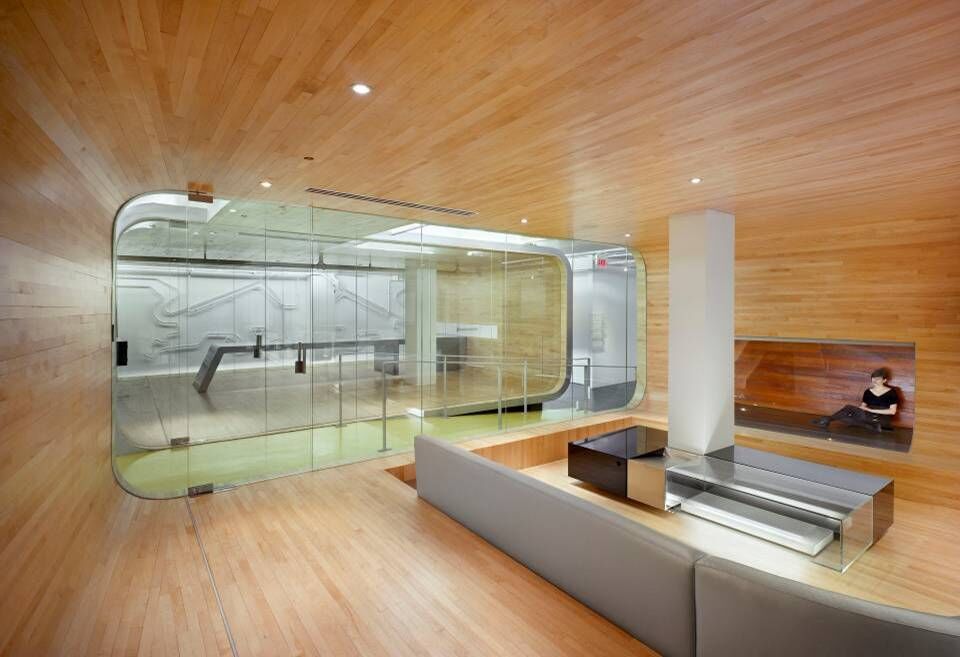
Red Bull Canada headquarters.
Red Bull has other offices around the world.
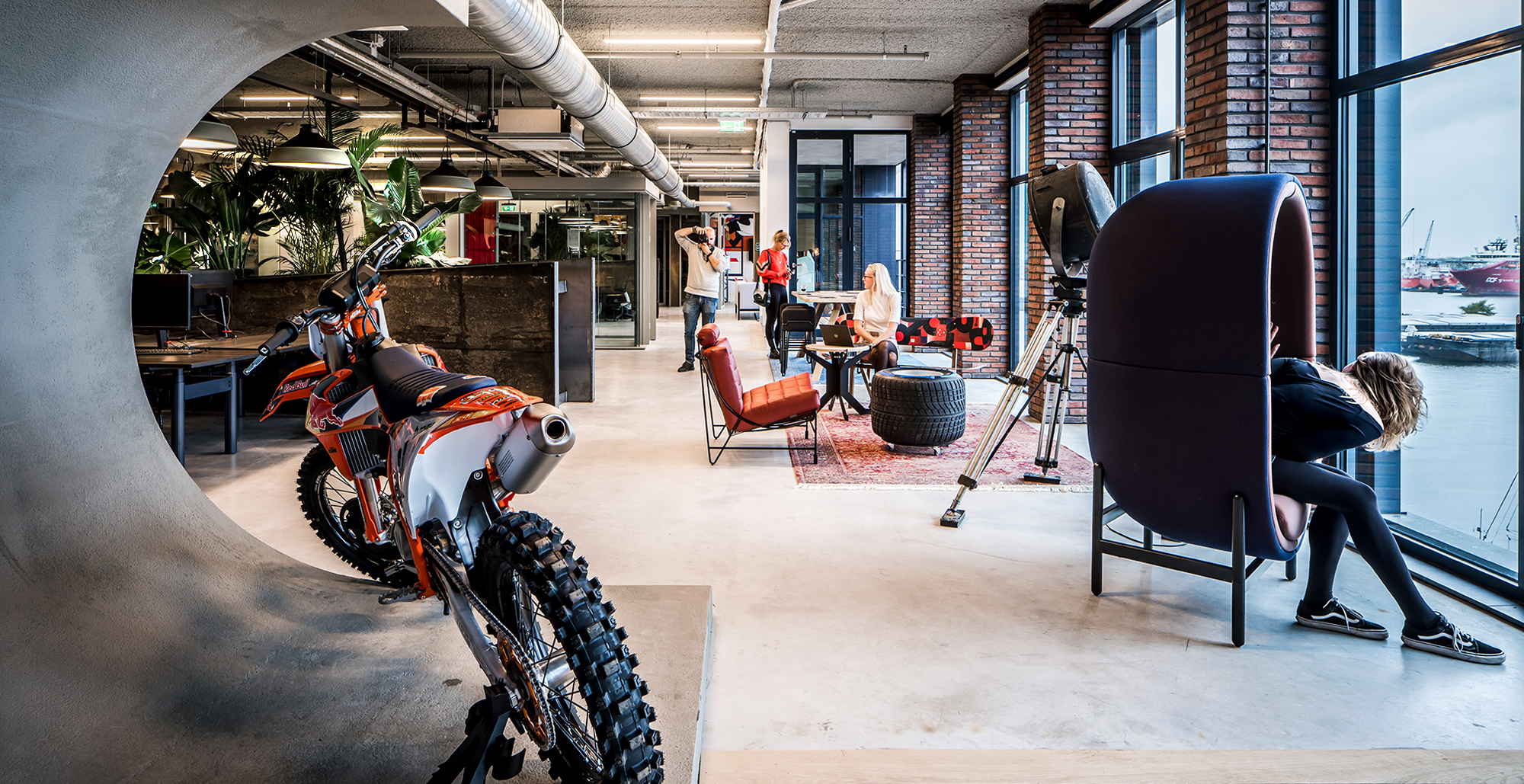
It’s buzzing around: offices will get a new dynamic set-up. Casper Schwarz wrote a whitepaper about this titled “The Habitoor”, describing the new home base of an organization. Red Bull Netherlands embraces this idea and chooses the approach to have their new Habitoor beating working at home in every possible way. A natural working environment with a human face. Casper Schwarz Architects designed the first new Habitoor for Red Bull in Amsterdam.
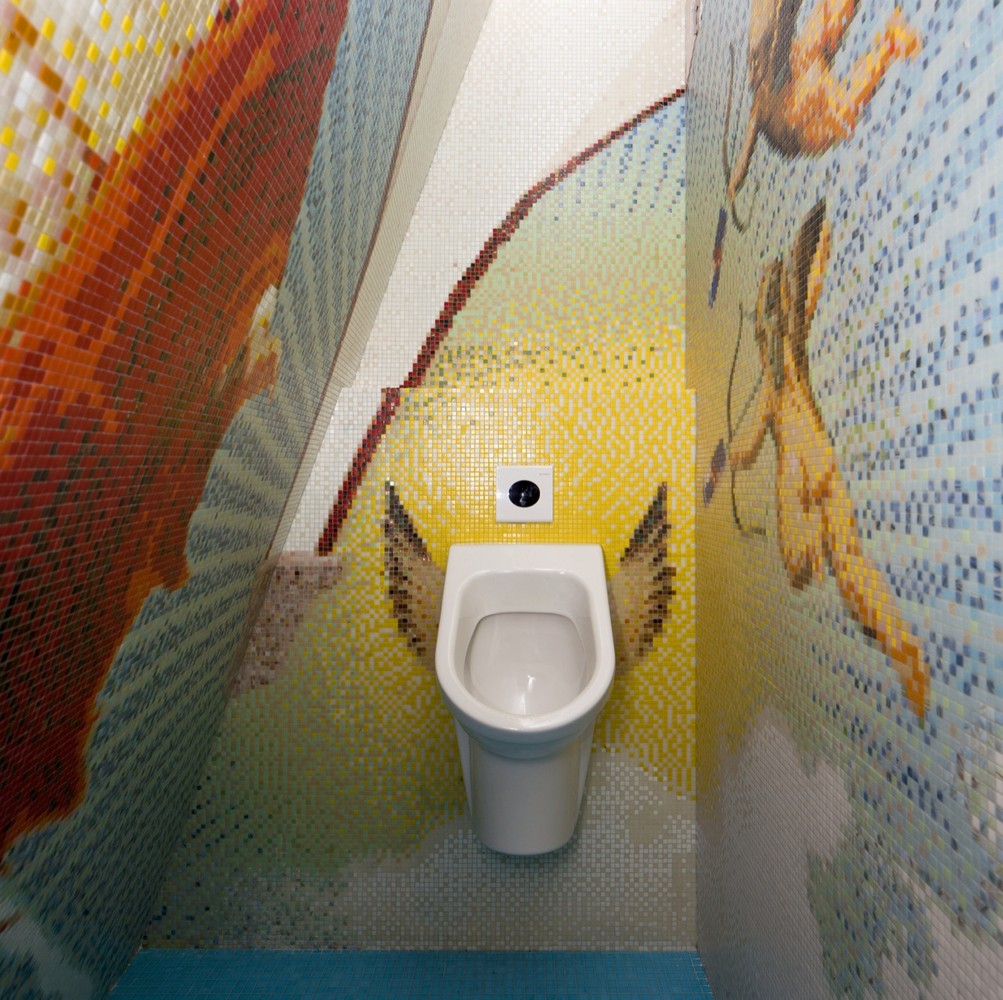
Red Bull headquarters in Amsterdam / Sid Lee Architecture.
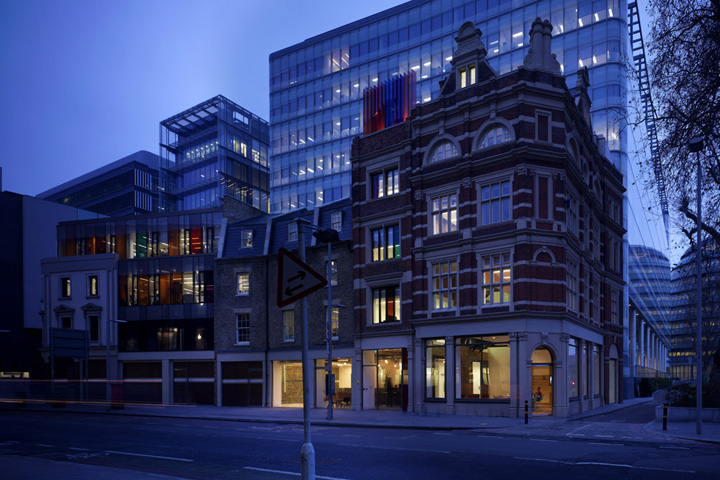
Red Bull Head Office in London by Morey Smith. The brief for Red Bull’s new headquarters was to create a dynamic, brand-led work environment that would match the vision of Red Bull, reward its staff and welcome visitors. Central to the brief was the desire for the design to reflect Red Bull’s involvement in sport, music and the arts.
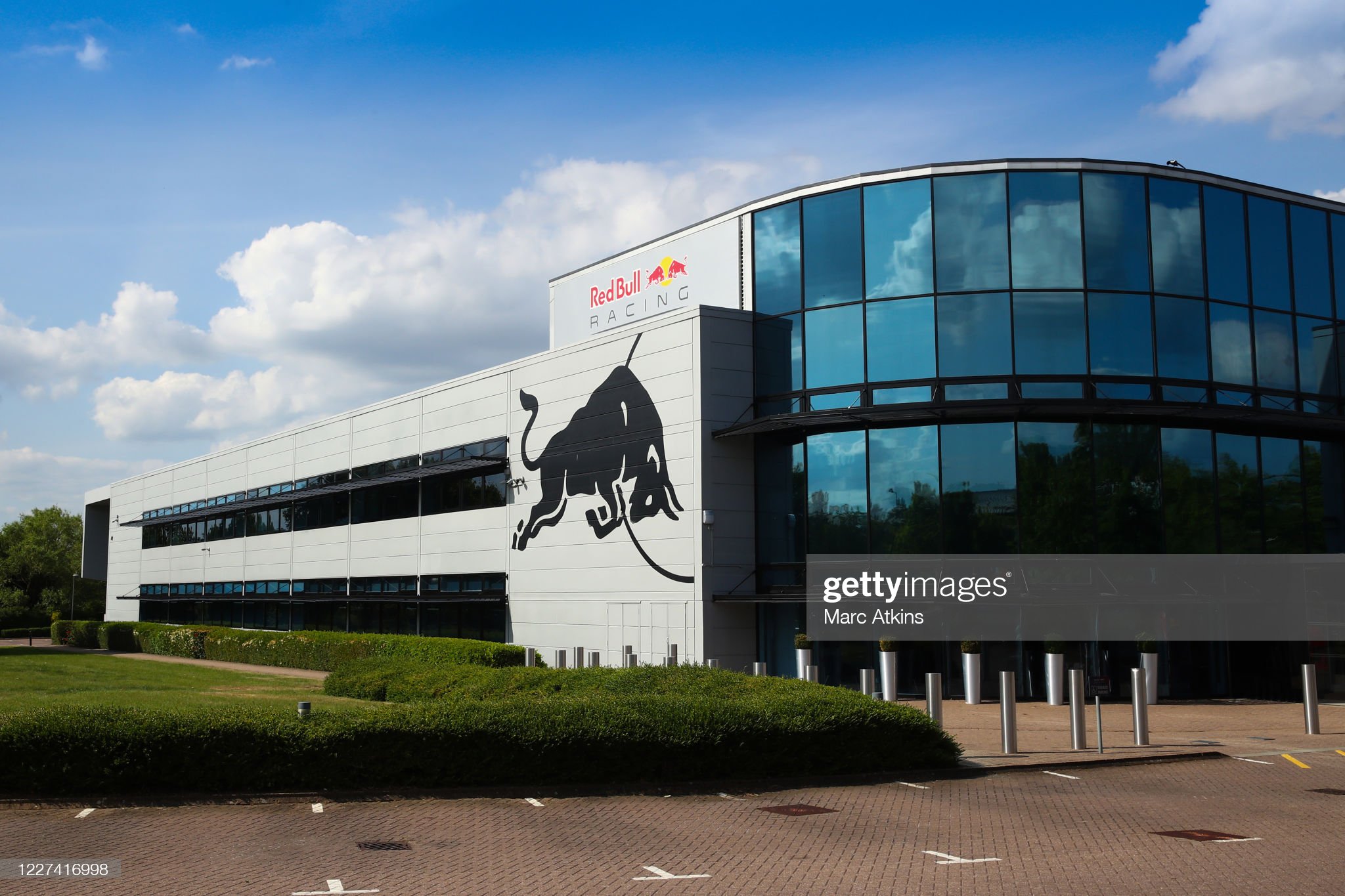
A general view of the Red Bull F1 Racing team headquarters in Milton Keynes, United Kingdom, on May 27, 2020. Photo by Marc Atkins / Getty Images.
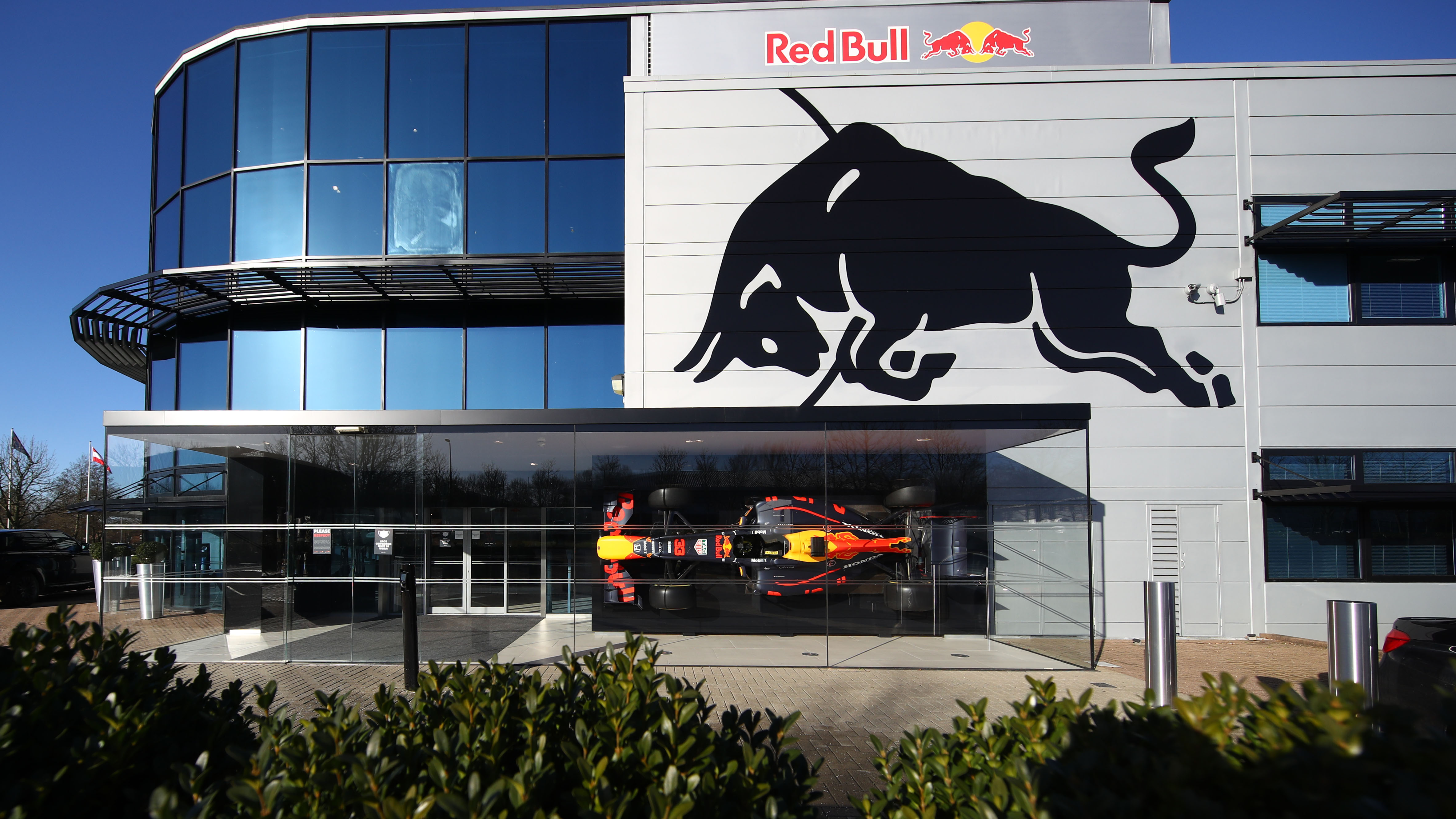
Videos



Comments
Authorize to comment